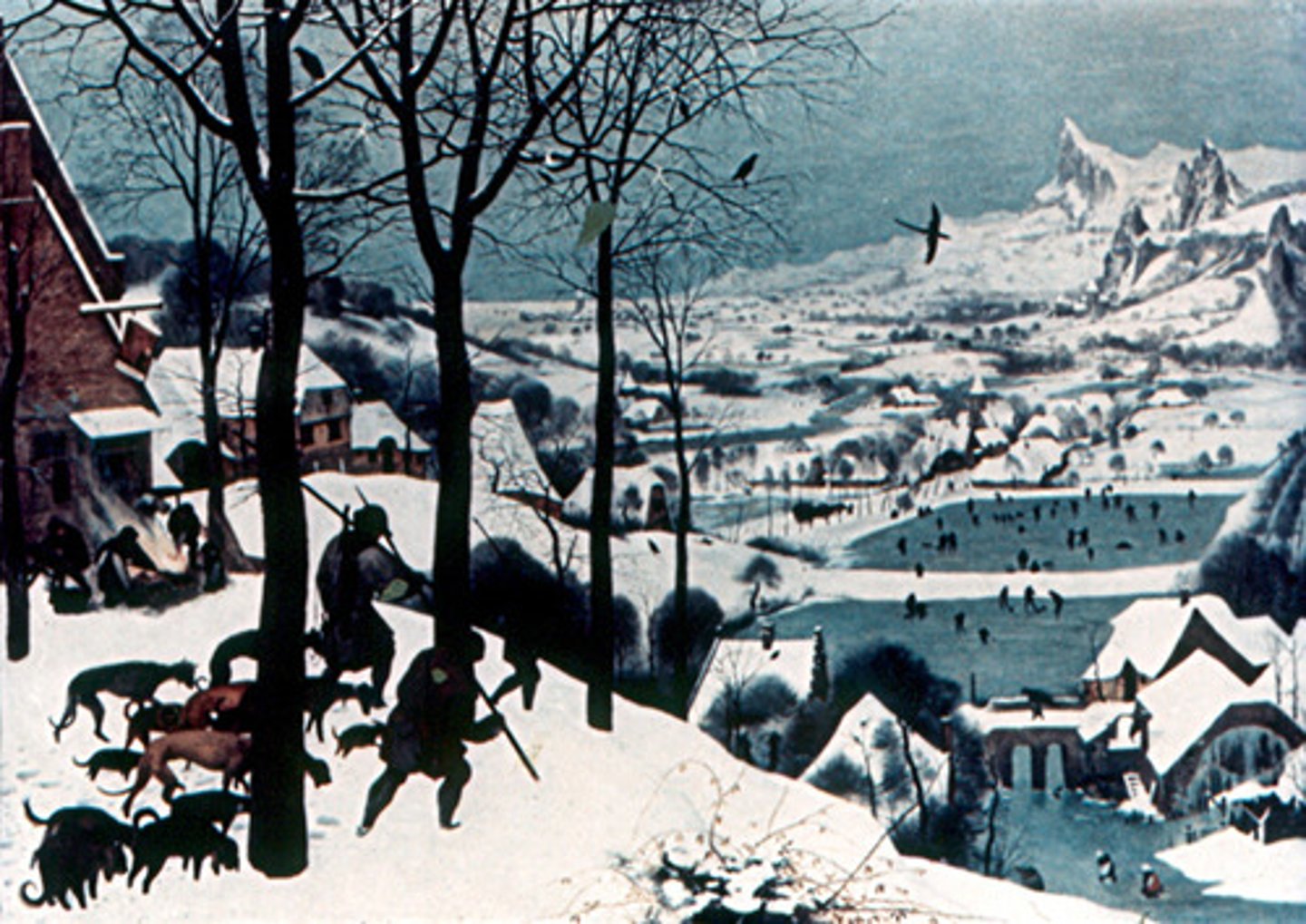Art History: Renaissance Art
1/98
There's no tags or description
Looks like no tags are added yet.
Name | Mastery | Learn | Test | Matching | Spaced |
|---|
No study sessions yet.
99 Terms
Cimabue, Virgin and Child Enthroned, 1280
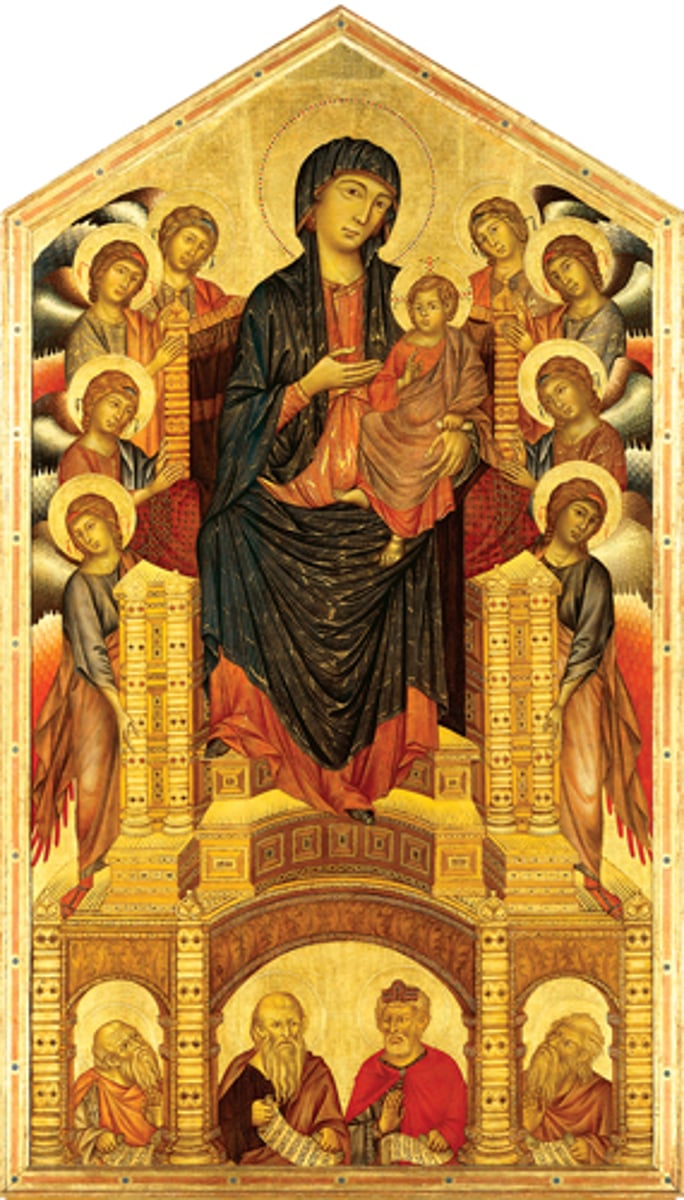
Giotto, Virgin and Child Enthroned, 1305
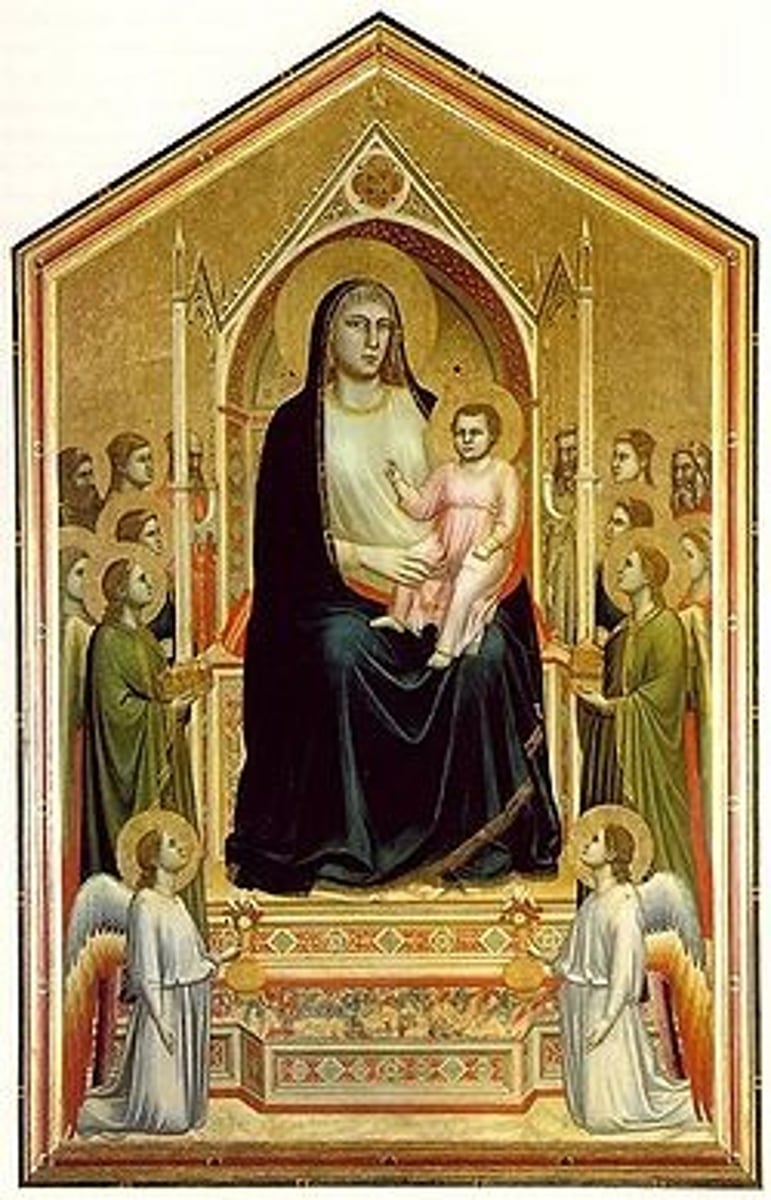
Giotto, Scrovegni (Arena) Chapel, 1305
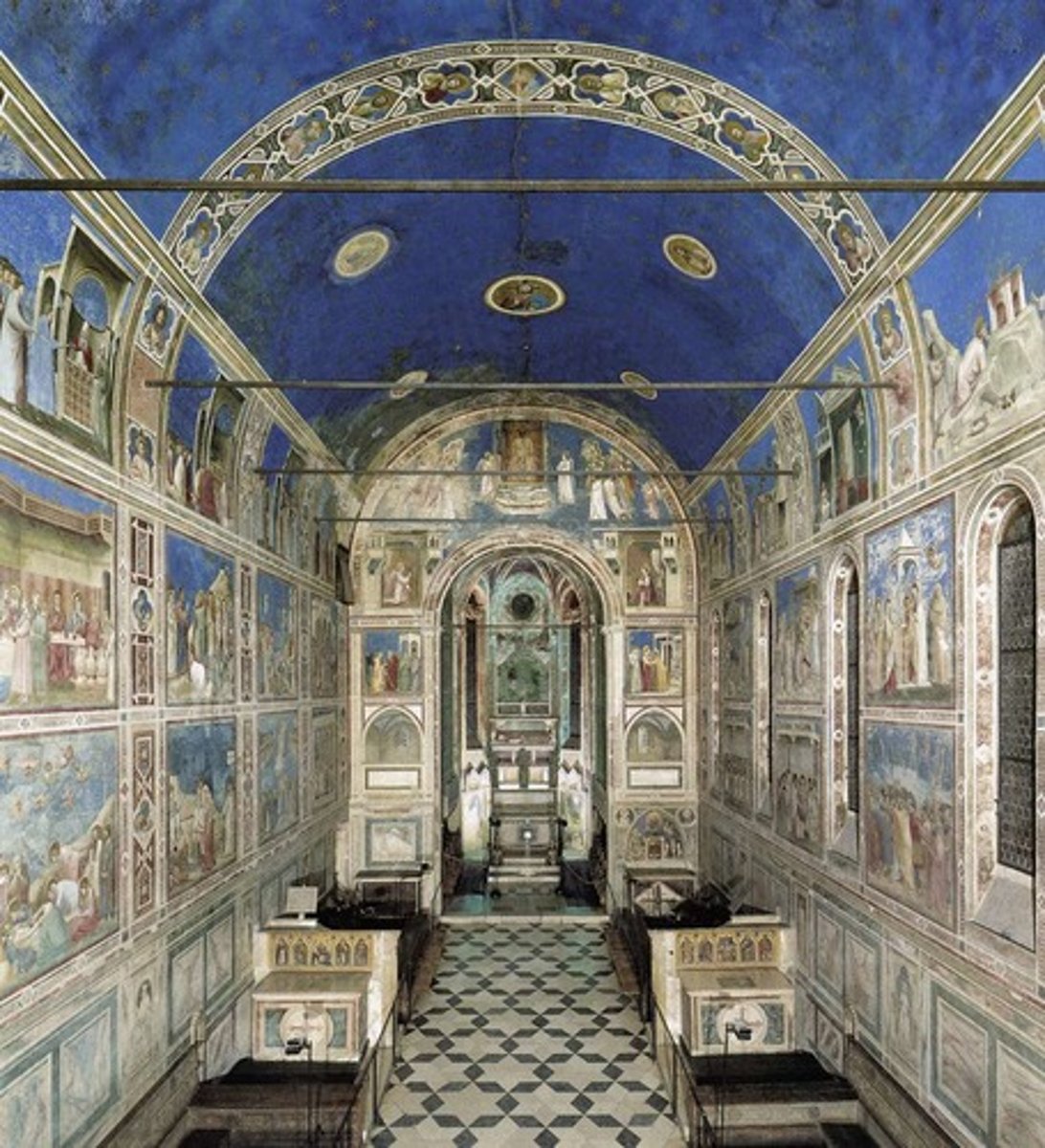
Simone Martini, Annunciation, Sienna Cathedral, 1333
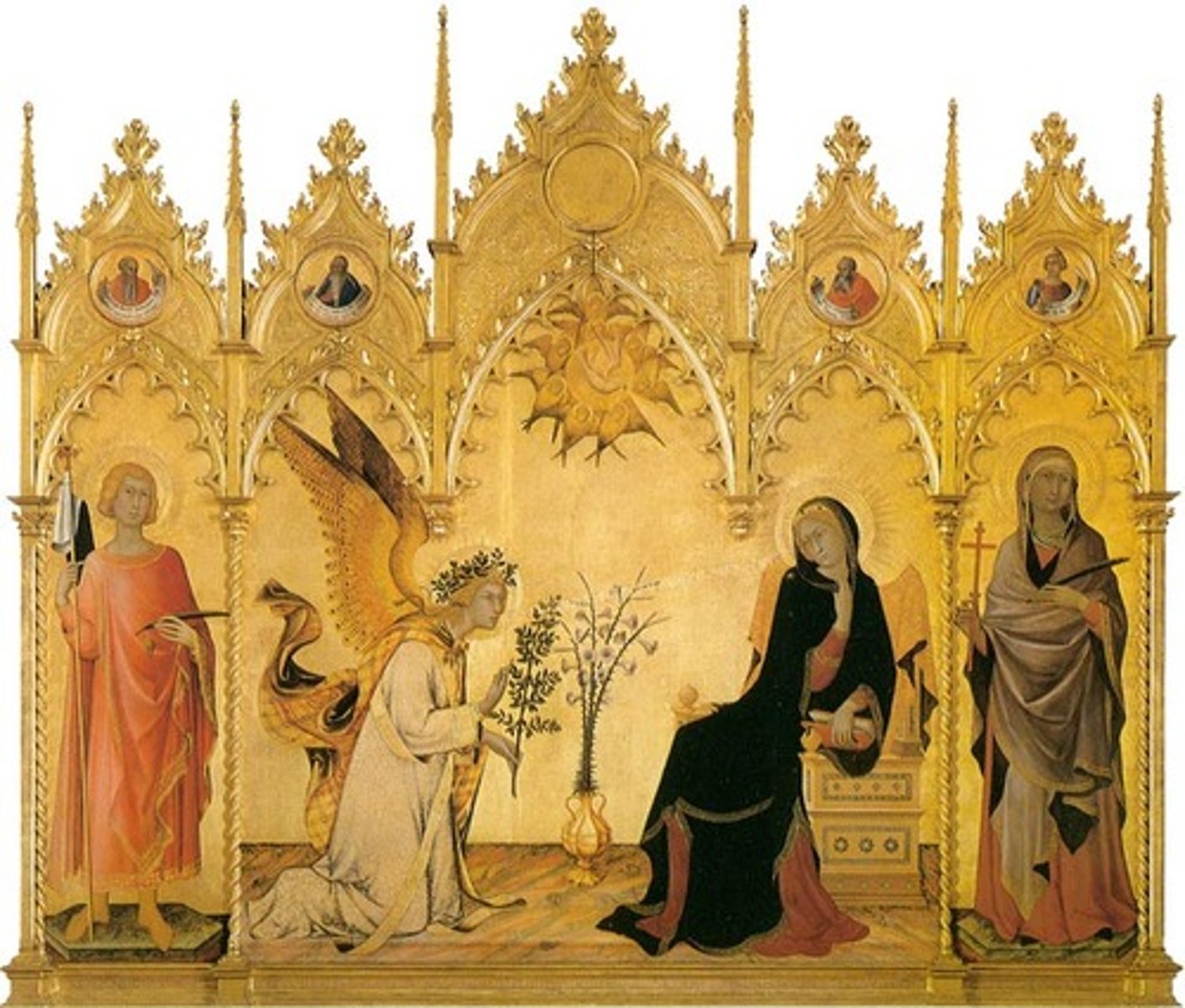
Vesperbild (Pieta), Germany, 1330
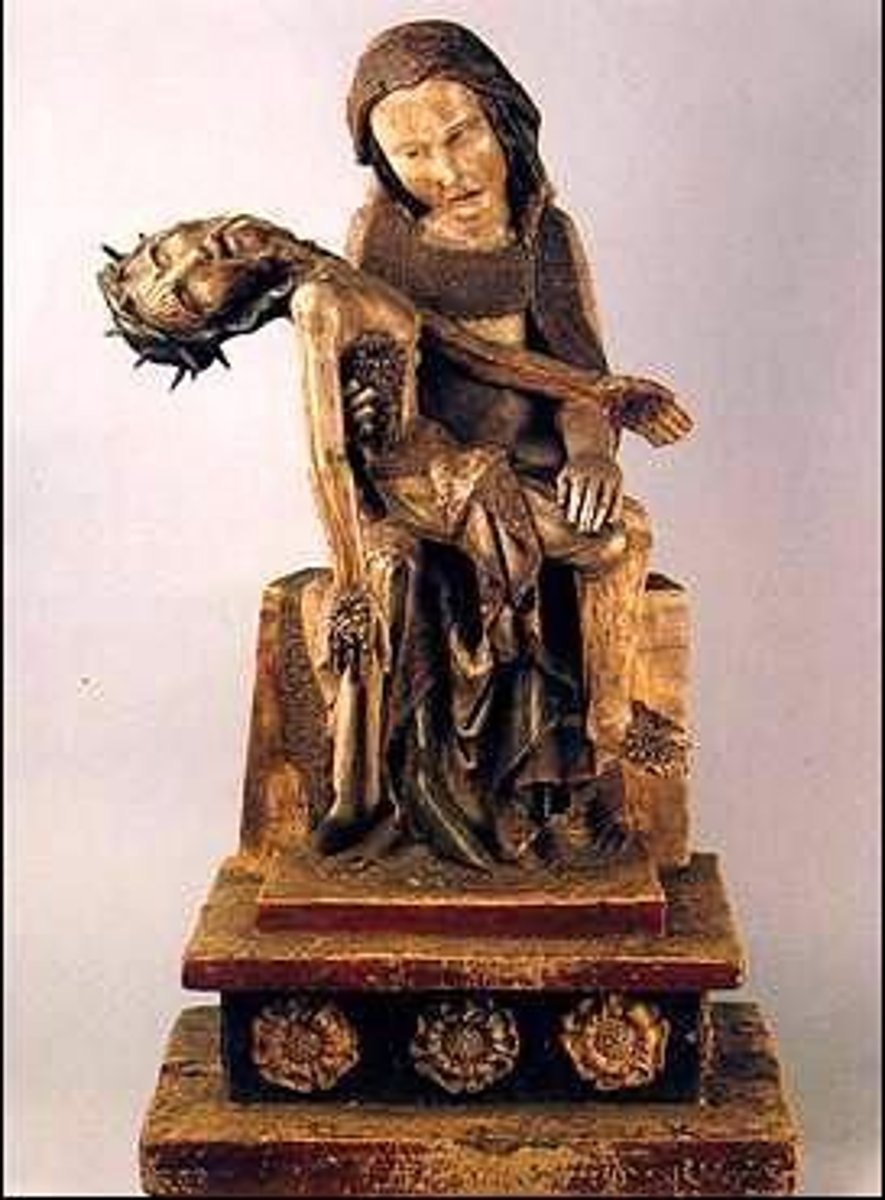
Jan van Eyck, Double Portrait of Giovanni Arnolfini and his Wife, 1434
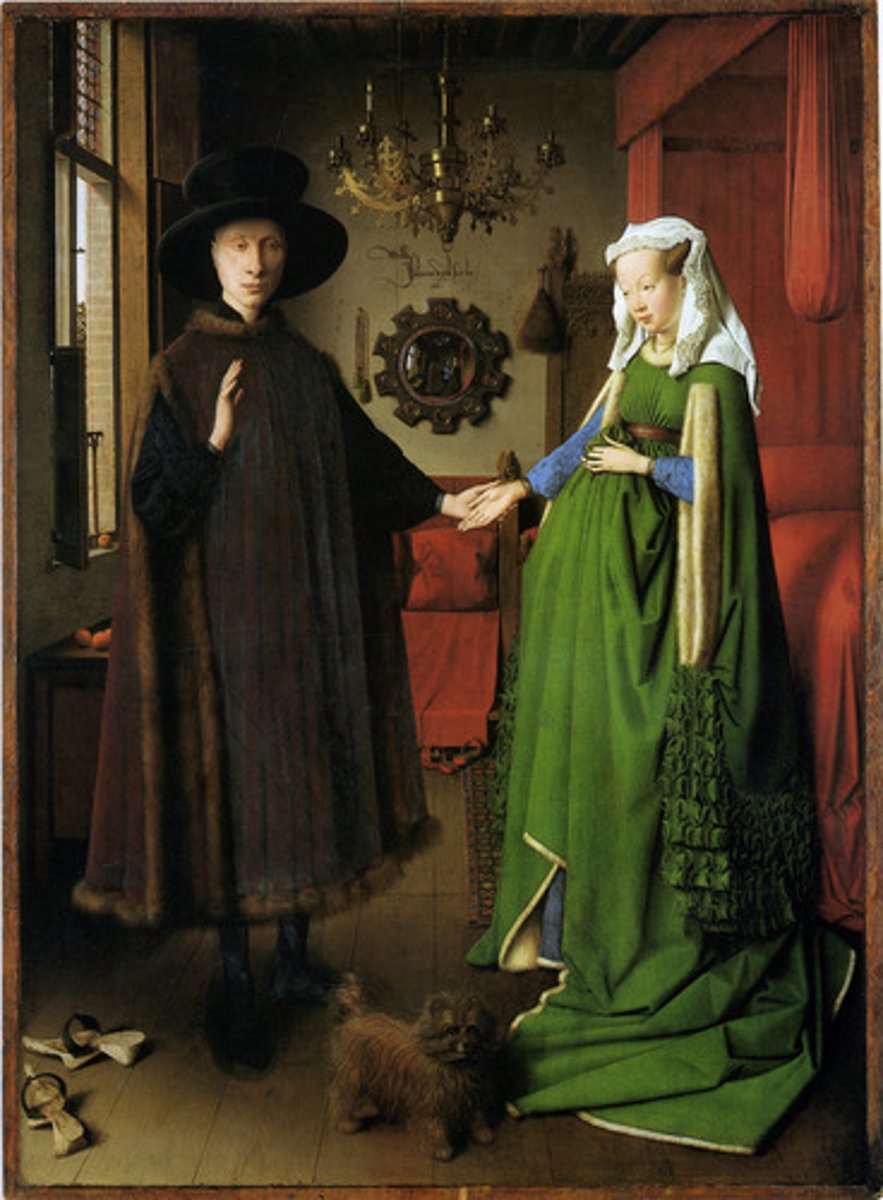
Limbourg Brothers, January of "Les Tres Riches Heures," 1411
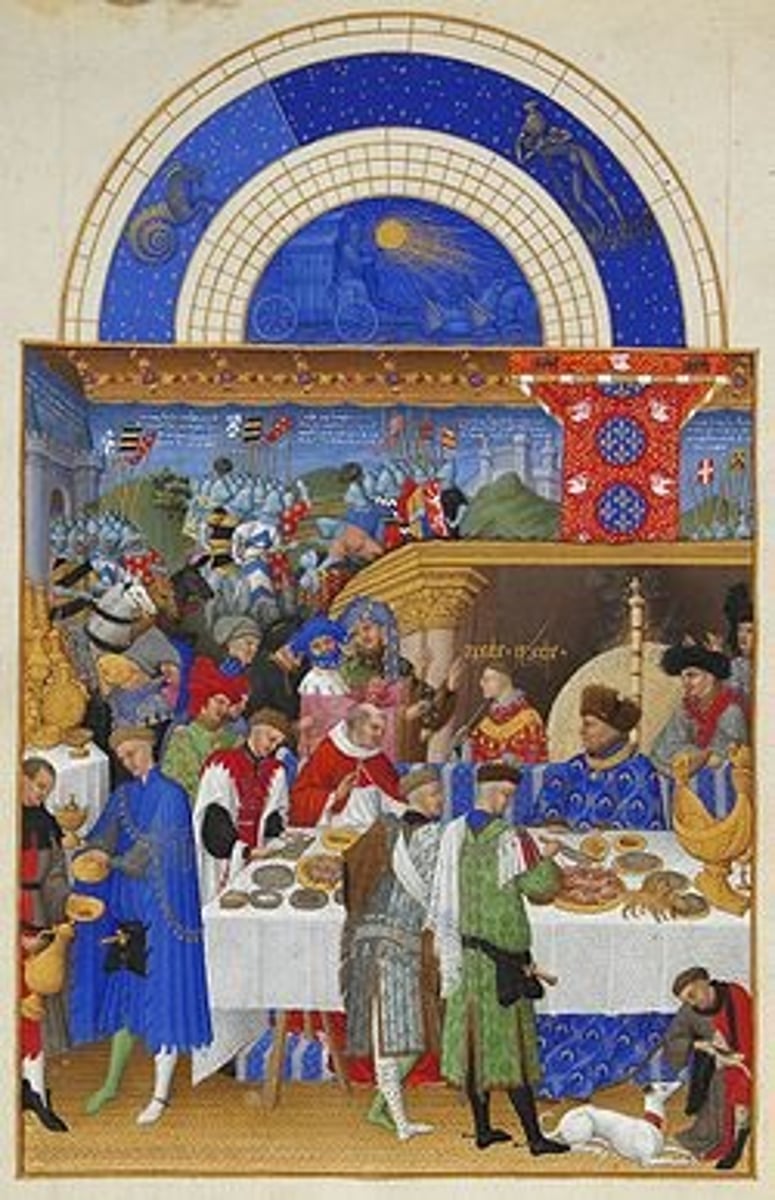
Jan van Eyck, Man in Red Turban, 1433
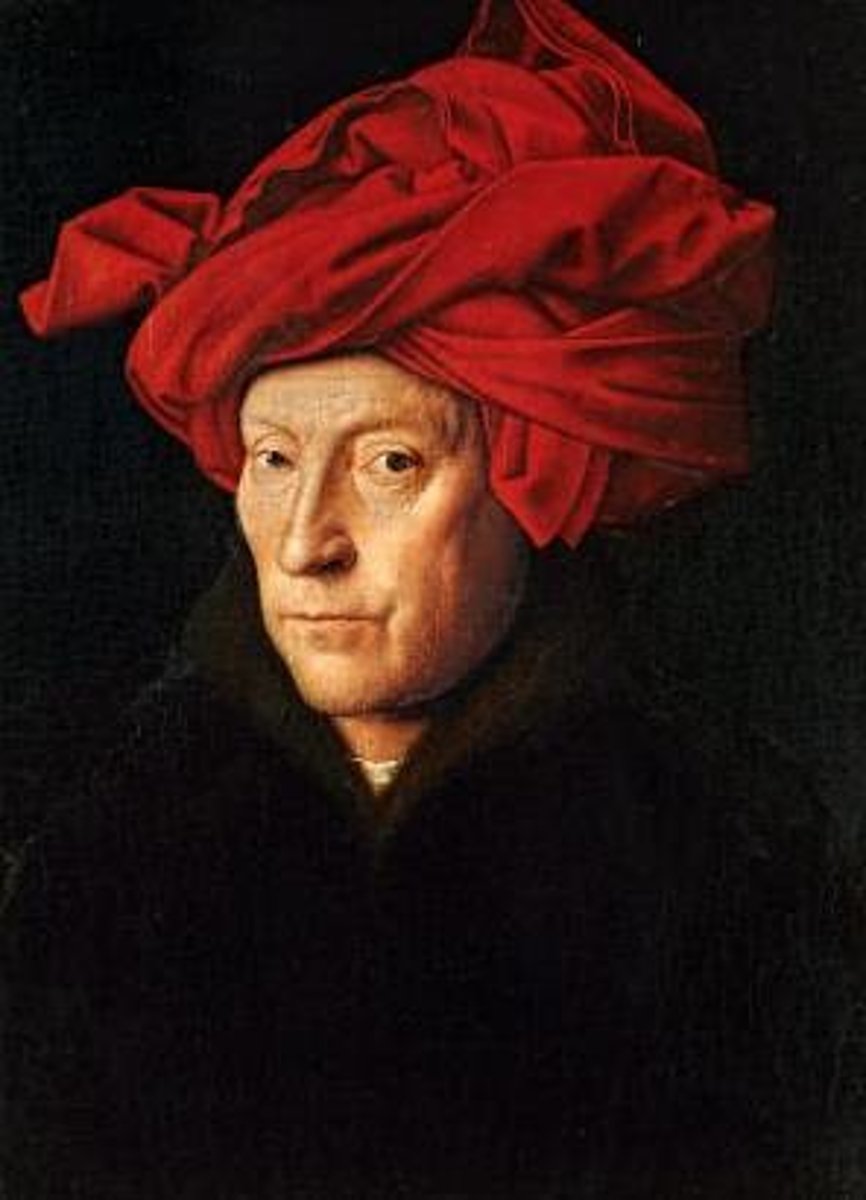
Jan van Eyck, Ghent Altarpiece, 1432
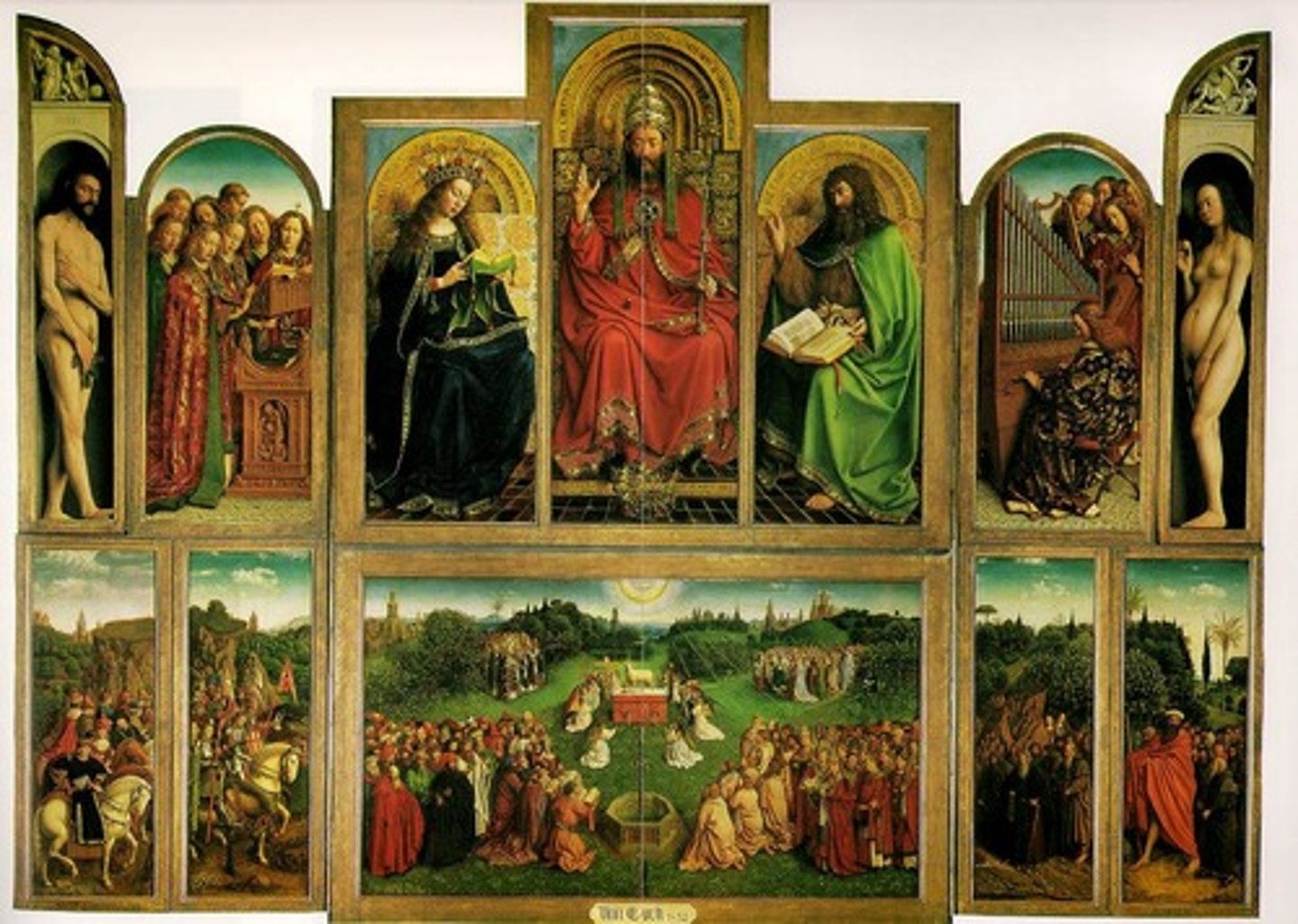
Rogier van der Weyden, Deposition, 1430
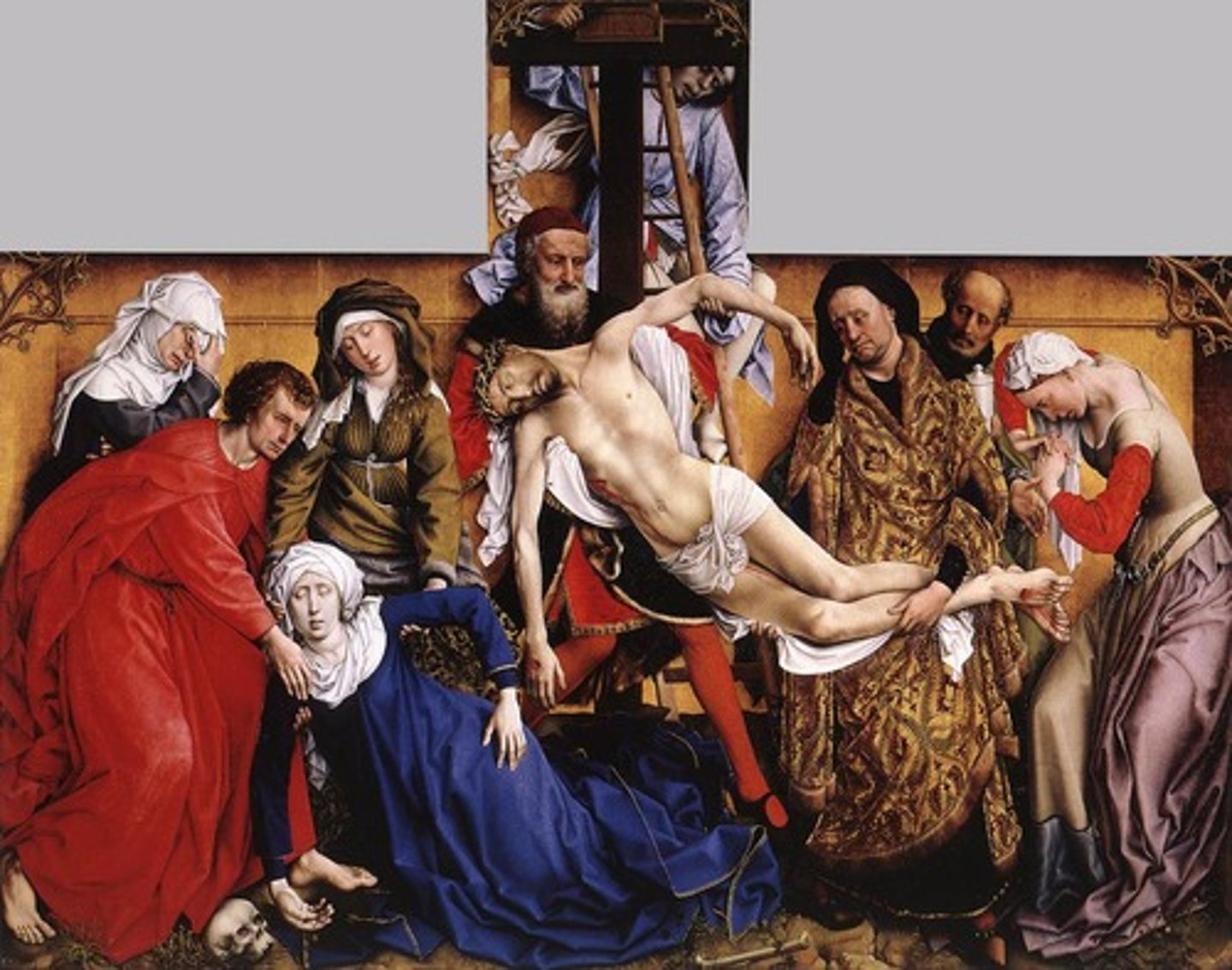
Filippo Brunelleschi, Florence Cathedral Dome, 1420
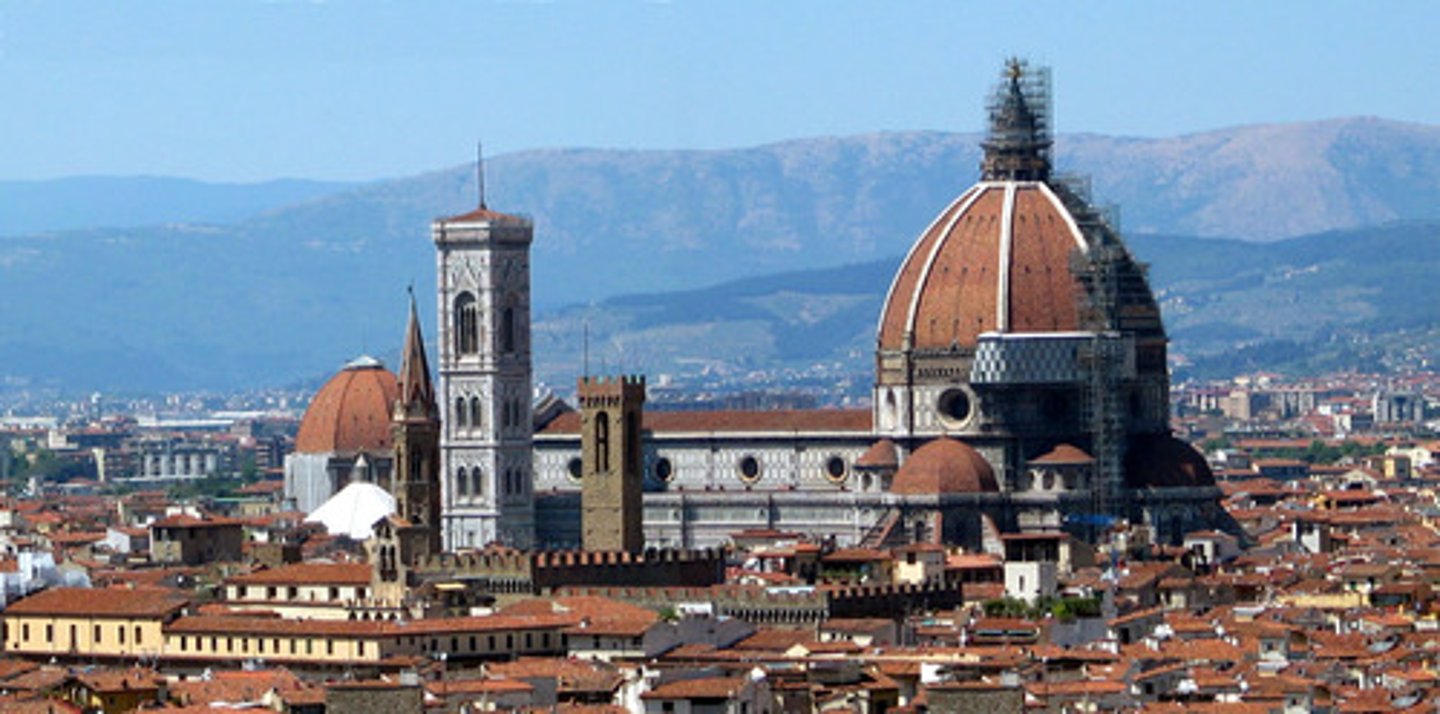
Michelozzo Bartolomeo, Palazzo Medici-Riccardi, Florence, 1446
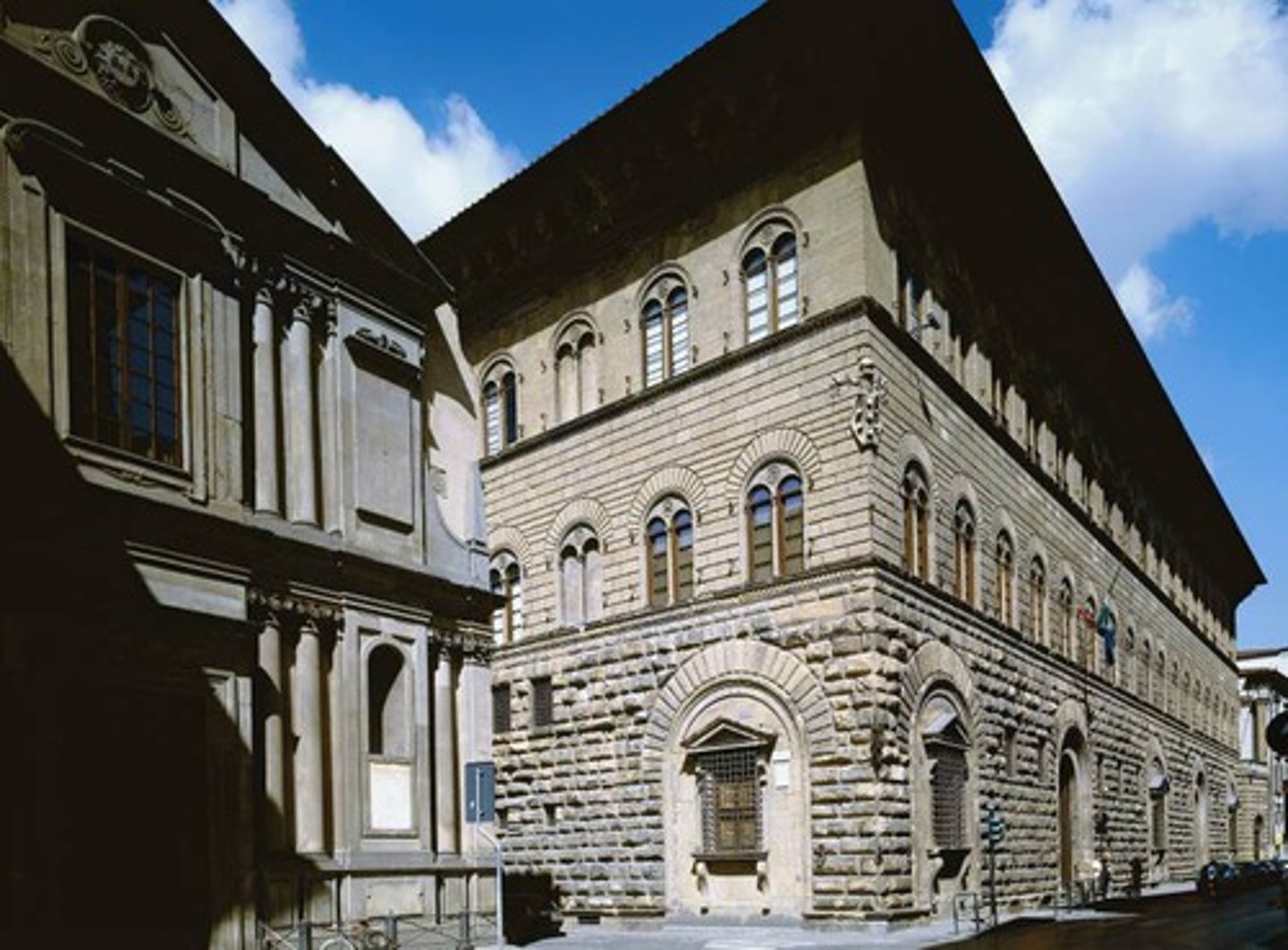
Donatello, David, 1446
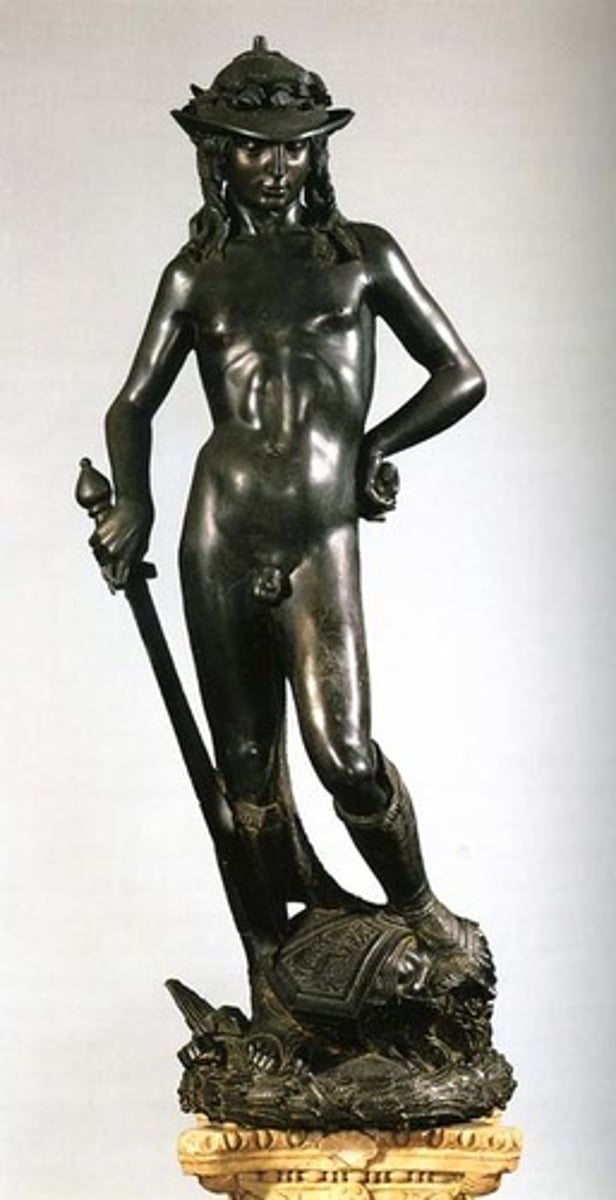
Lorenzo Ghiberti, The Gates of Paradise, Florence, 1425
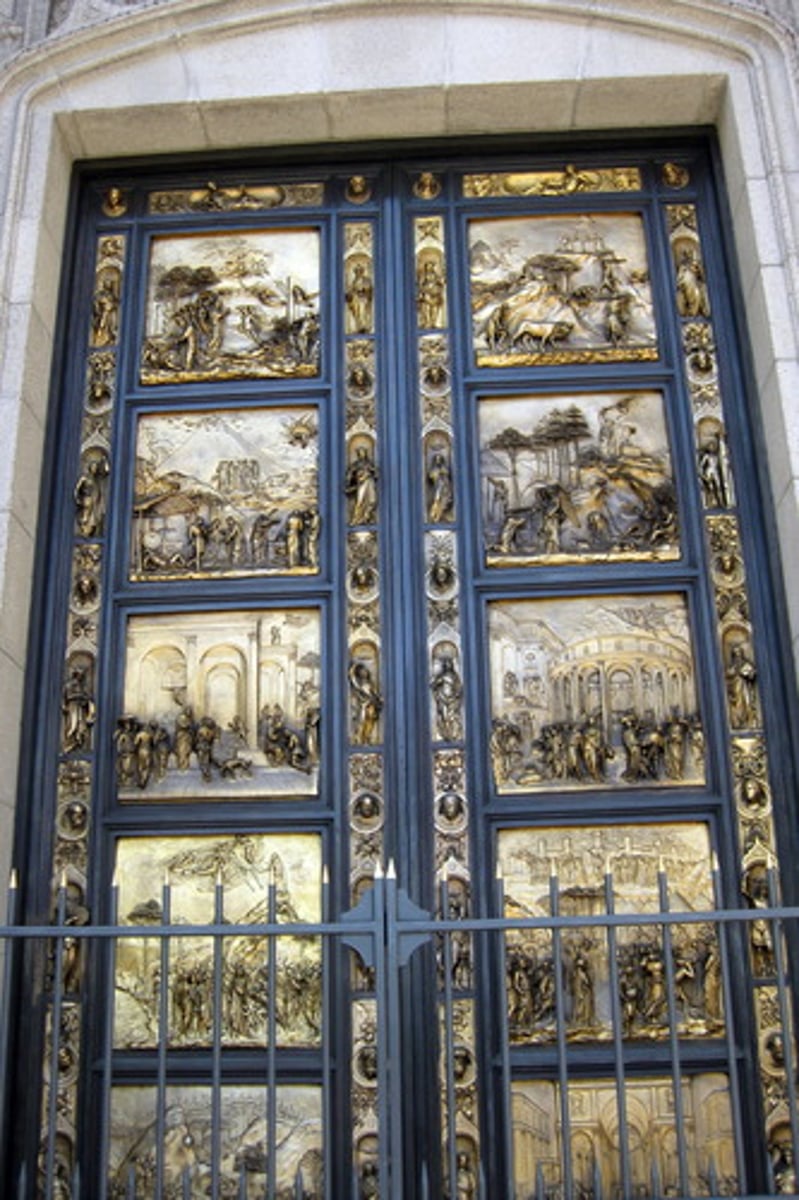
Masaccio, The Tribute Money, 1427
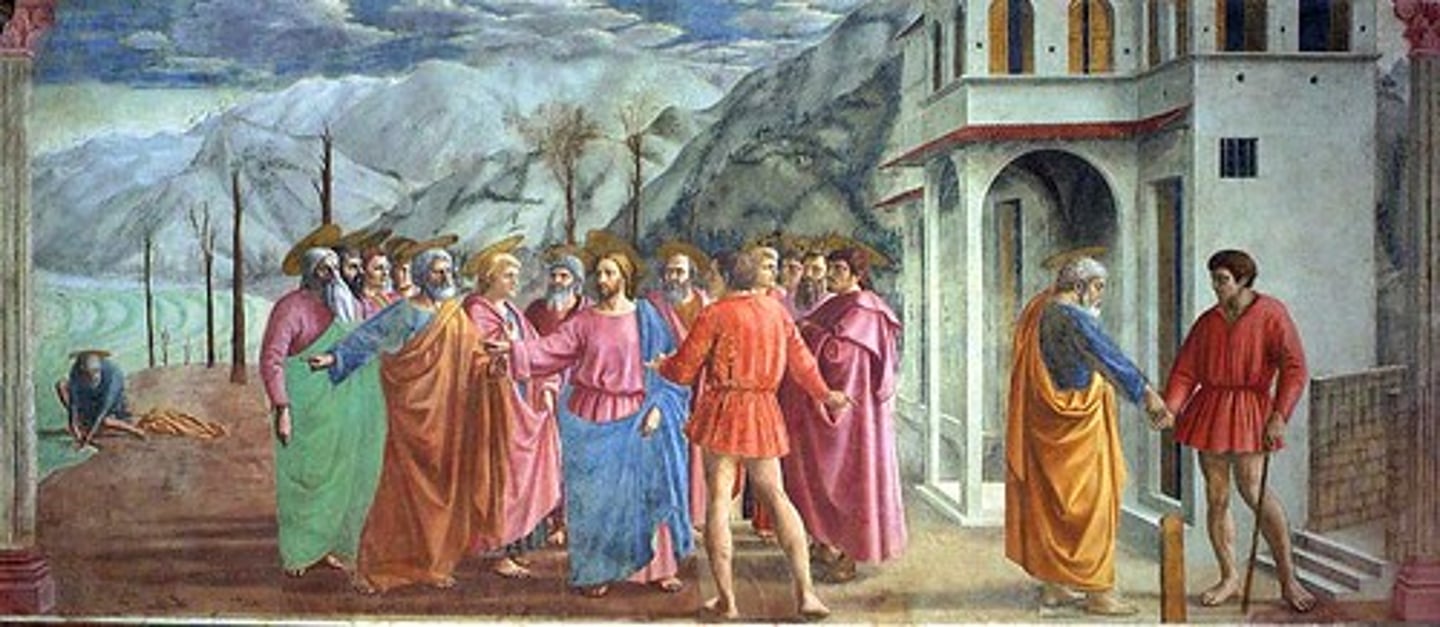
Sandro Botticelli, Birth of Venus, 1484

Leonardo da Vinci, The Last Supper, 1495
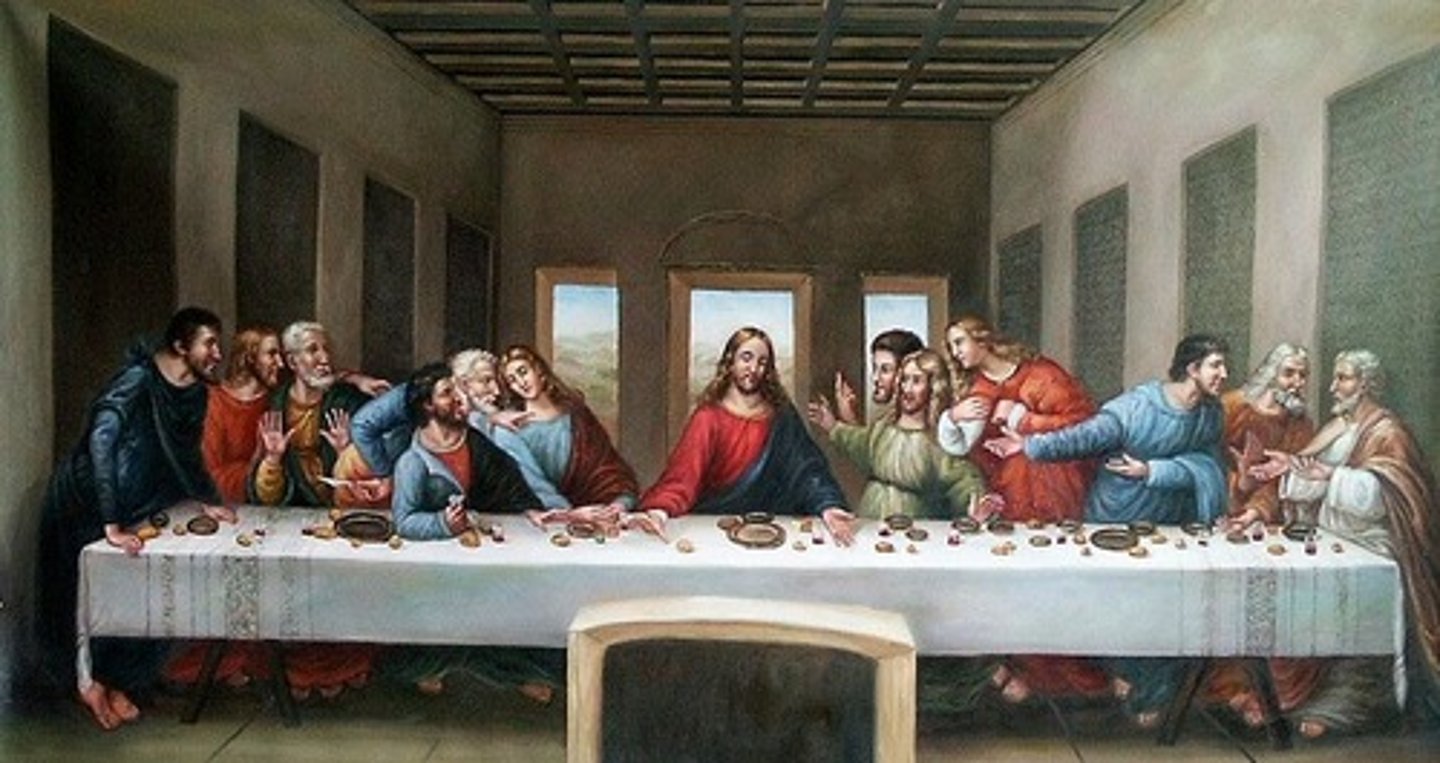
Raphael, The School of Athens, 1510
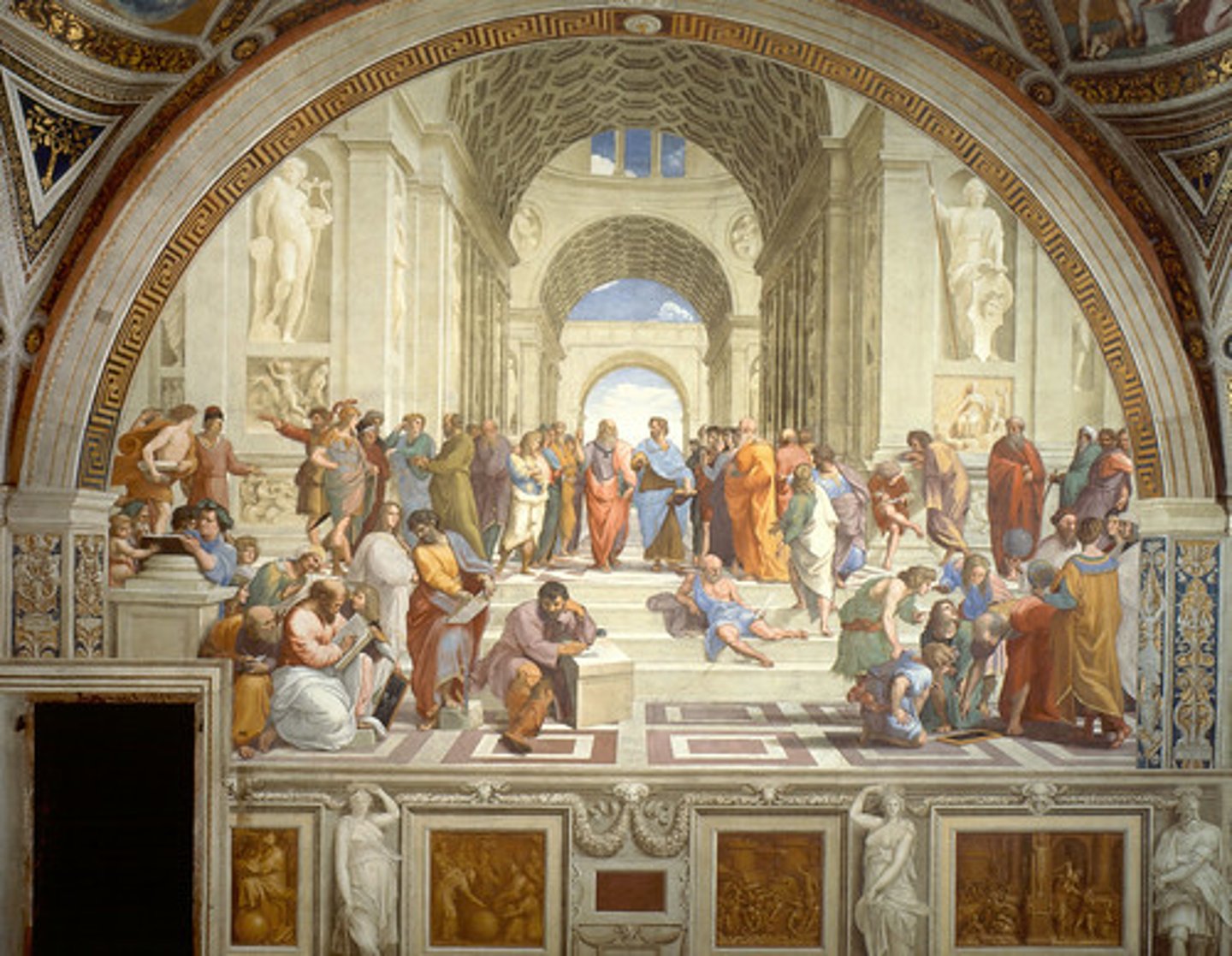
Michelangelo, Pieta, 1500
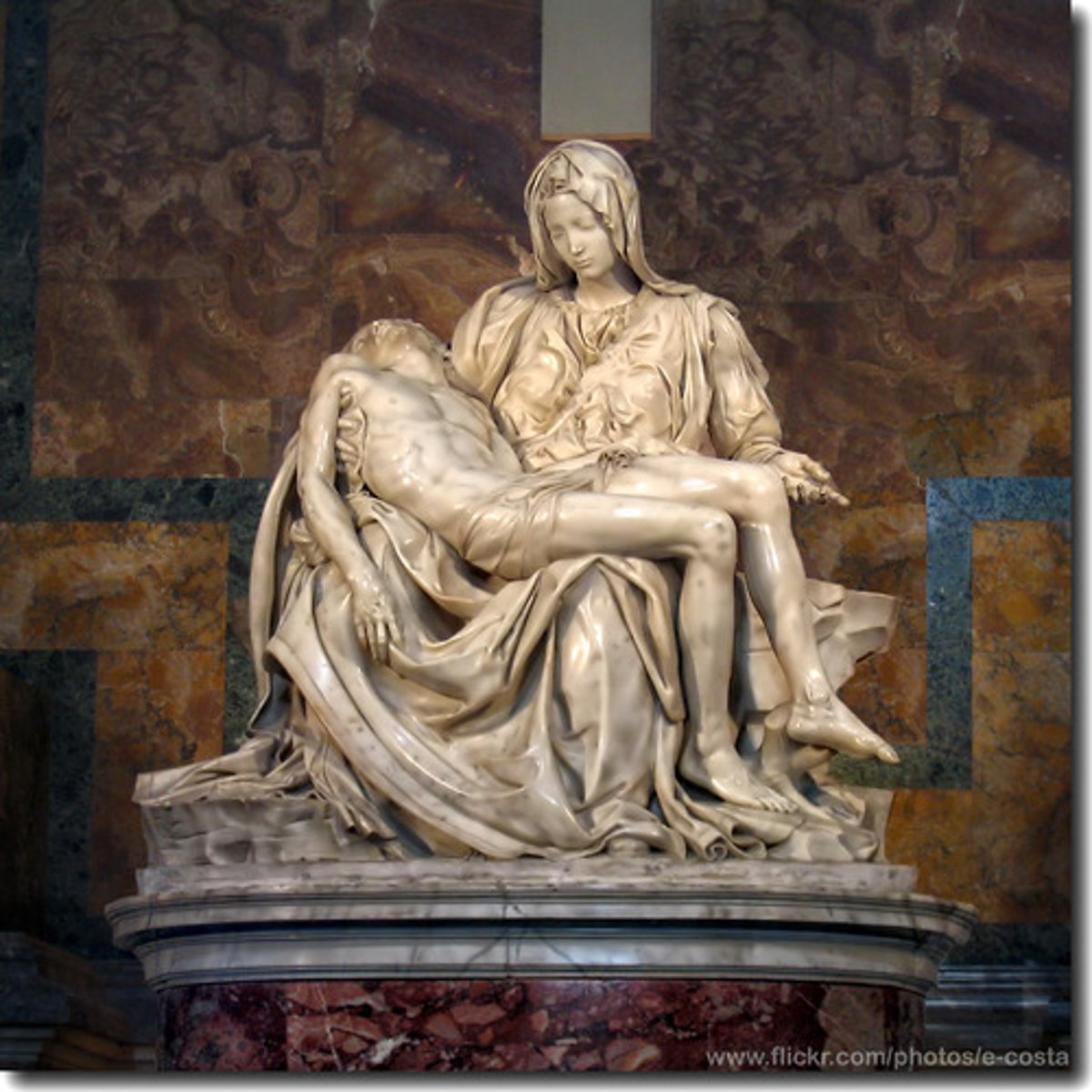
Michelangelo, The Creation of Adam, Sistine Chapel ceiling, 1511

Titian, Pastoral Concert, 1510
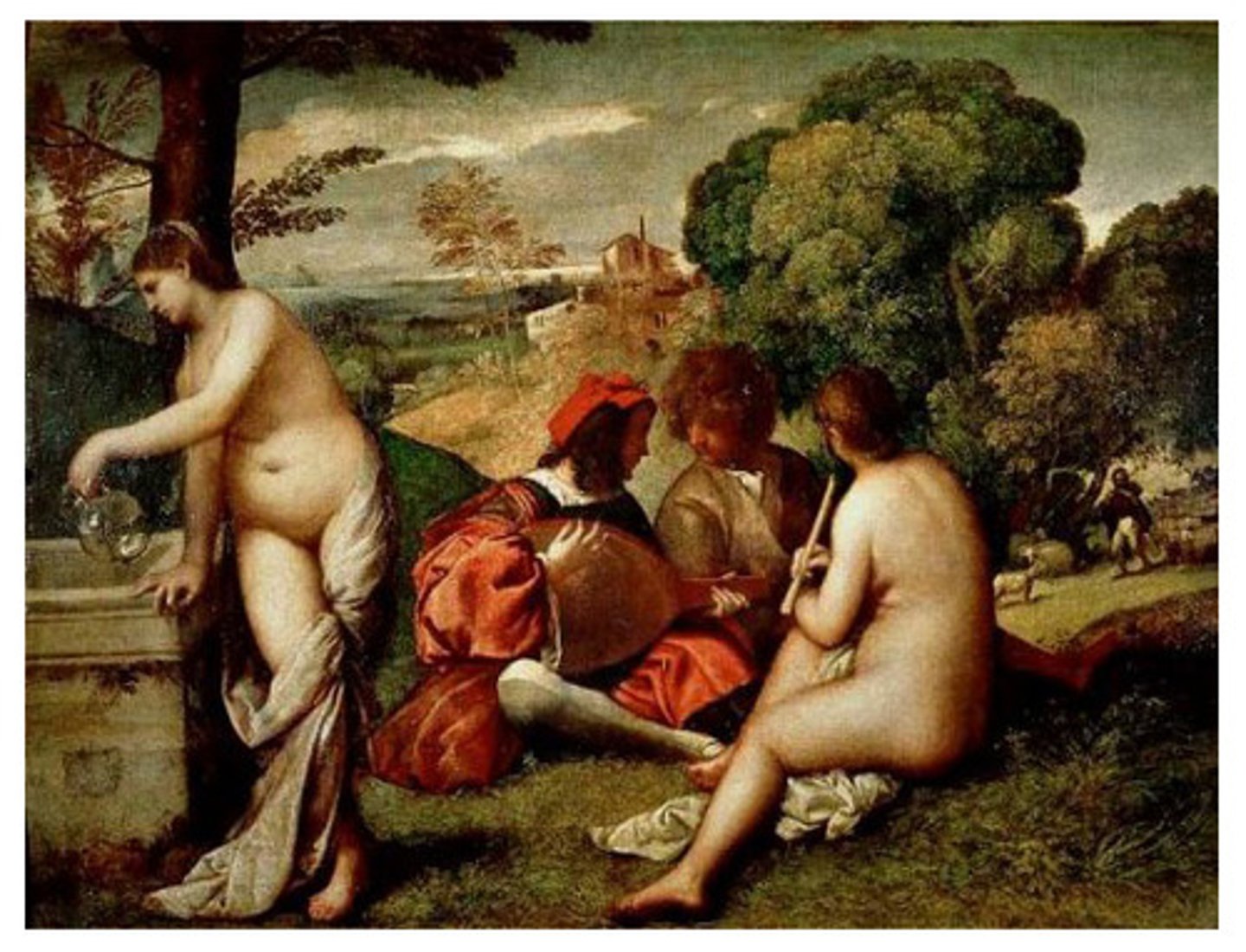
Jacapo Pontormo, The Entombment, 1525

Palladio, Villa Rotunda, 1560's
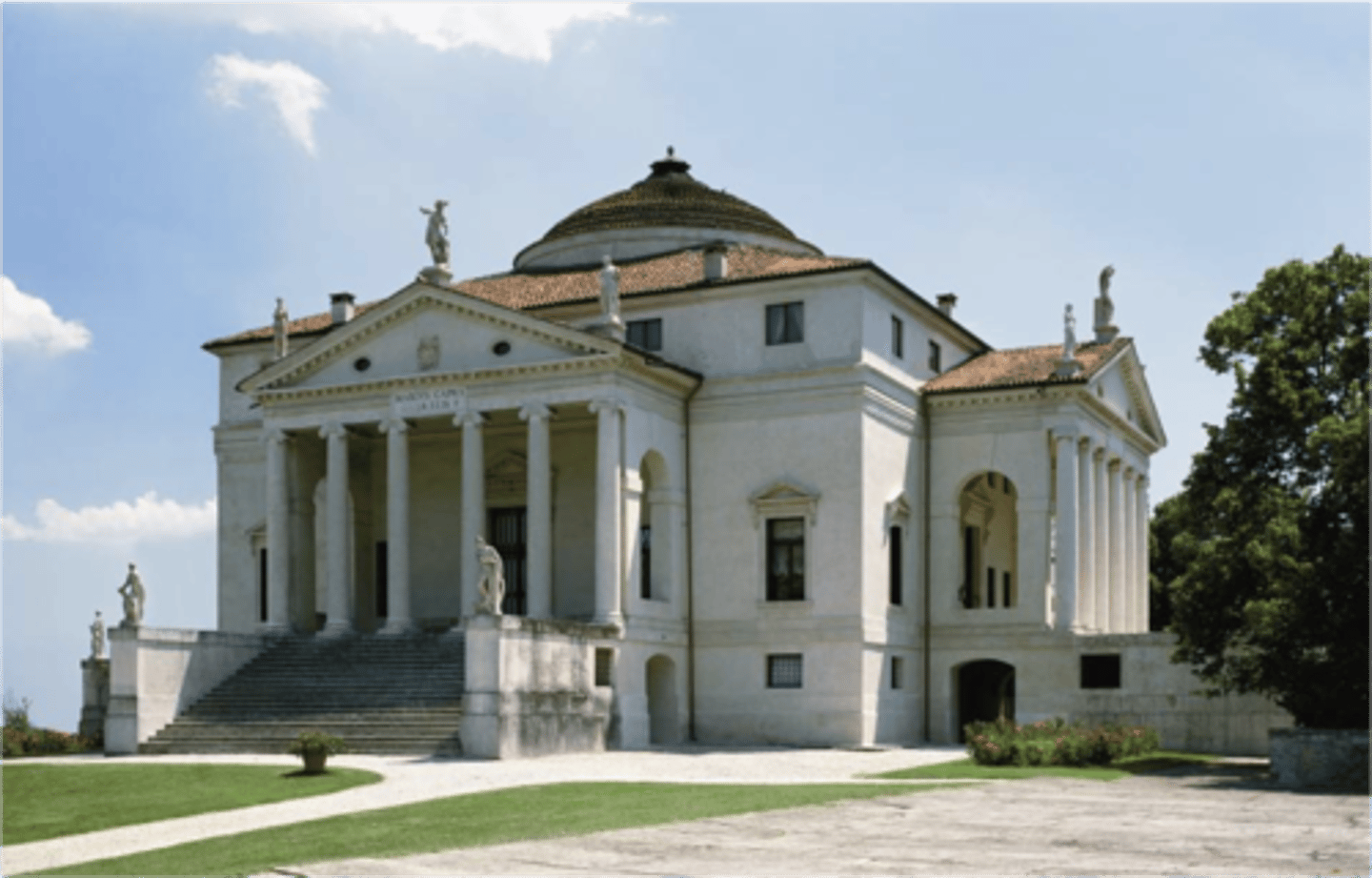
Albrecht Durer, Four Apostles, 1526
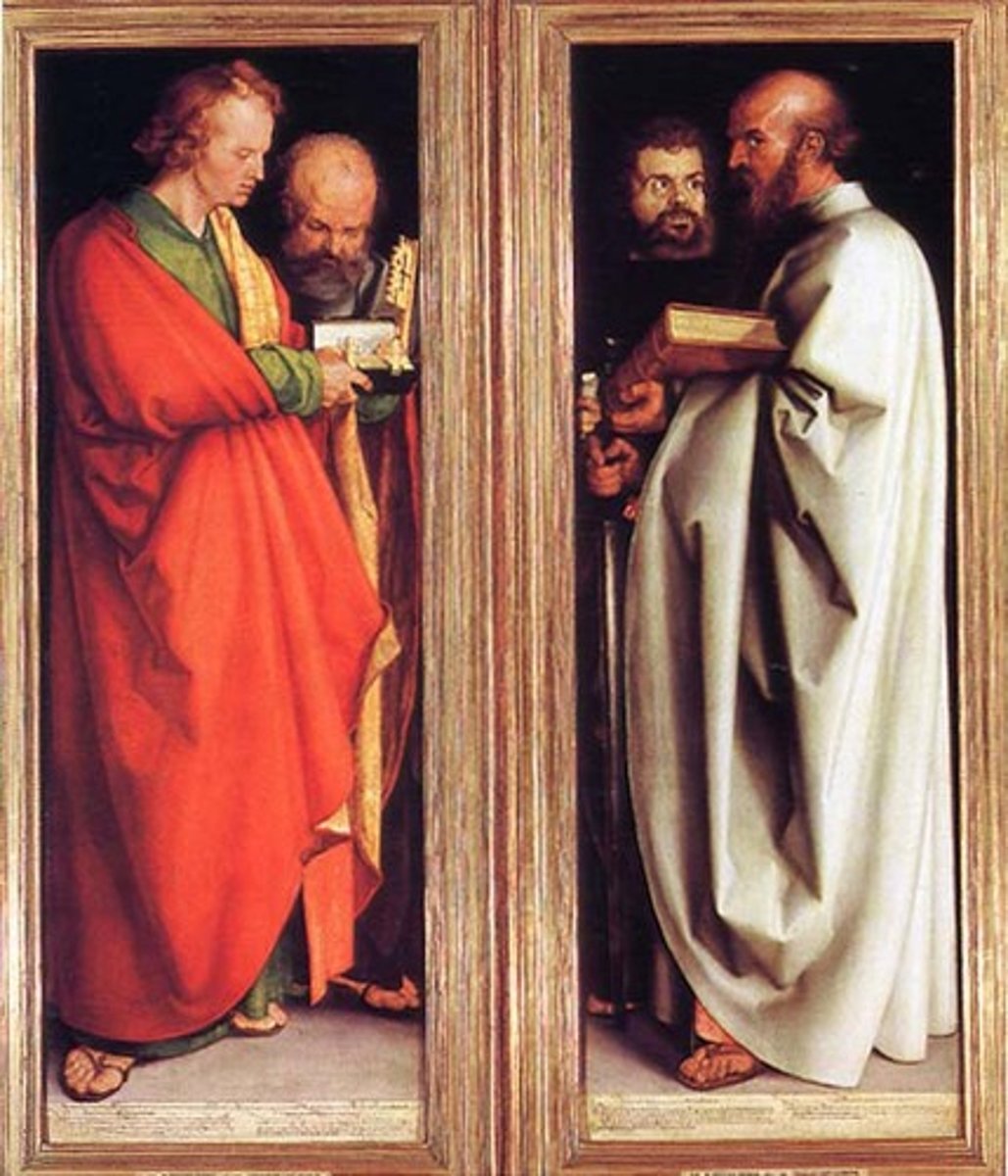
El Greco, Burial of Count Orgaz, 1586
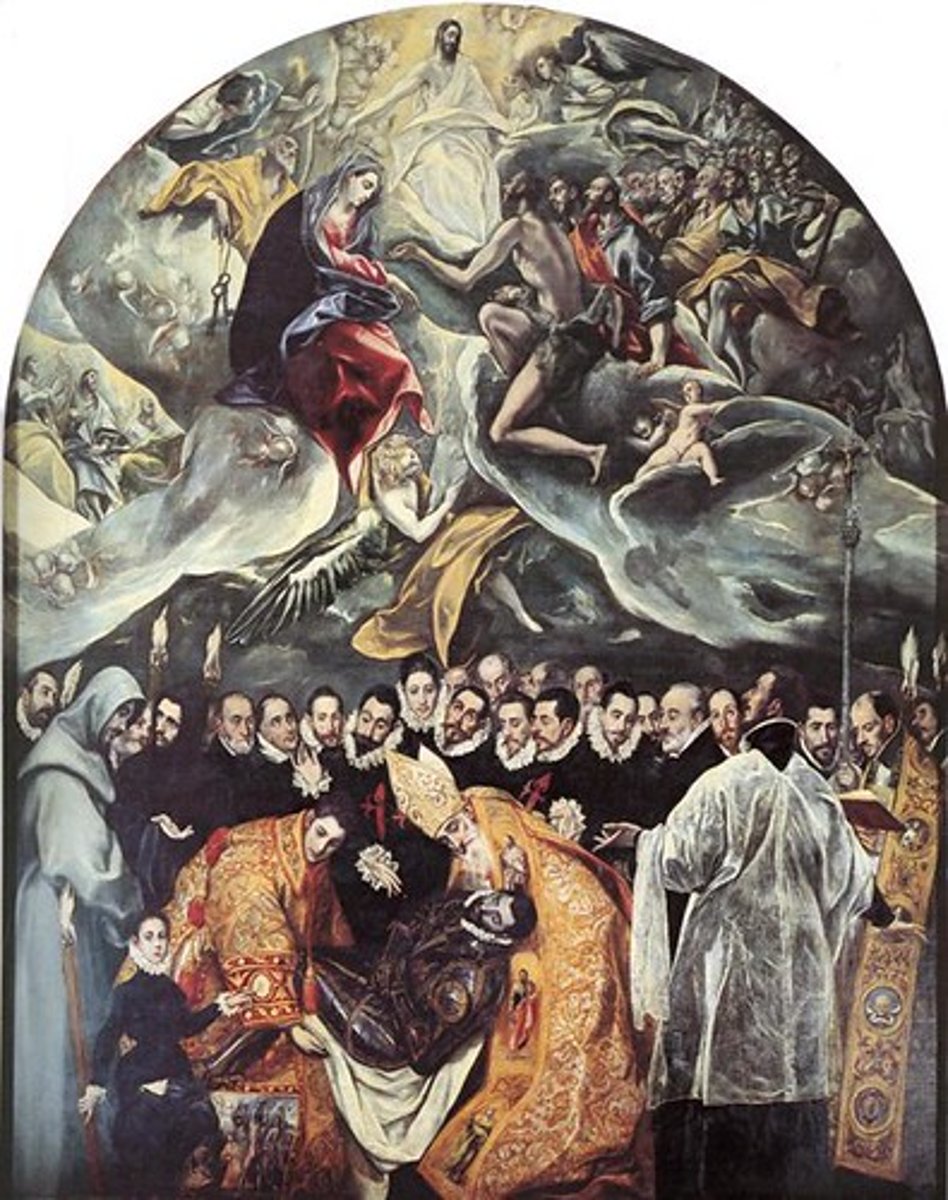
Bosch, The Garden of Earthly Delights, 1505
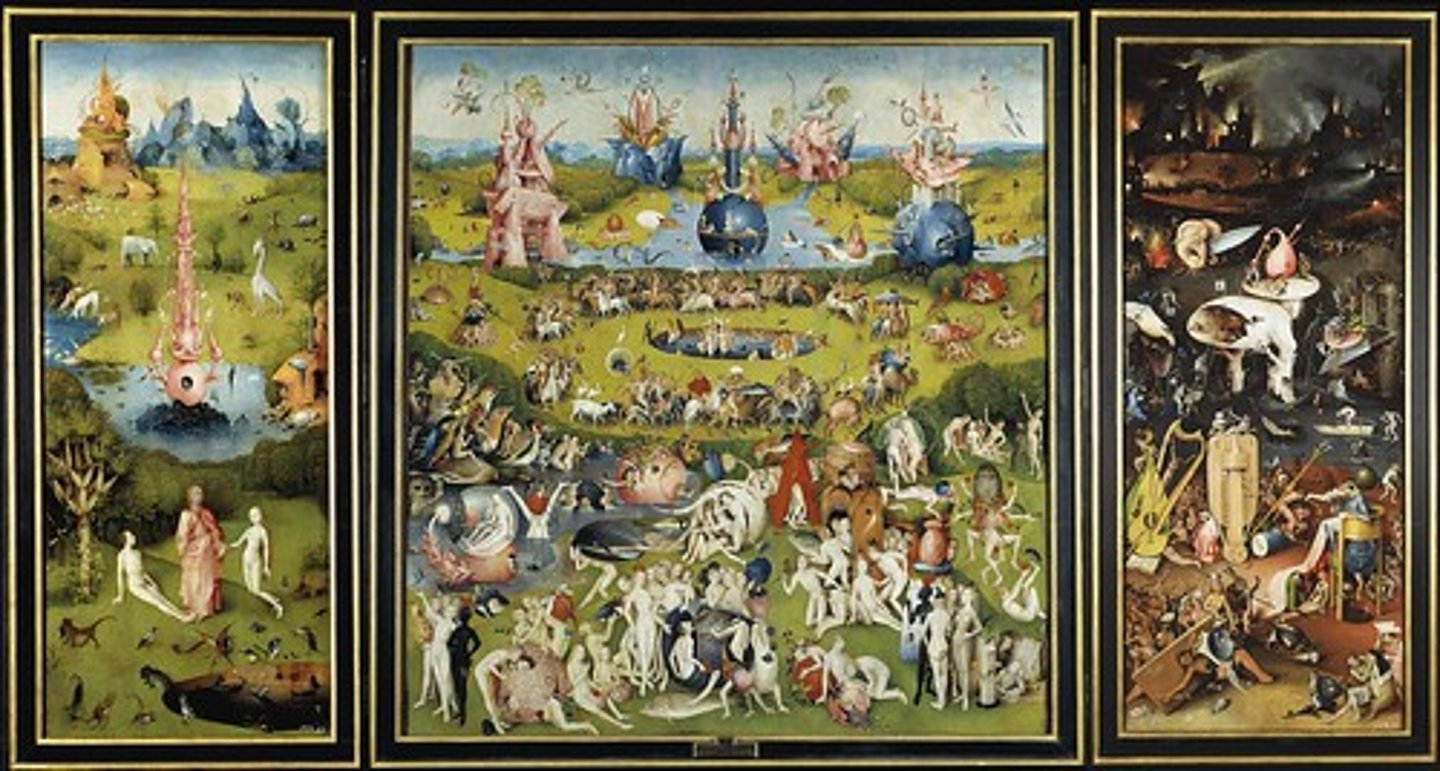
Quinten Massys, Money Changer and His Wife, 1514
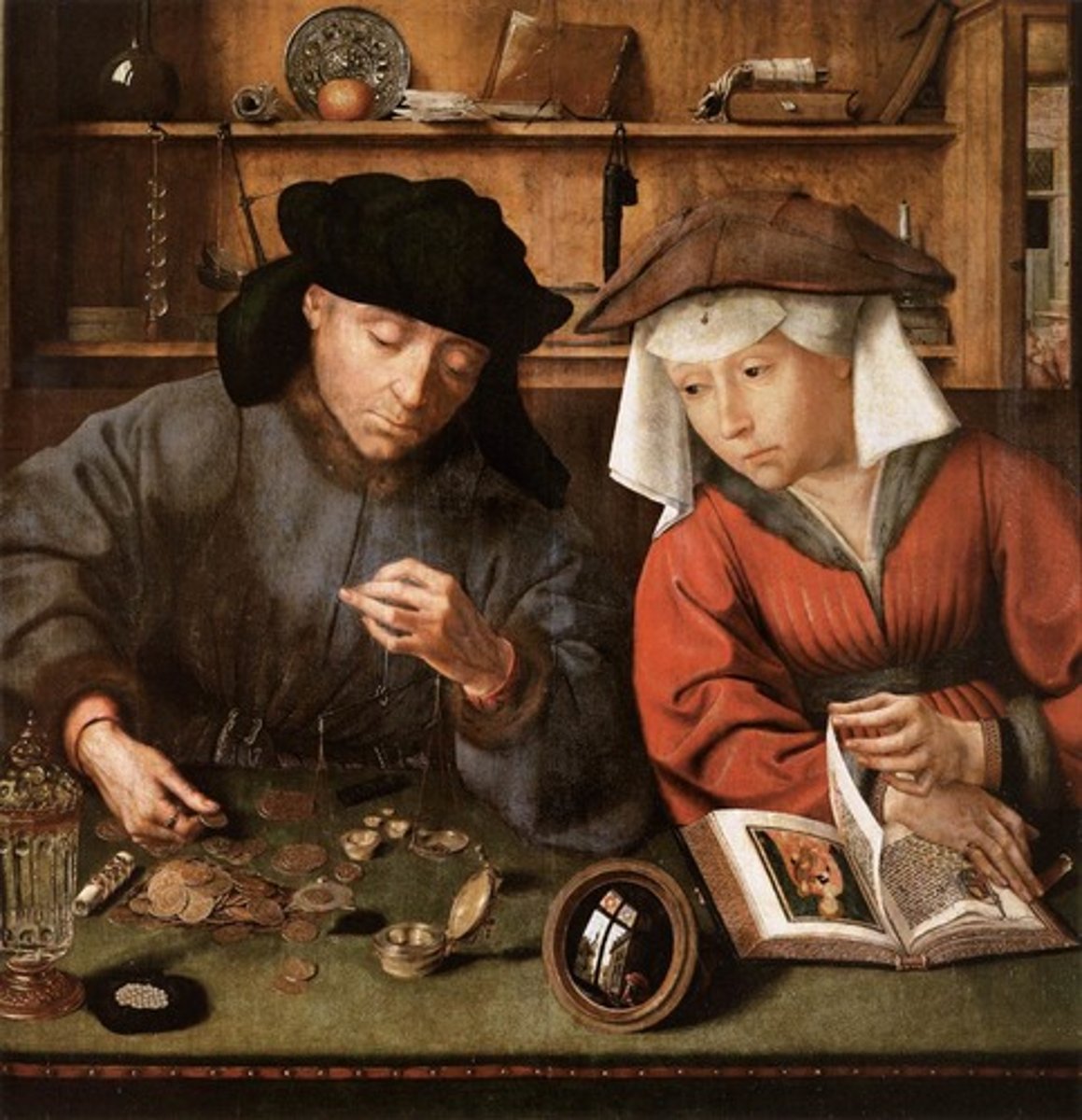
Pieter Brugel the Elder, Return of the Hunters, 1565
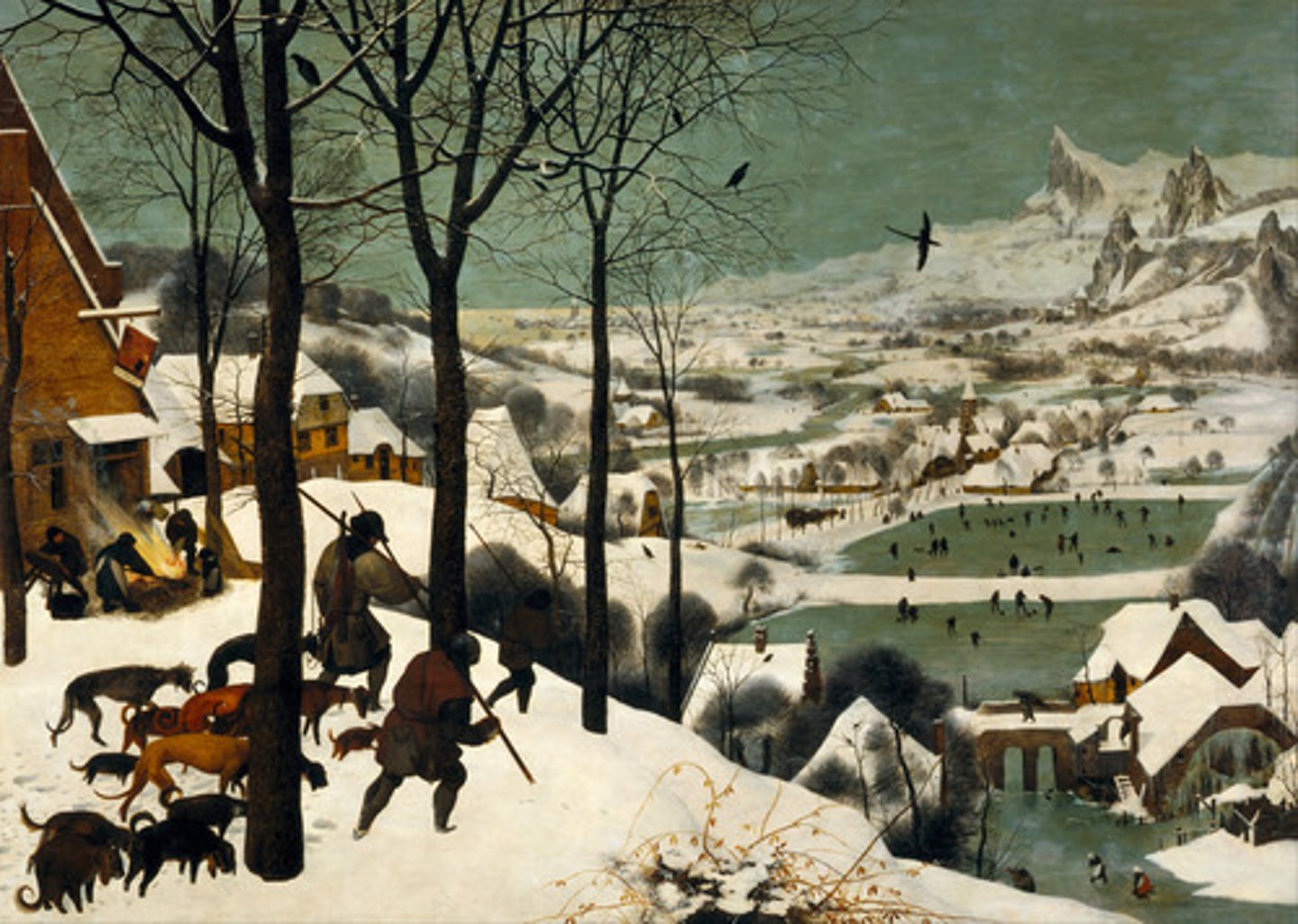
Fresco Secco
Painting on dry plaster
Buon Fresco
true fresco; water applied to wet lime plaster
Giornata
"a days work" in Italian; each patch was what the artist planned to paint in a single day
Loggia
a roofed arcade or gallery with open sides stretching along the front or side of a building
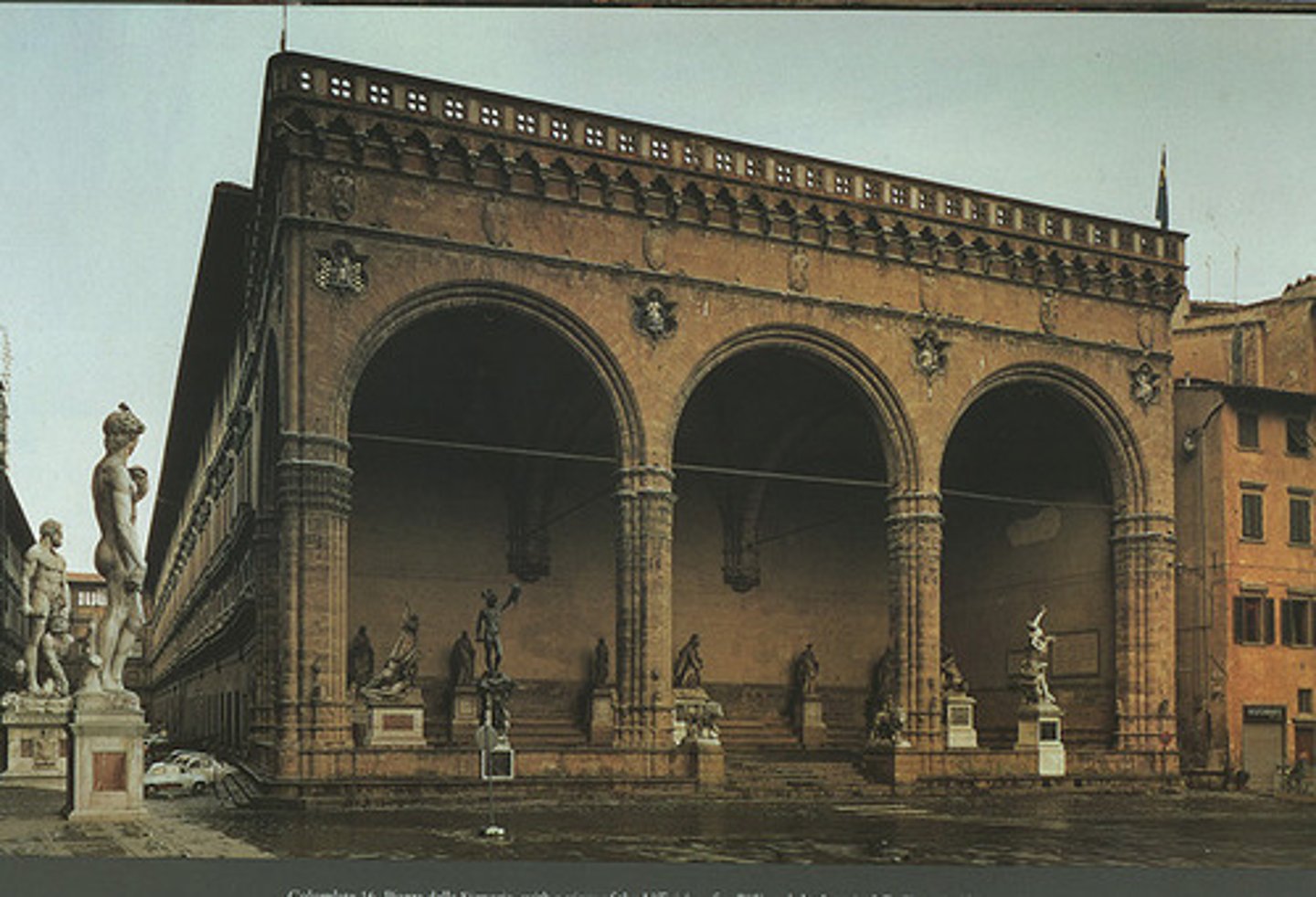
Intuitive Perspective
giving the impression of recession of objects in space by approximating the appearance of things as smaller or larger, not accurate system/proportions to show this

Picture Plane
The flat surface or plane that the artist organizes the picture in.
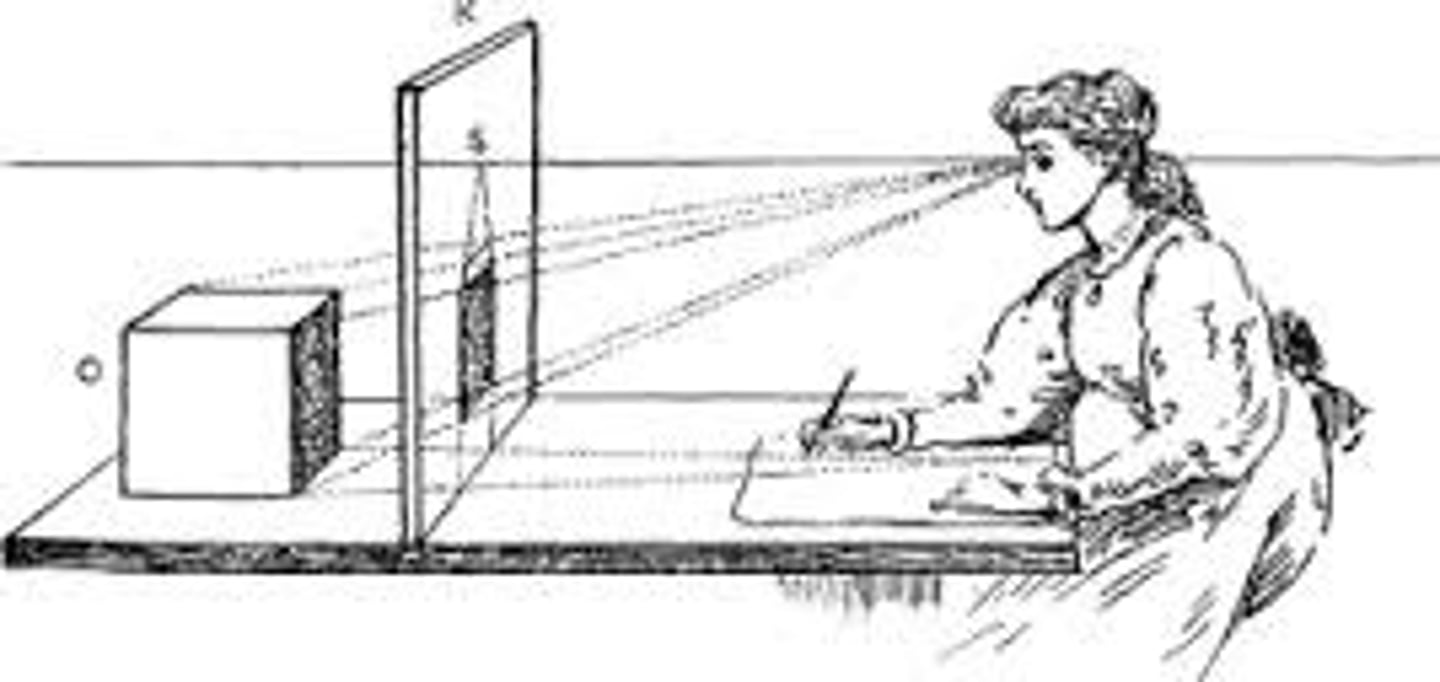
Contrapposto
A style of Greek sculpture where people are depicted standing and leaning so that the person's weight is being put on one side. People are depicted with their bodies curved like an "S"
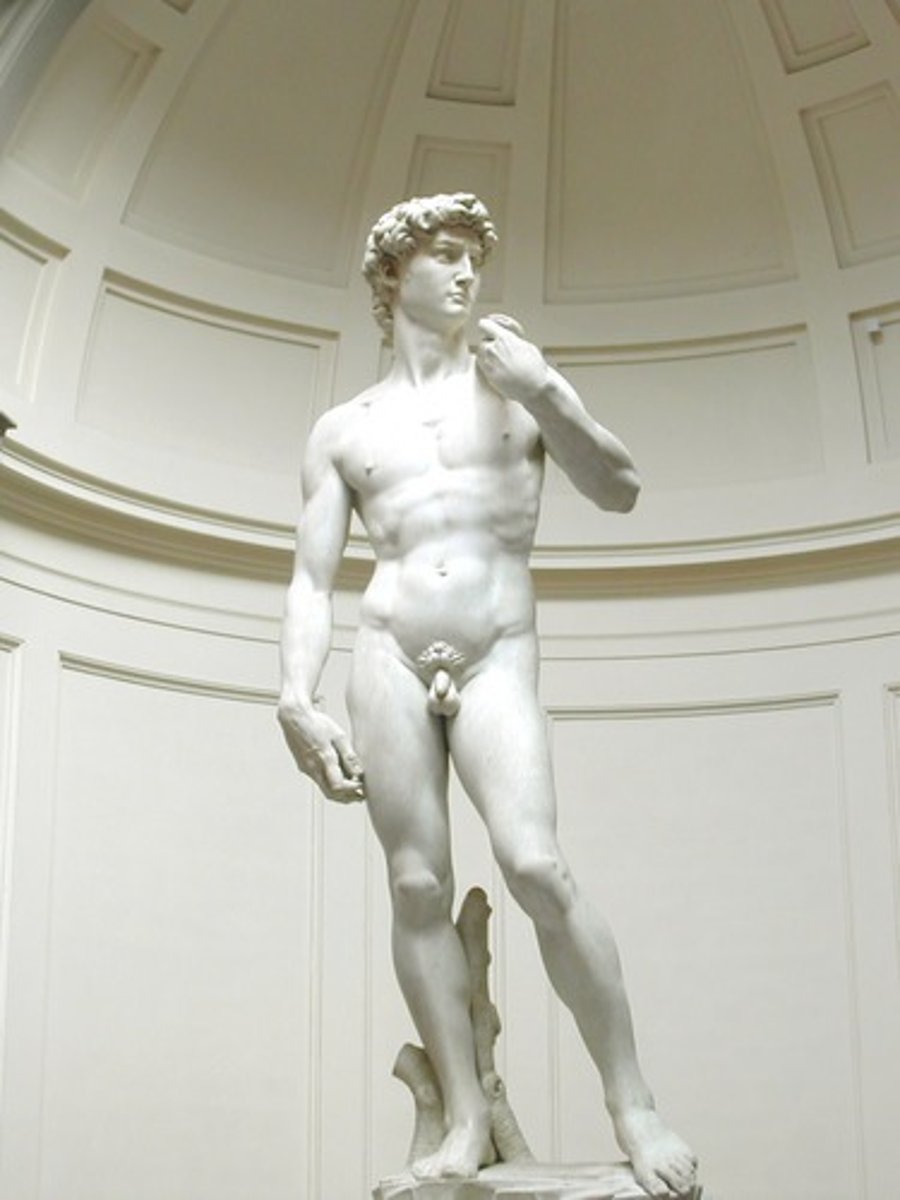
Trompe L'oeil
"Tricking the eye." Appears that the image is in the room with you.

Allegory
A story, poem, or picture that can be interpreted to reveal a hidden meaning, typically a moral or political one.
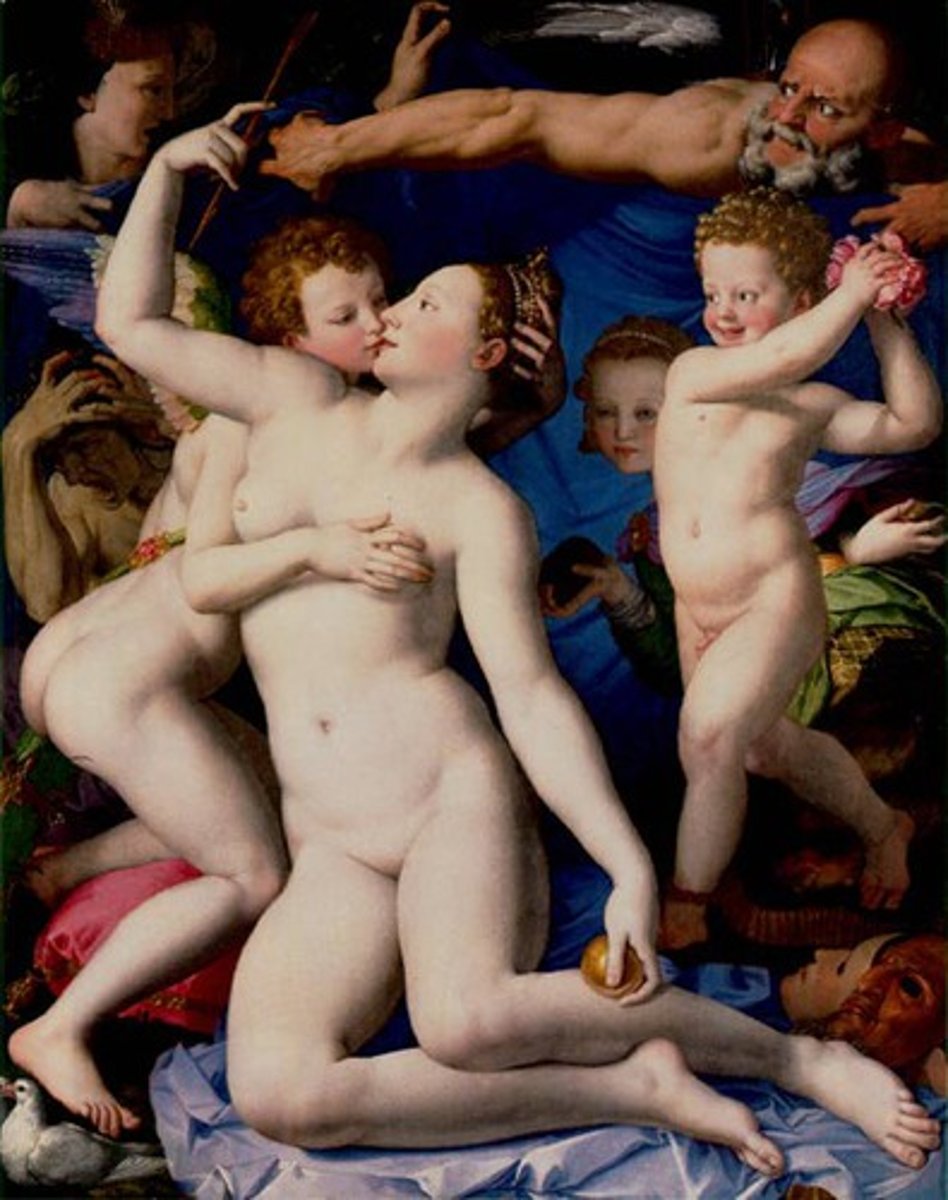
Putti
system of merchant-capitalists "putting out" raw materials to cottage workers for processing and payment that was fully developed in England
Palazzo
Italian term for place, meaning used for any large urban dwelling
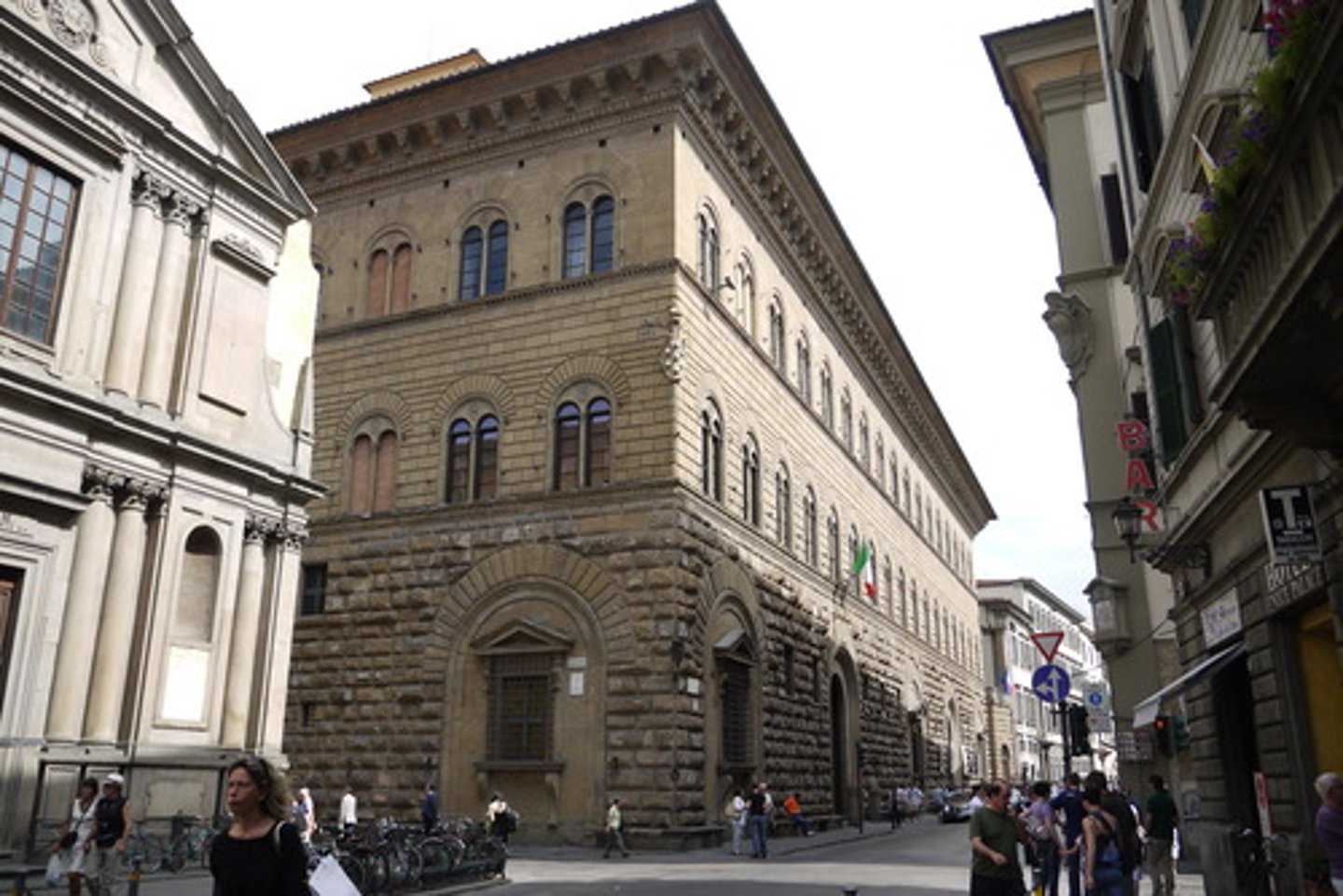
Rusticated
The rough, irregular and unfinished effect deliberately given to the exterior facing of a stone edifice. Rusticated stones are often large and used for decorative emphasis around doors or windows or across entire lower floors of a building
Vitruvius
was a Roman author, architect, and civil engineer during the 1st century BC, known for his multi-volume work entitled De Architectura

Giorgio Vasari
Italian painter and art historian (1511-1574); wrote The Lives of the Artists. Massive patronage of the arts came from this and was lead by families like the Medici's and also the churches, who saw art as a means of glorifying God.
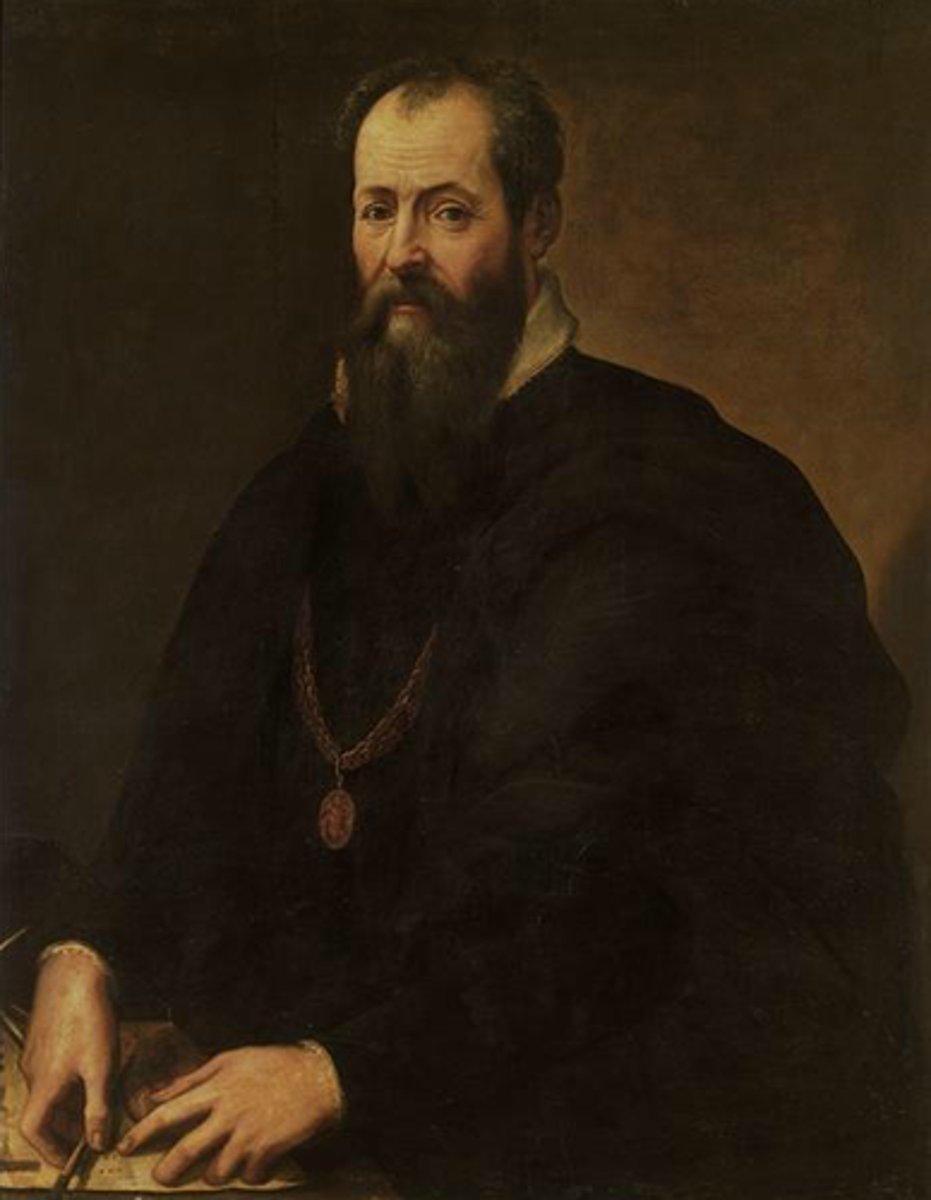
Council of Trent
Called by Pope Paul III to reform the church and secure reconciliation with the Protestants. Lutherans and Calvinists did not attend.
Glazes
thin transparent layers put over a painting to alter the color and build up a rich sonorous effect
Pieta
A painting, drawing, or sculpture of Mary, the Mother of Jesus, holding the dead body of Jesus. The word means "pity" in Italian.
Chiaroscuro
the treatment of light and shade in drawing and painting
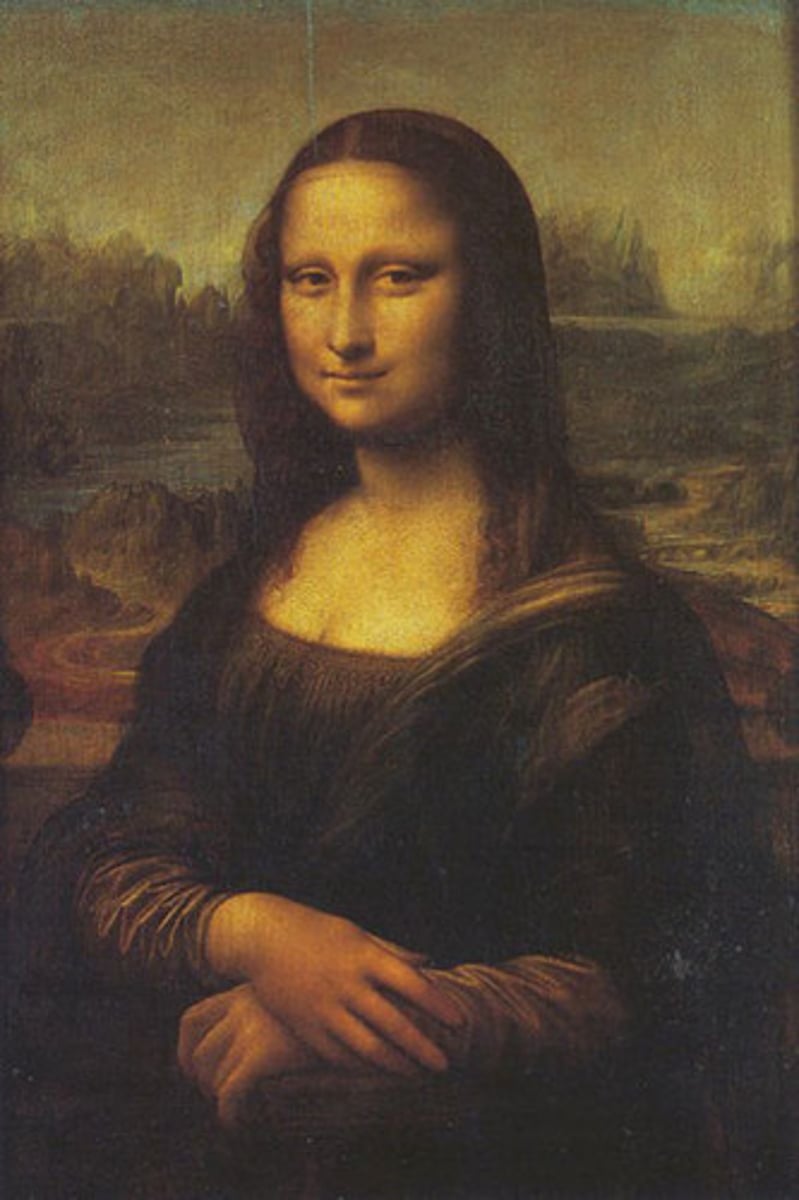
Sfumato
A smokelike haziness that subtly softens outlines in painting; particularly applied to the painting of Leonardo and Correggio.
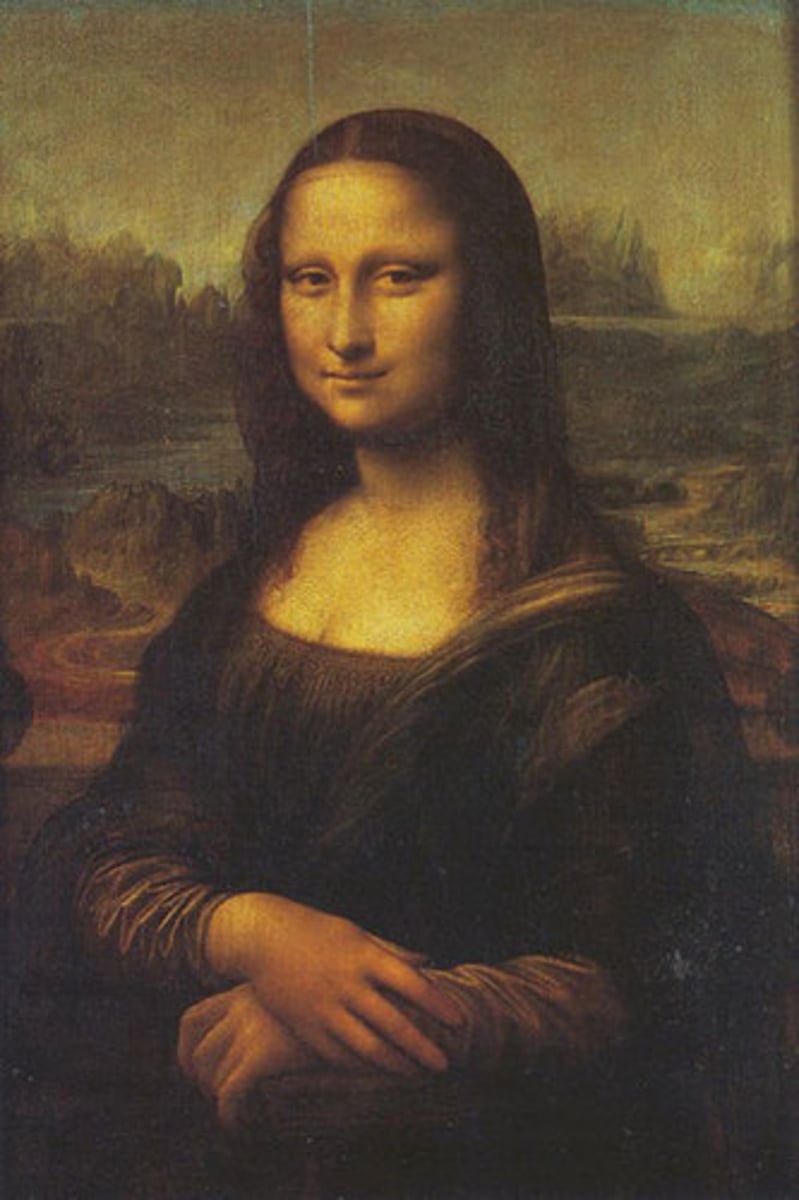
City- State
A city and its surrounding lands functioning as an independent political unit
Grisaille
a painting done in neutral shades of gray to simulate the look of sculpture
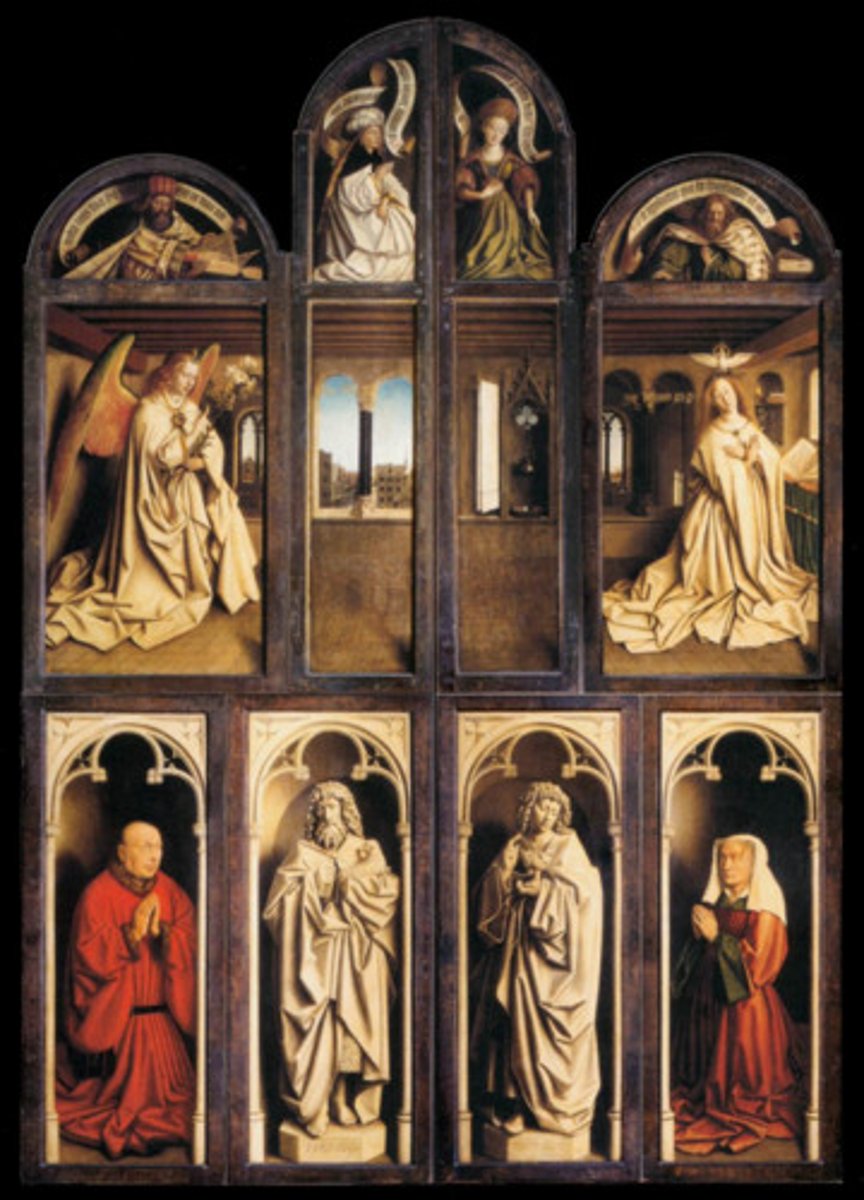
The International Gothic Style
Rich colors, intricate patterns, and weightless figures

Book of Hours
book or manuscript containing a calendar, prayers, and biblical passages for private devotion
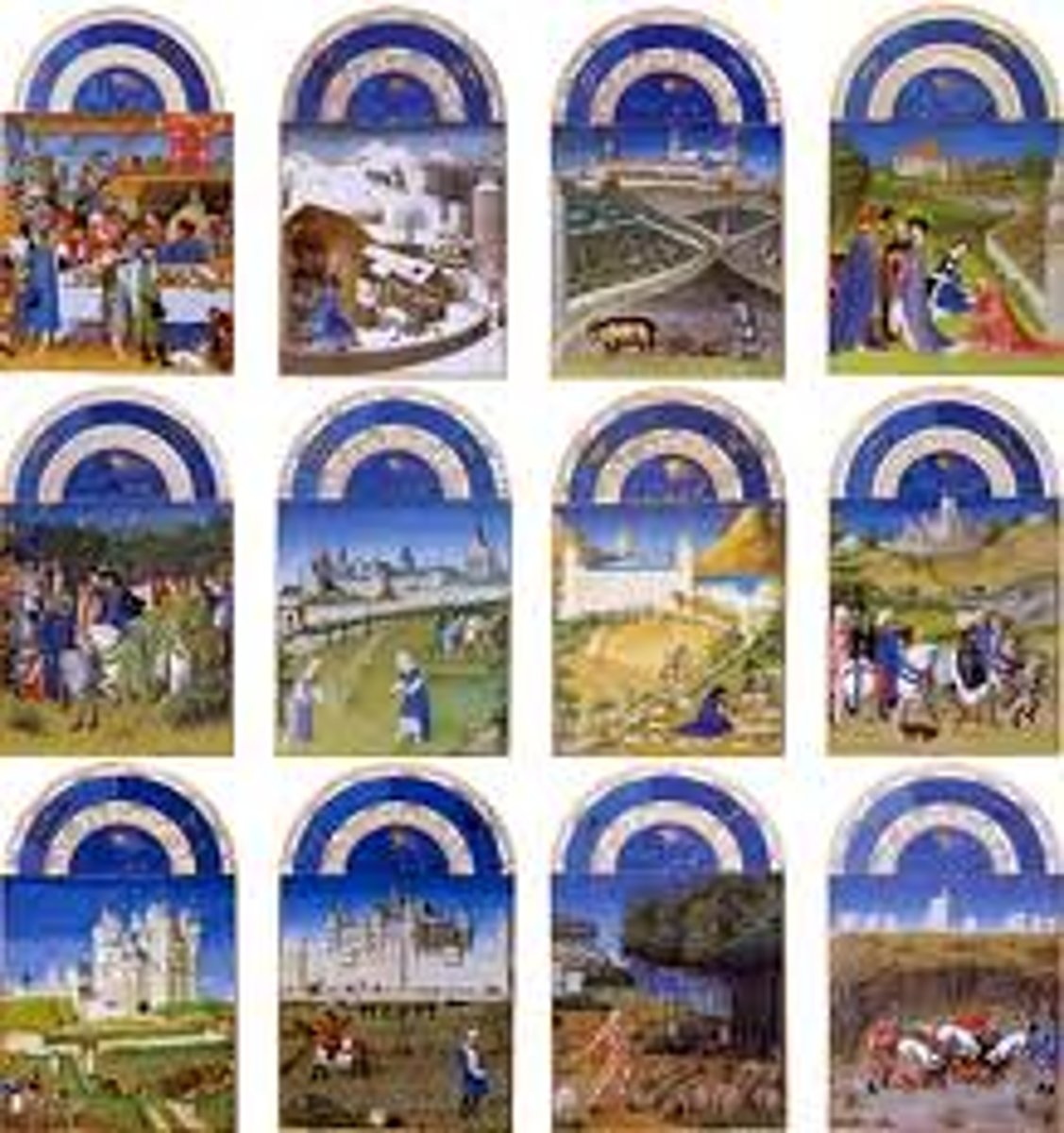
Iconography
The symbolic representation of a subject.
the images and symbolic representations that are traditionally associated with a person or a subject
Diptych/Triptych/ Polyptych
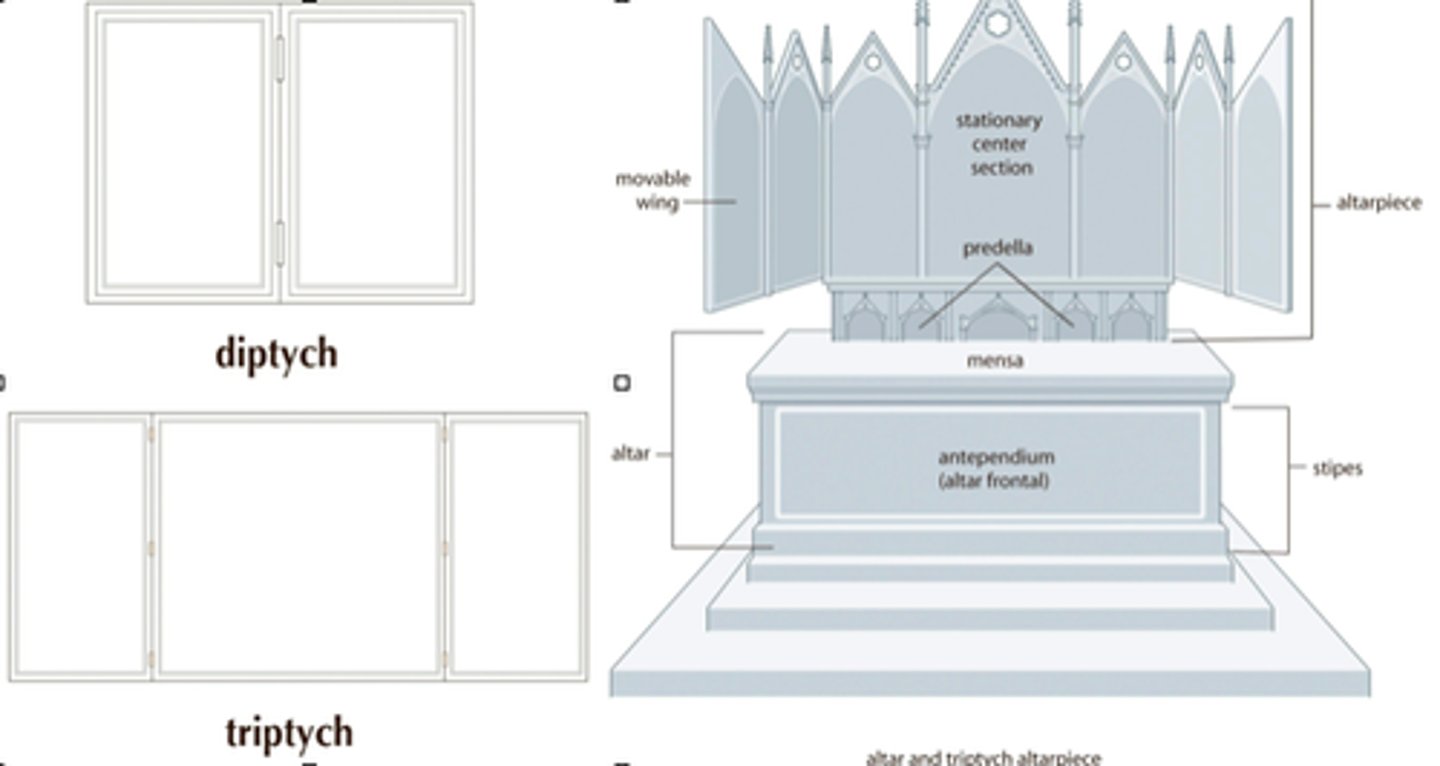
Printing Media
Tempera, Oil
Printing Processes
Woodcut, engraving
Donor Portrait
A portrait of the individual(s) who commission a religious work, for example an altarpiece, as evidence of devotion.
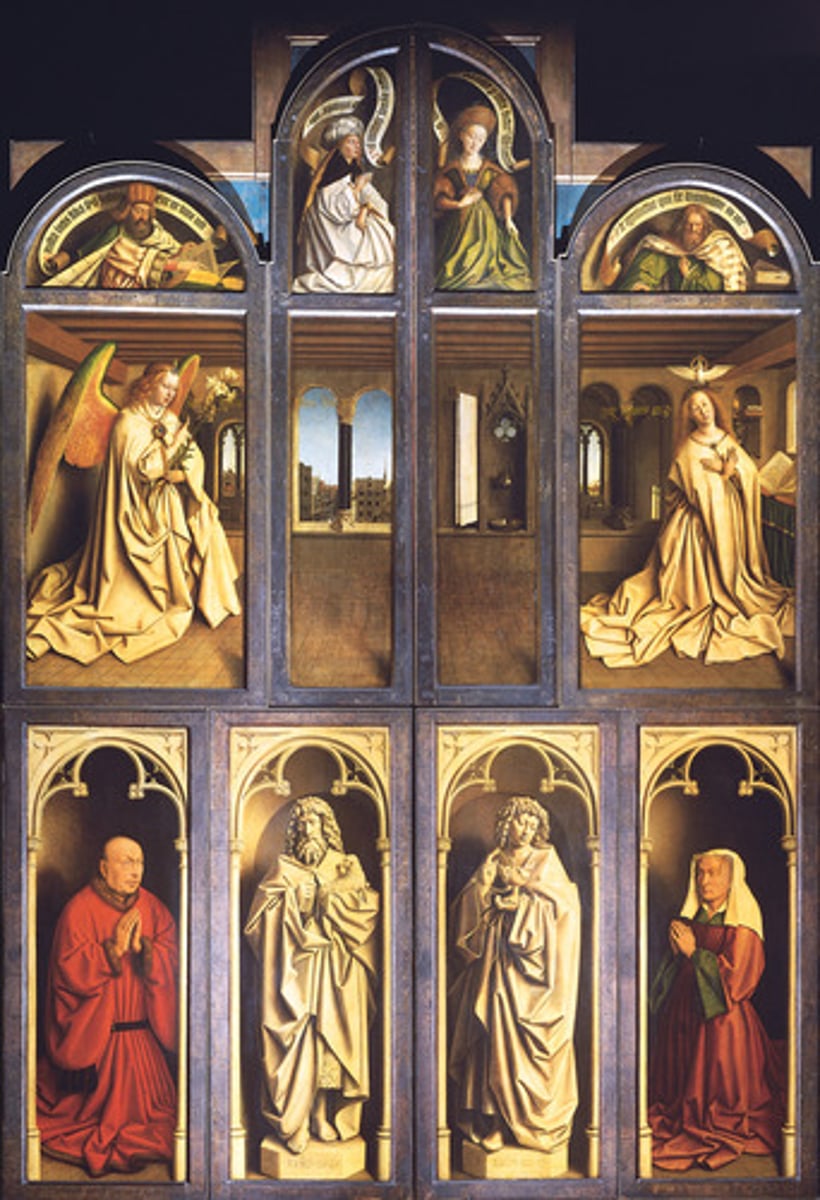
Humanism
A Renaissance intellectual movement in which thinkers studied classical texts and focused on human potential and achievements
Atmospheric Perspective
Creating the illusion of depth of space by fading colors and eliminating detail in objects that are further away.
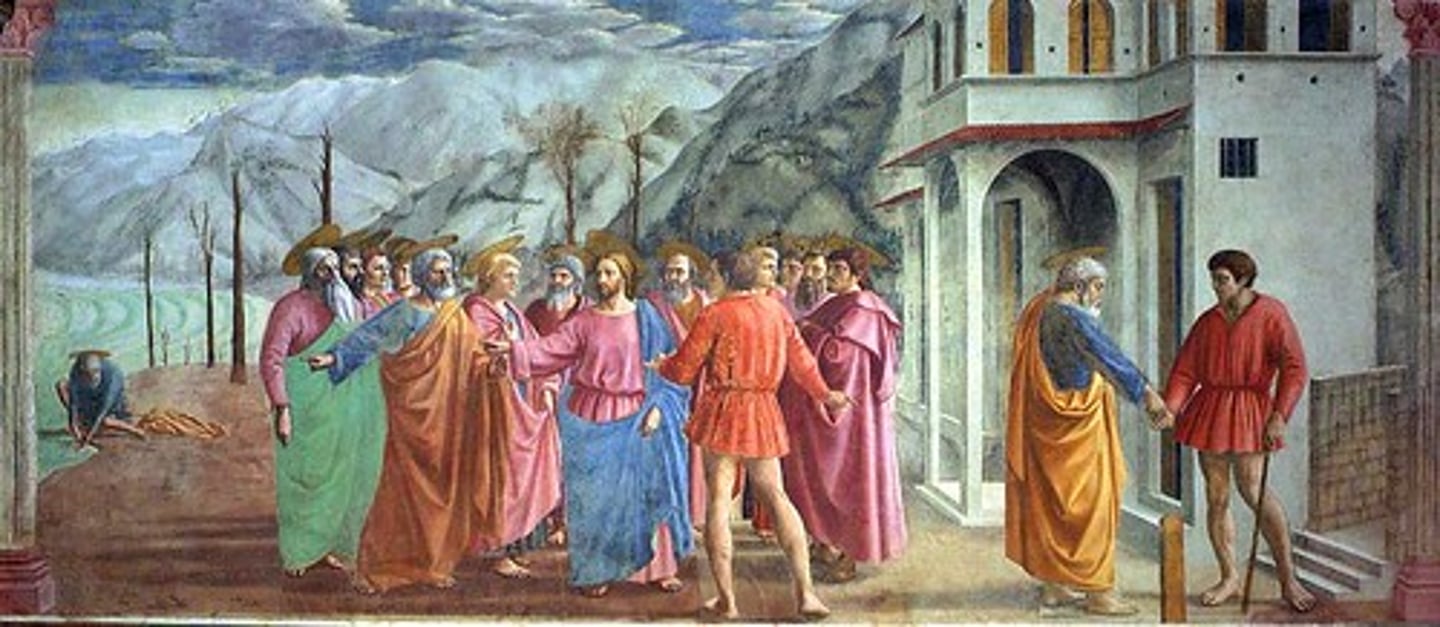
Linear Perspective
A monocular cue for perceiving depth; the more parallel lines converge, the greater their perceived distance.
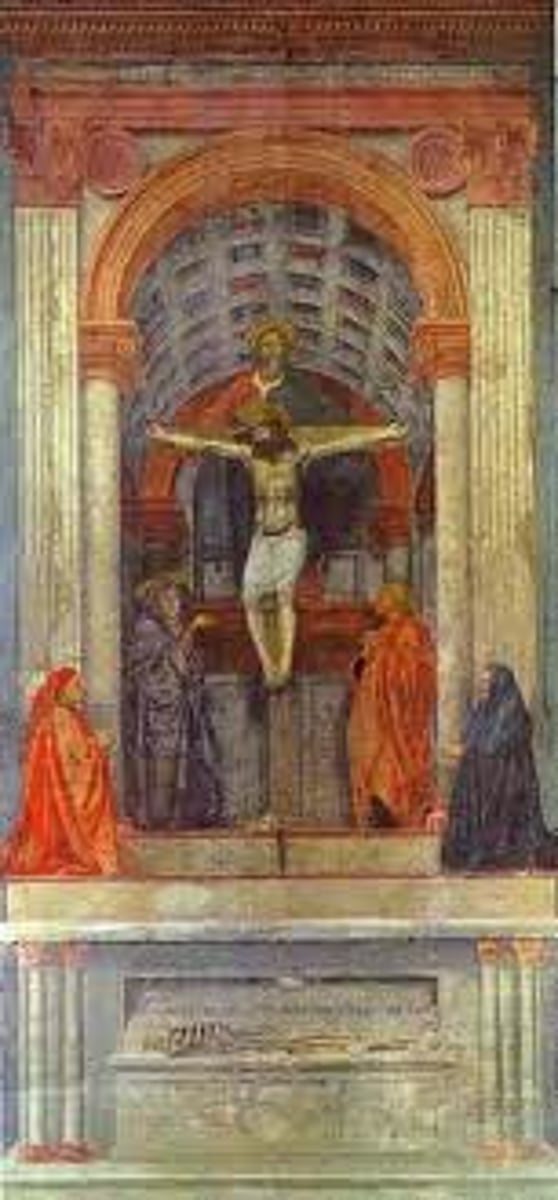
Vanishing Point
A vanishing point is a point in space, usually located on the horizon, where parallel edges of an object appear to converge.
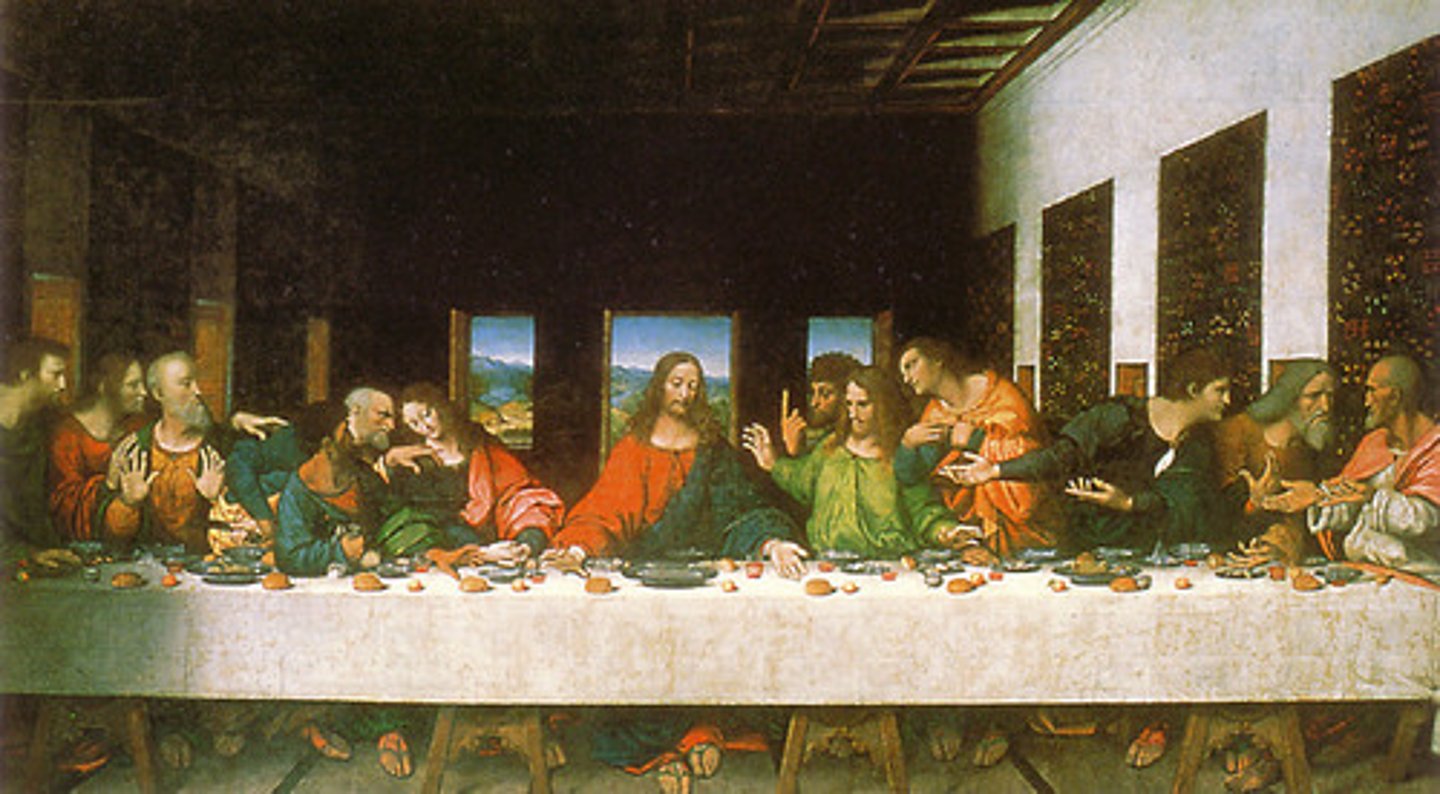
Protestand Reformation
a protest that spread through western europe and started a great revolt against the church
Counter Reformation
Catholic Church's attempt to stop the protestant movement and to strengthen the Catholic Church. The first meeting for the Council of Trent began this reformation.
Genre Painting
painting in which scenes of everyday life are depicted
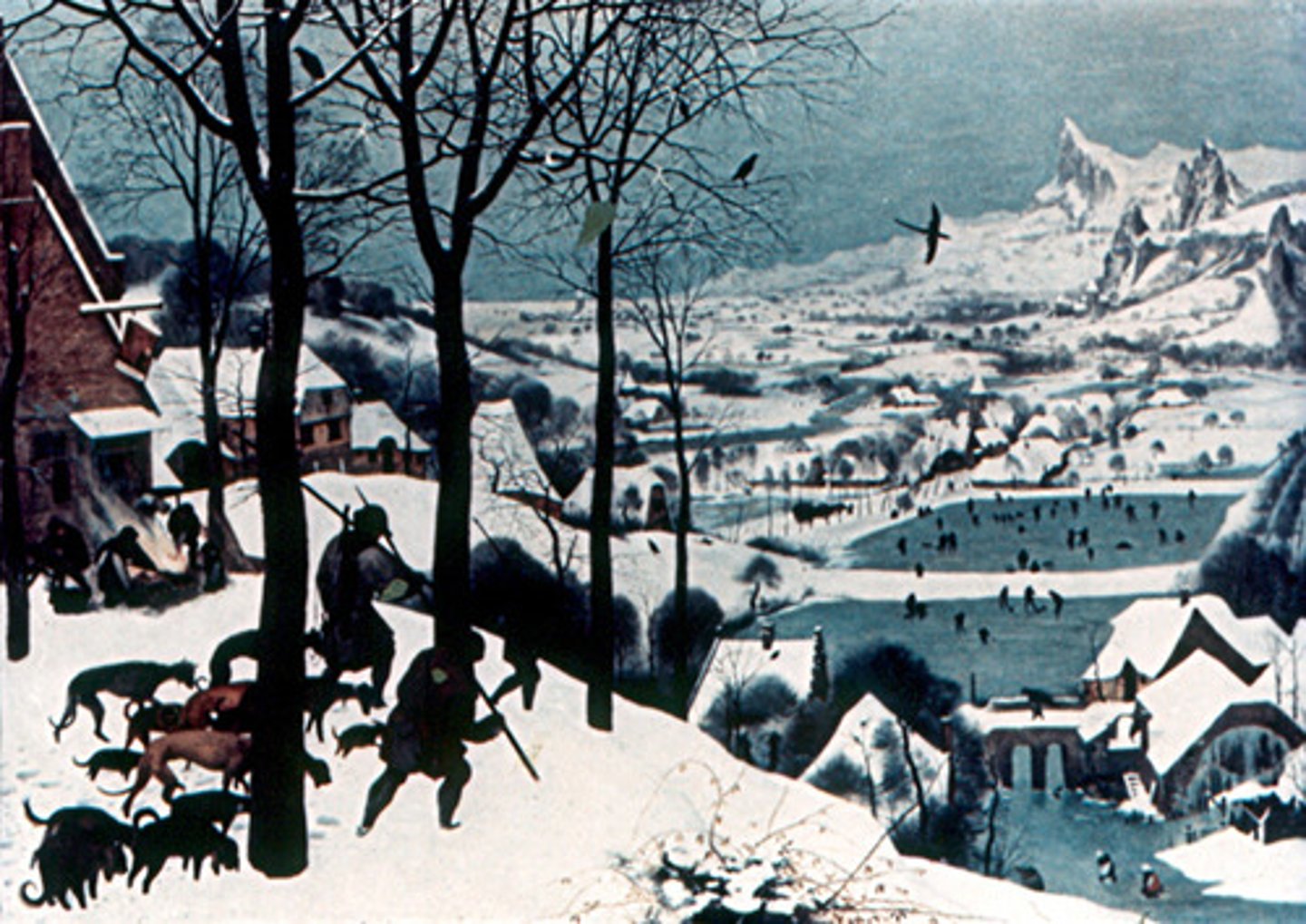
Iconoclasm
A belief that the practice of worshiping and honoring objects such as icons was sinful.
Chateau
A castle or manor-house.
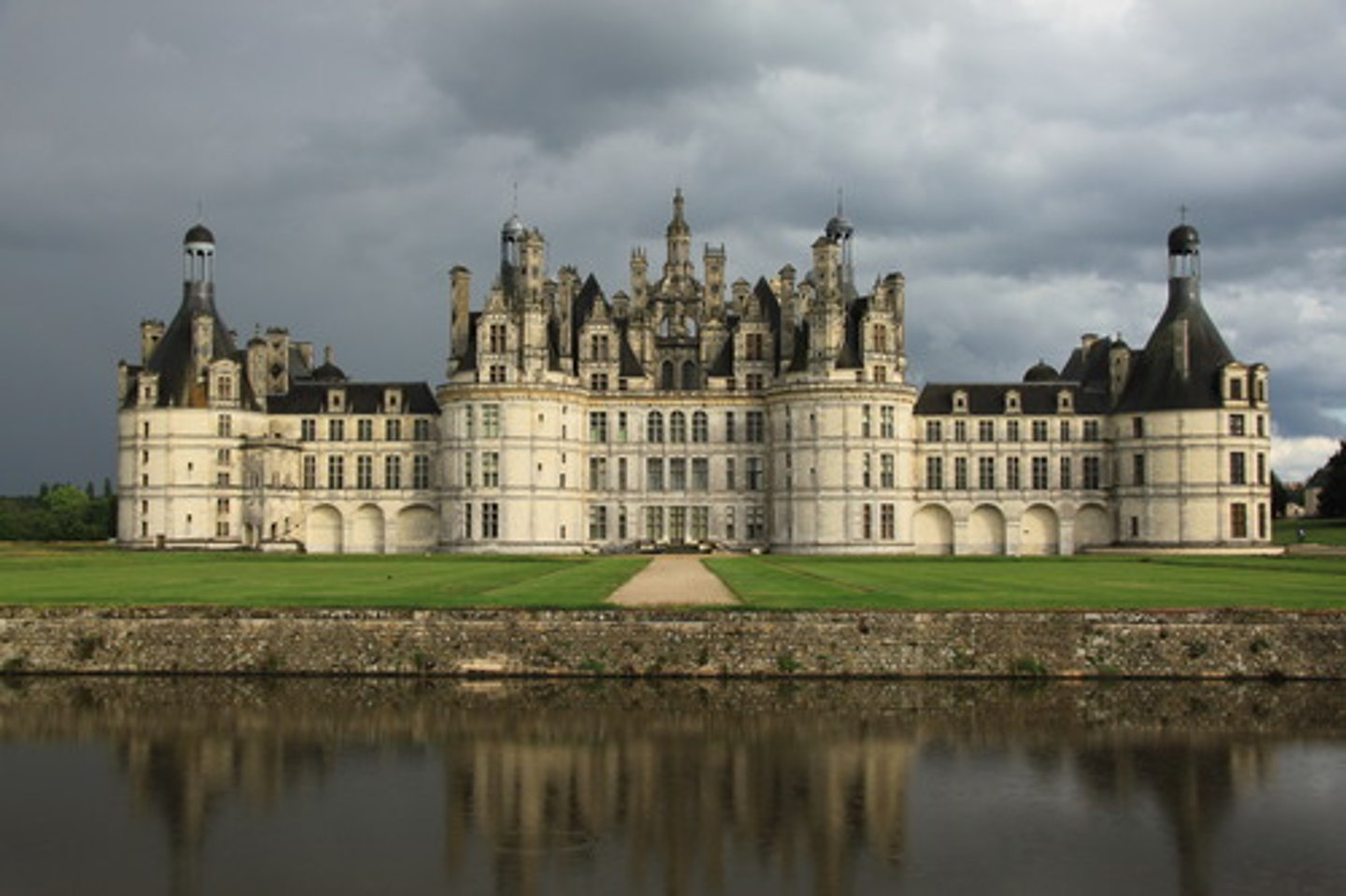
Momento Mori
Latin, "reminder of death." In painting, a reminder of human mortality, usually represented by a skull.
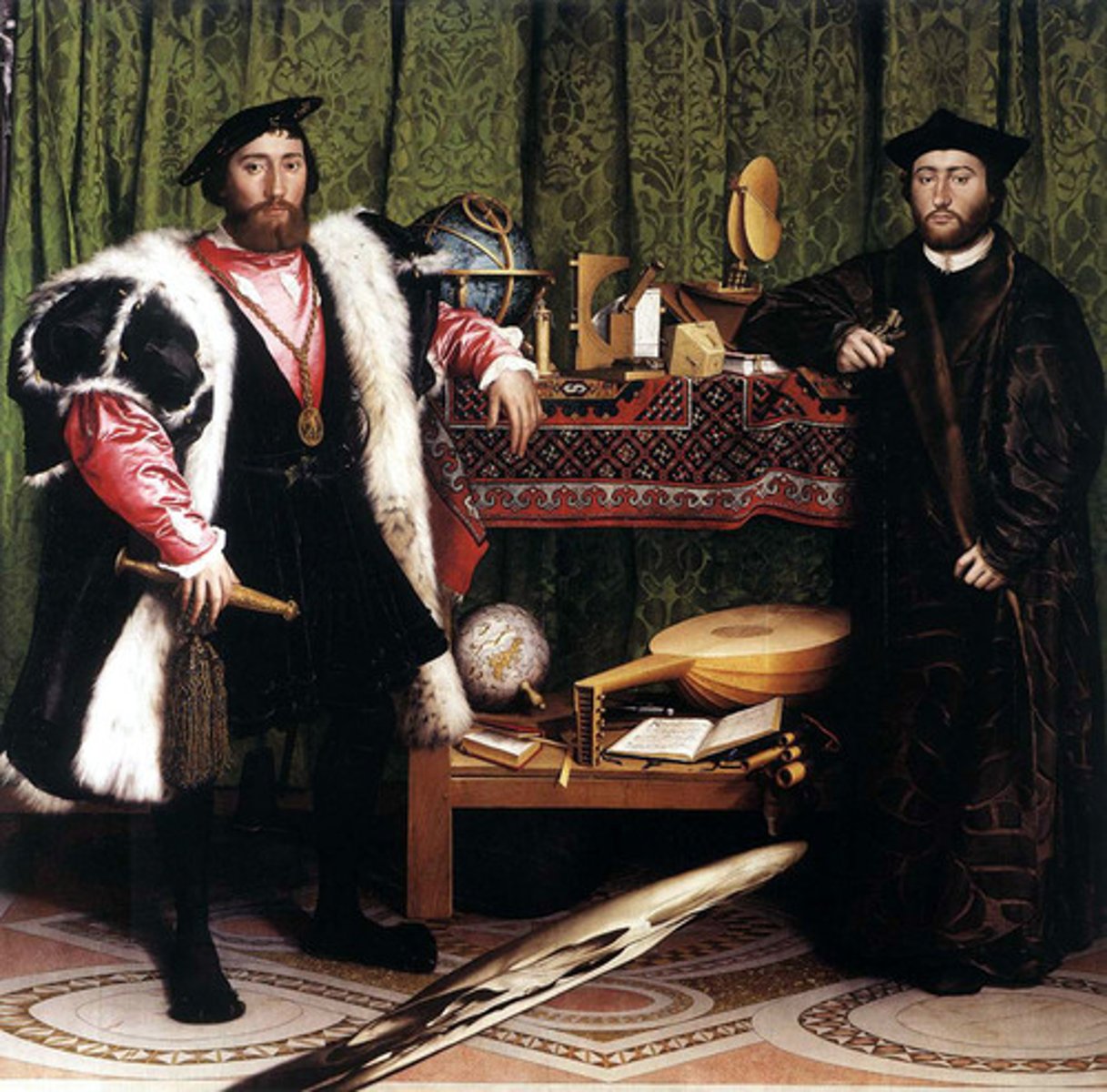
Cimabue
One of first artists to break away from Italio-Byzantine style, Giotto's teacher,
Giotto
An artist who led the way into realism; his treatment of the human body and face replaced the formal stiffness and artificiality that had long characterized the representation of the human body; used chiaroscuro
Duccio
International Gothic Style, French Gothic
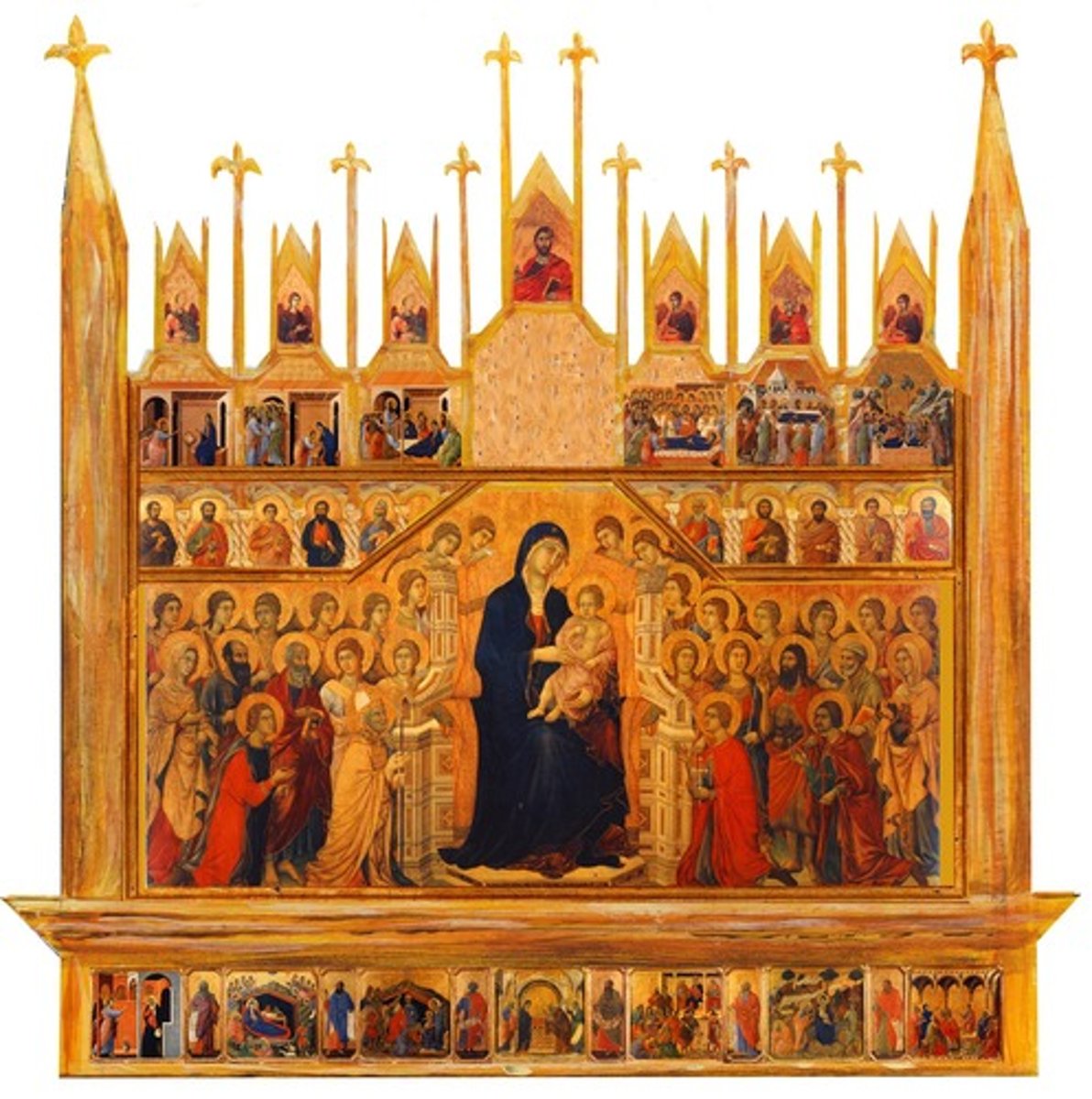
Simone Martini
Duccio's student/successor, Most famous painter of the Sienese School
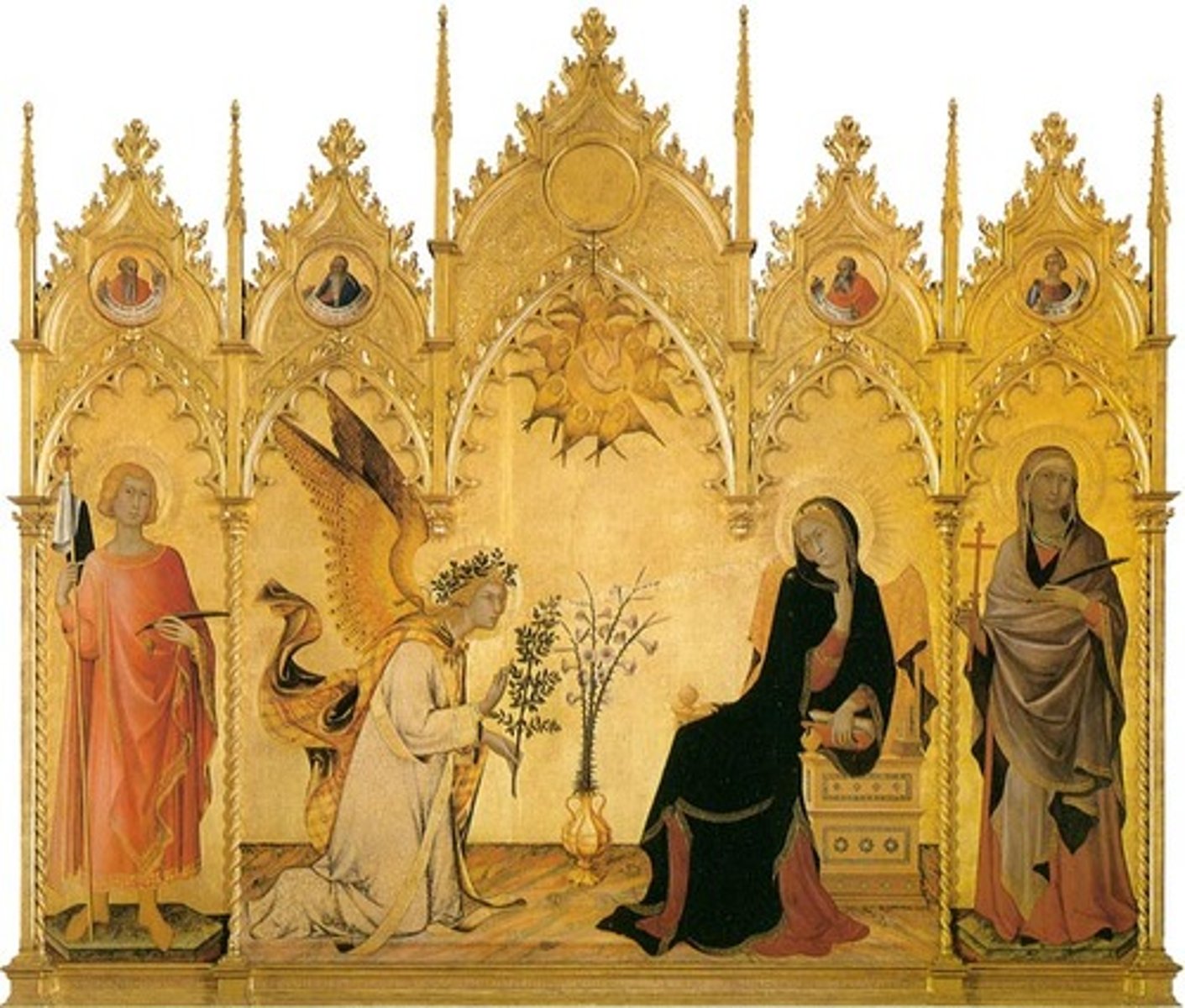
Jan van Eyck
Flemish painter who was a founder of the Flemish school of painting and who pioneered modern techniques of oil painting, lots of portraiture, dark colors.
Rogier van der Weyden
Early Netherlandish painter. His surviving works consist mainly of religious triptychs, altarpieces and commissioned single and diptych portraits
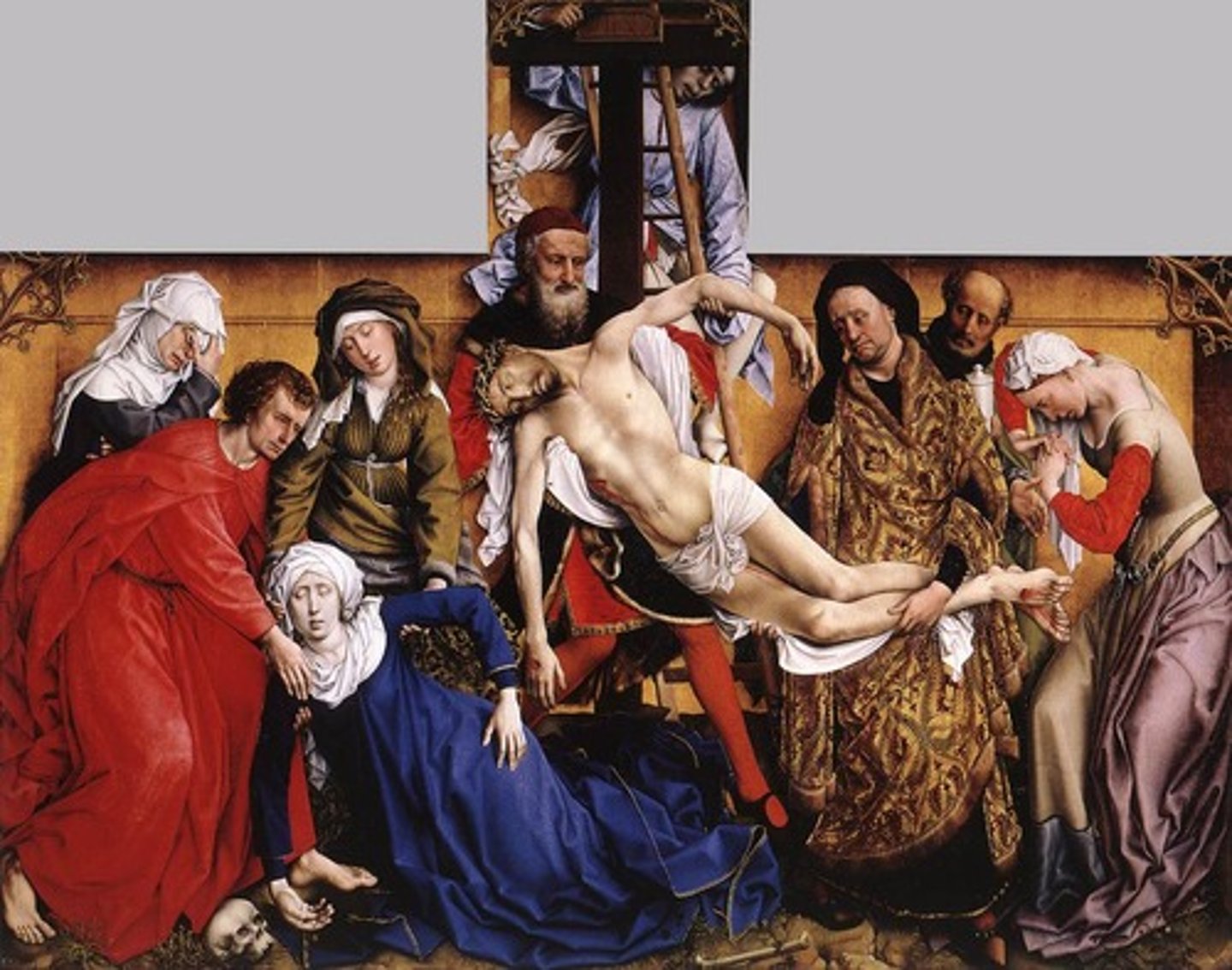
Filippo Brunelleschi
Florentine architect who was the first great architect of the Italian Renaissance; built first dome over Cathedral of Florence
Michelozzo Bartolomeo
Built Palazzo Medici-Riccardi In Florence
Donatello
(1386-1466) Sculptor. Probably exerted greatest influence of any Florentine artist before Michelangelo. His statues expressed an appreciation of the incredible variety of human nature.
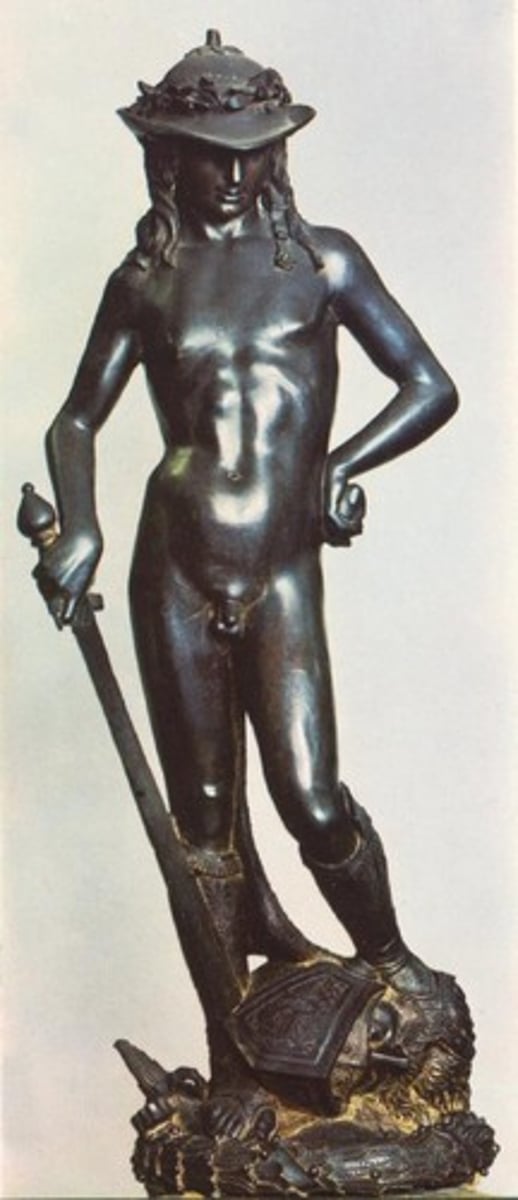
Lorenzo Ghiberti
Italian architect best known for sculpture and metalworking; won the competition that started the Renaissance (designing the Florence baptistry doors)
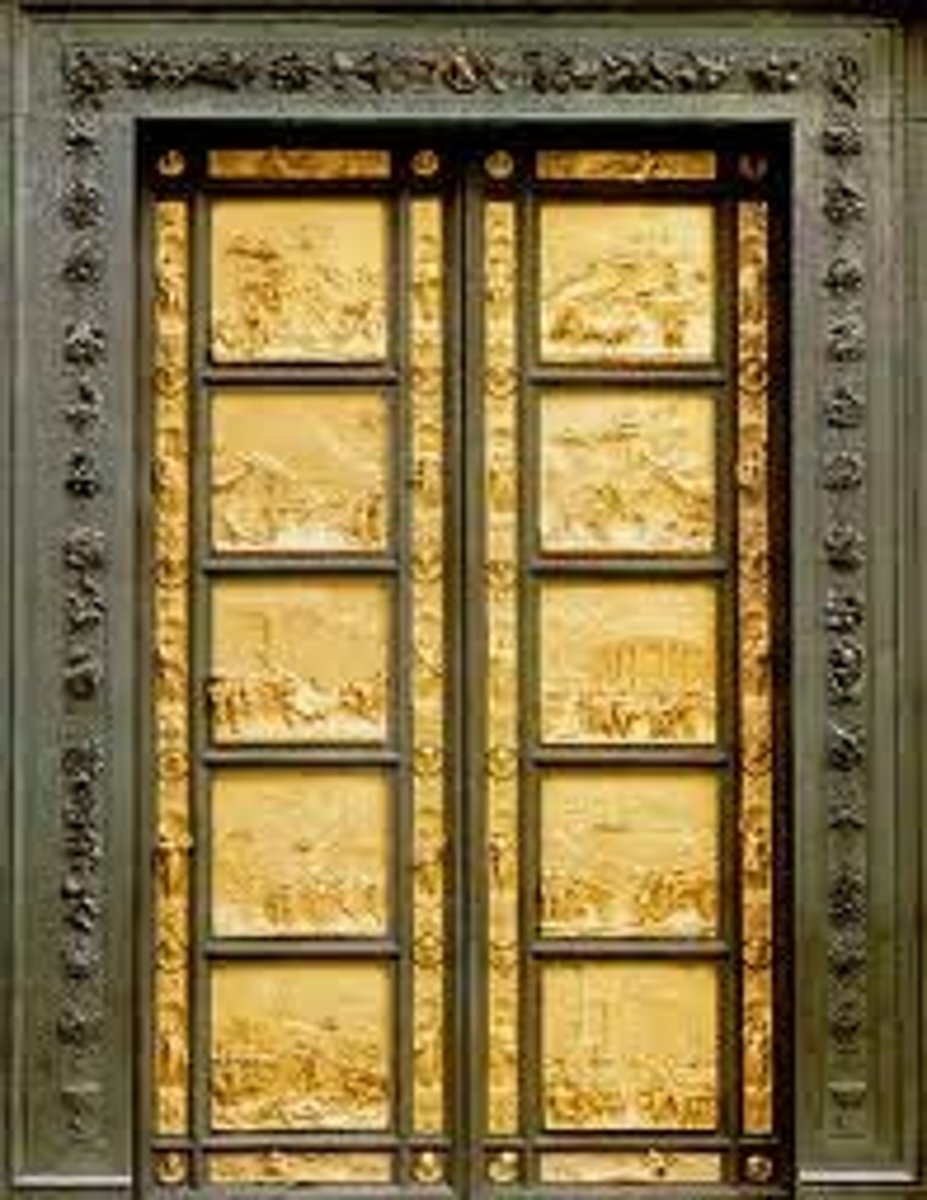
Masaccio
The ranaissance artist who led the way in establishing a new style of employing deep space, modeling , and anatomical correctness.
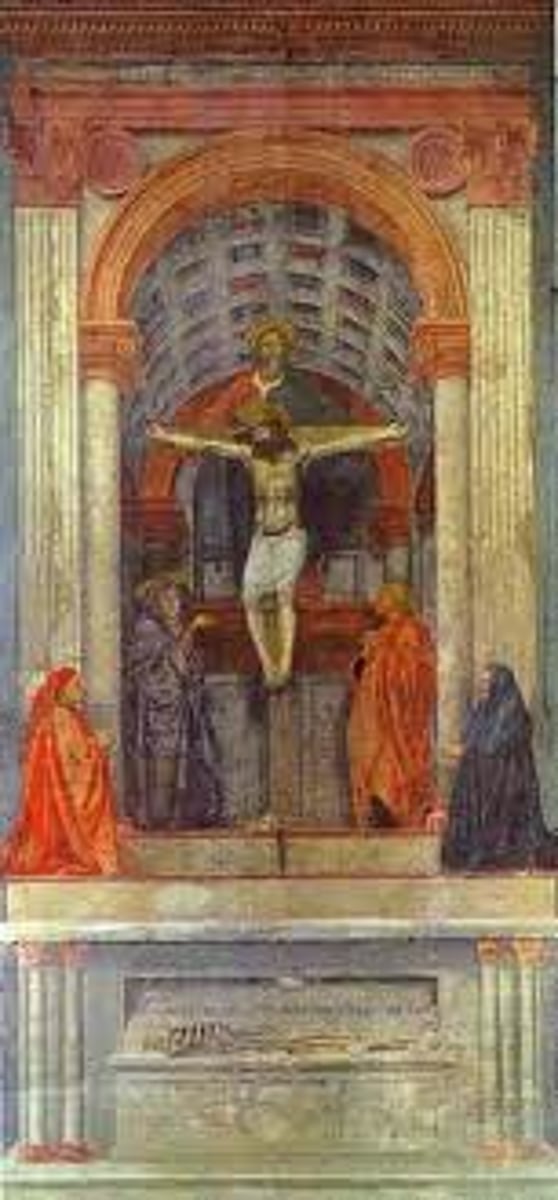
Sandro Botticelli
(1445-1510) A painter who used color, made many paintings on an allegorical level, took inspiration from greek mythology. More concerned with grace and elegance, works: birth of Venus
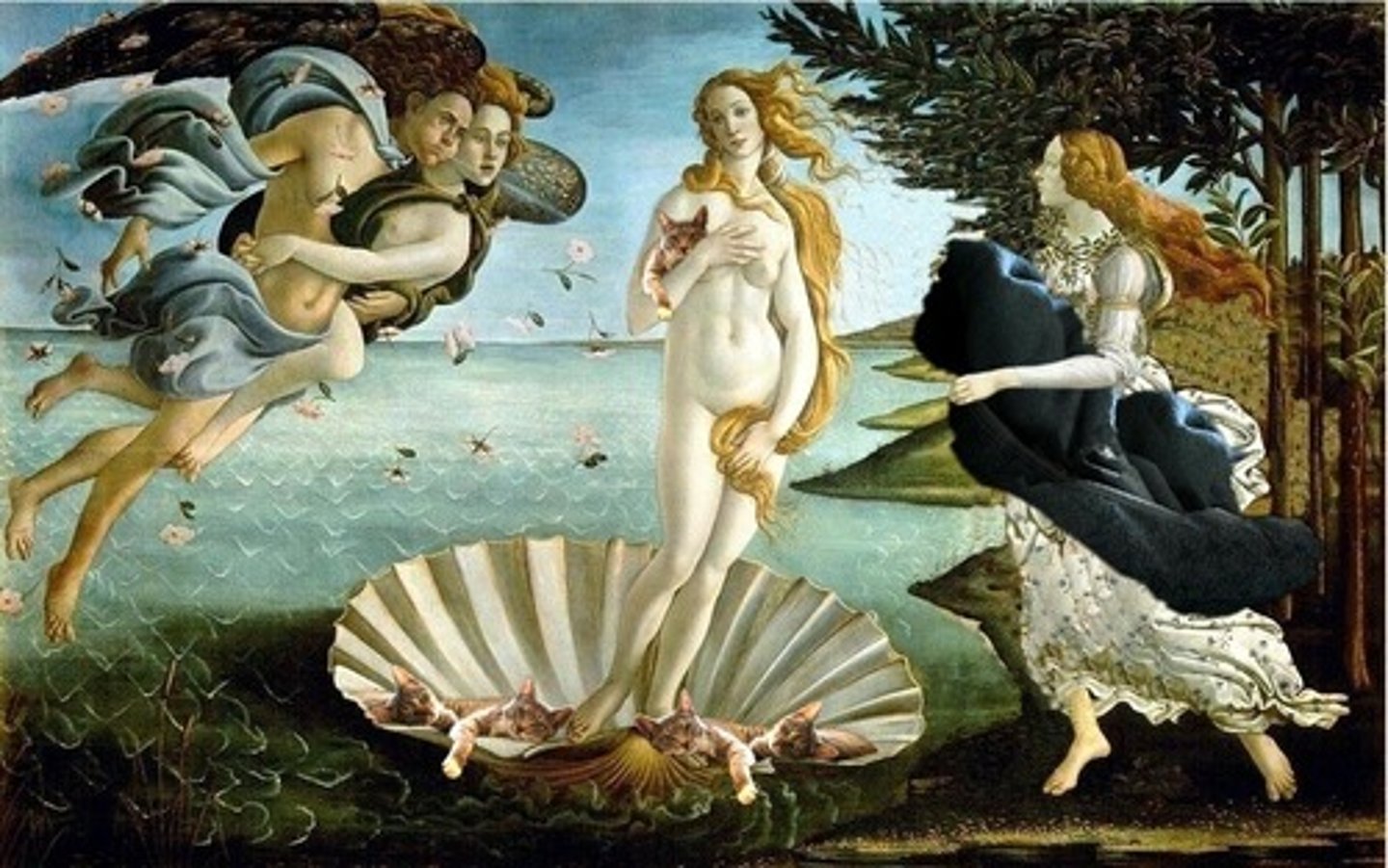
Leonardo da Vinci
Italian painter, engineer, musician, and scientist. The most versatile genius of the Renaissance, Leonardo filled notebooks with engineering and scientific observations that were in some cases centuries ahead of their time.
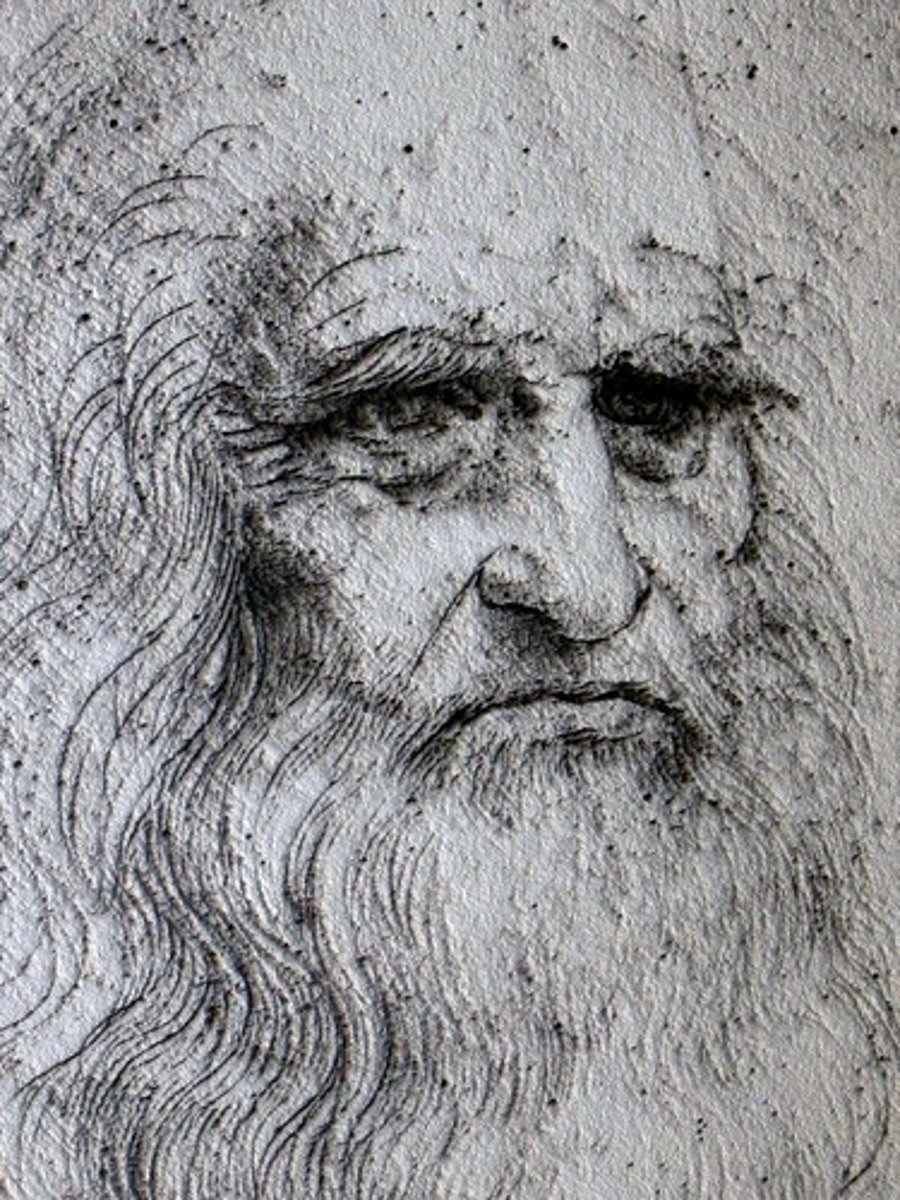
Raphael
Well-known for Madonnas, humanized portrayals of the Virgin Mary with the baby Jesus.
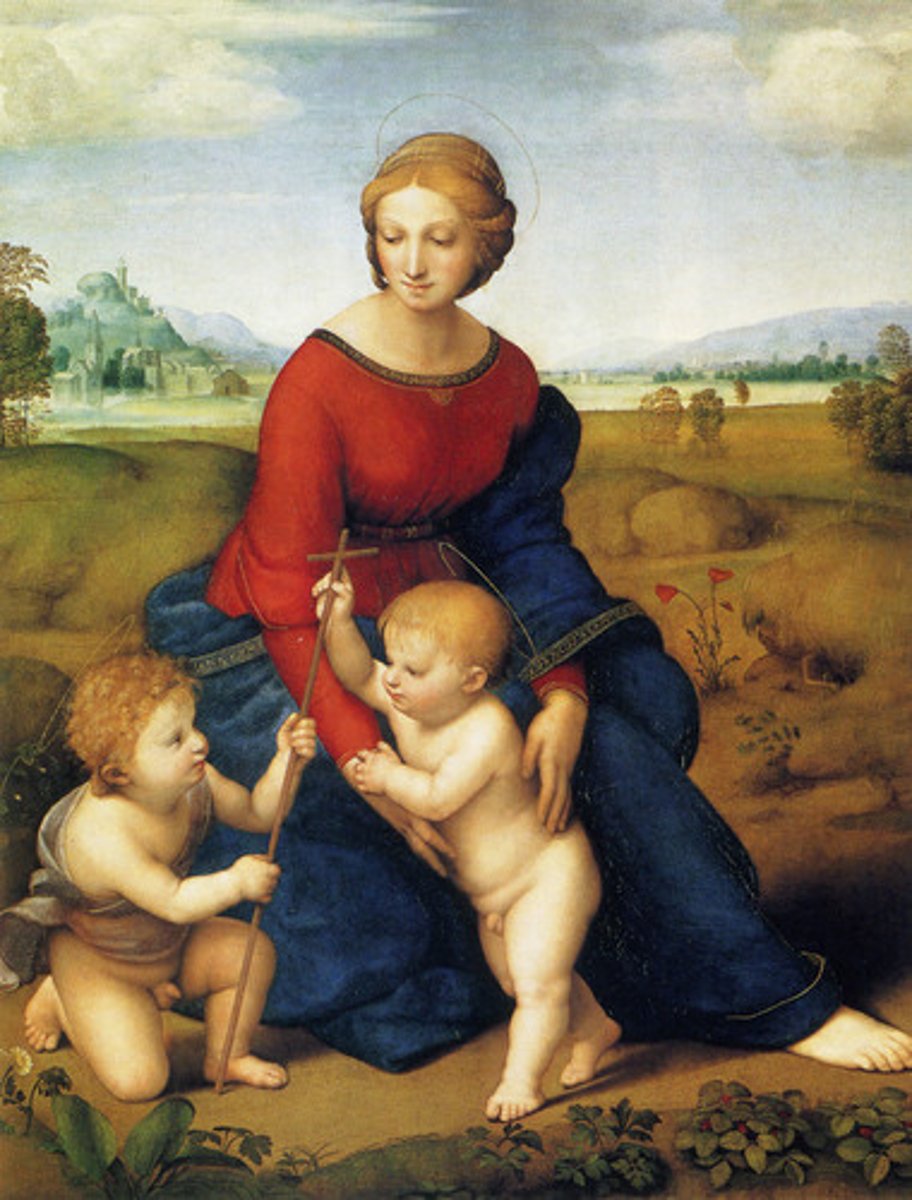
Michelangelo
Italian Renaissance sculptor, painter, poet, engineer, and architect; famous works include the mural on the ceiling of the Sistine Chapel and the sculpture of the David. Obsessed with the human form. Moved away from perfect proportions.

Titian
A Renaissance painter in Venice, used vivid color, sfumato, and movement. (Titian used a red oil base to create a luminous image (Venetian glow))
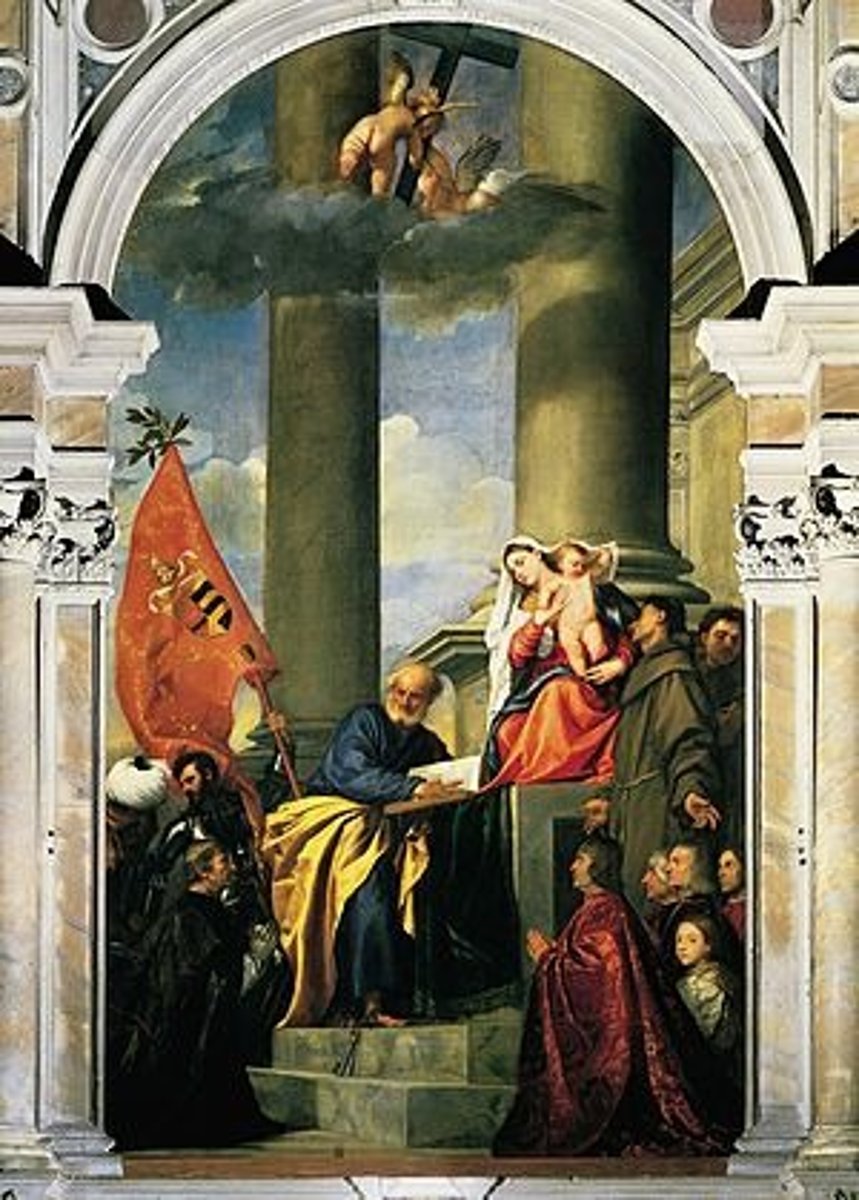
Palladio
Was an Italian architect active in the Republic of Venice. Palladio, influenced by Roman and Greek architecture, primarily by Vitruvius, is widely considered the most influential individual in the history of Western architecture.
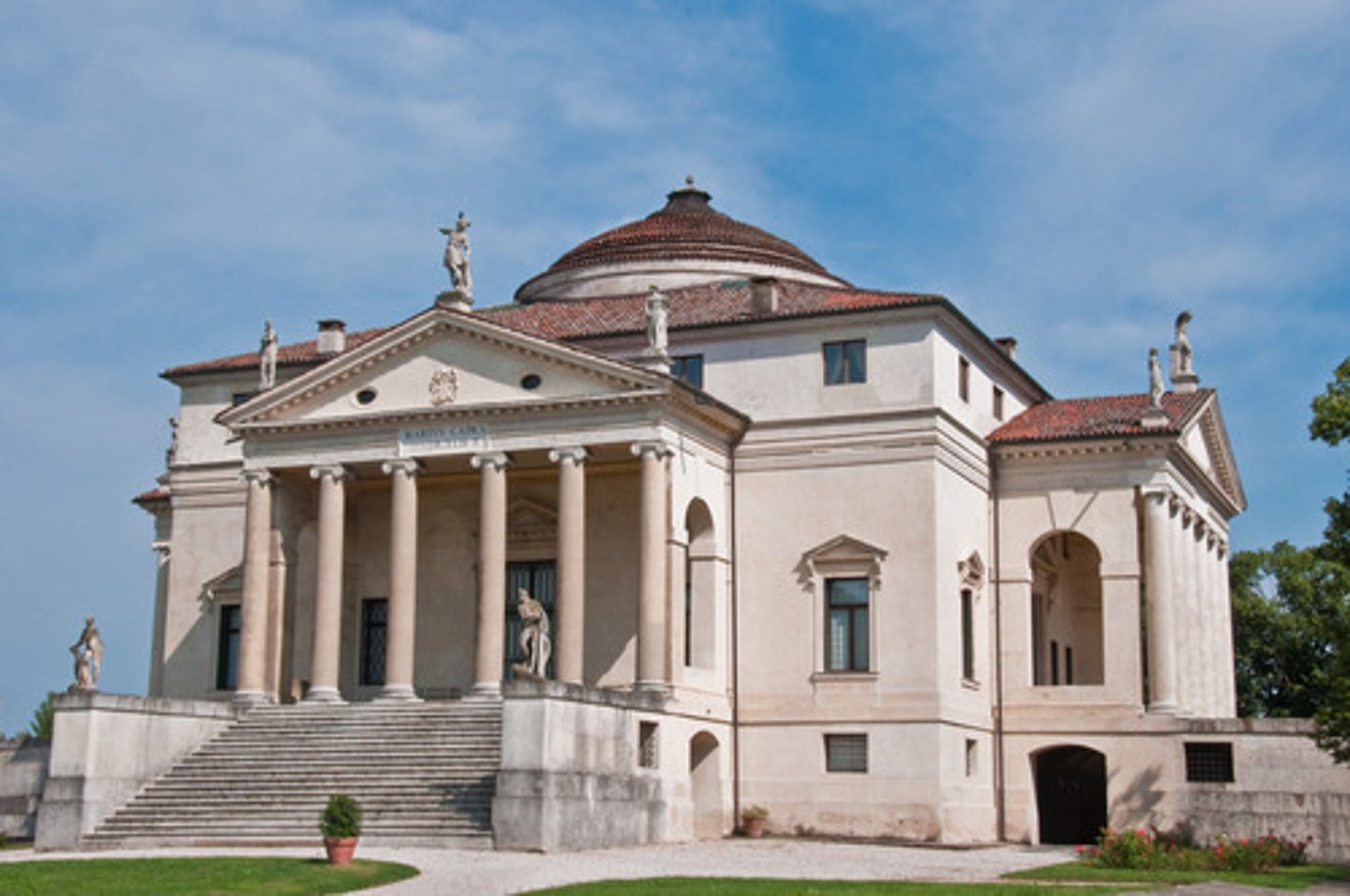
Albrecht Durer
One of the famous artists in northern Renaissance, who also study anatomy to paint people more realistically
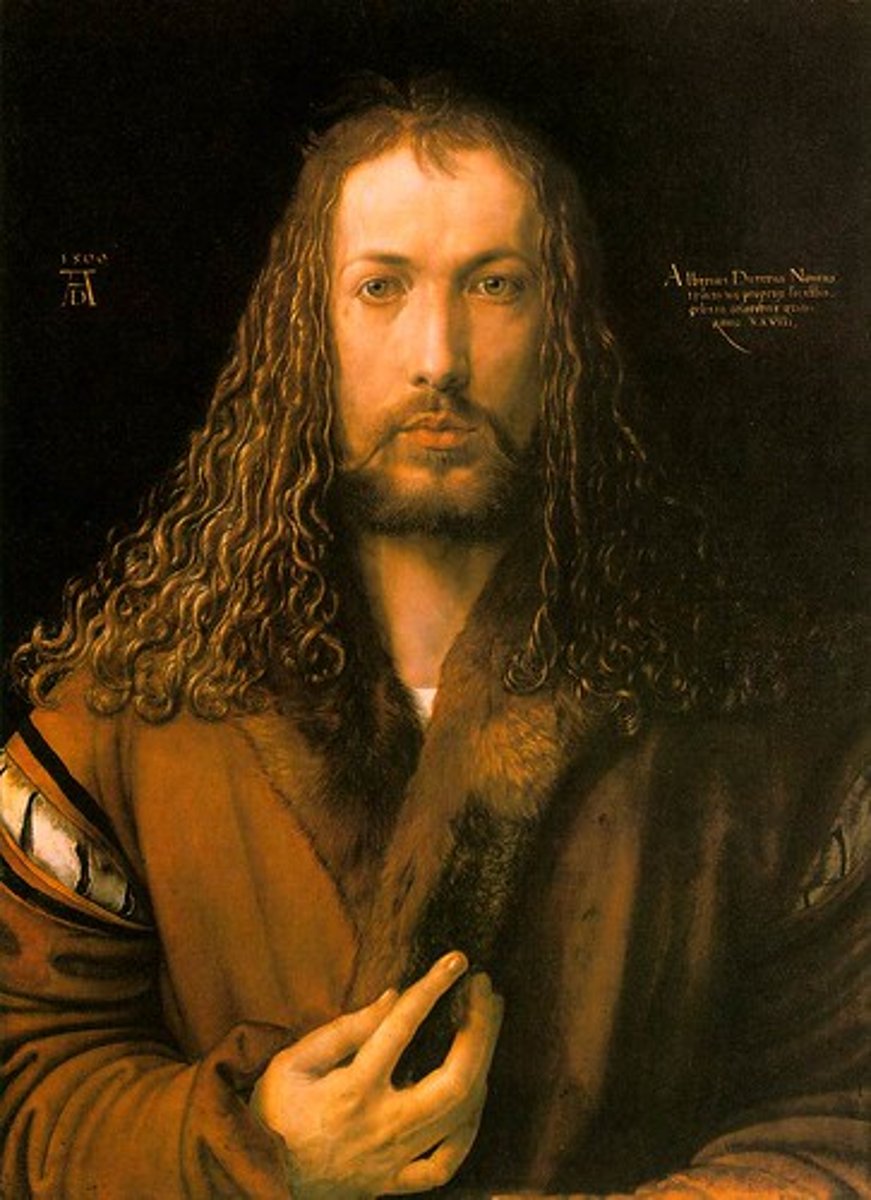
El Greco
Spanish painter (born in Greece) remembered for his religious works characterized by elongated human forms and dramatic use of color (1541-1614)
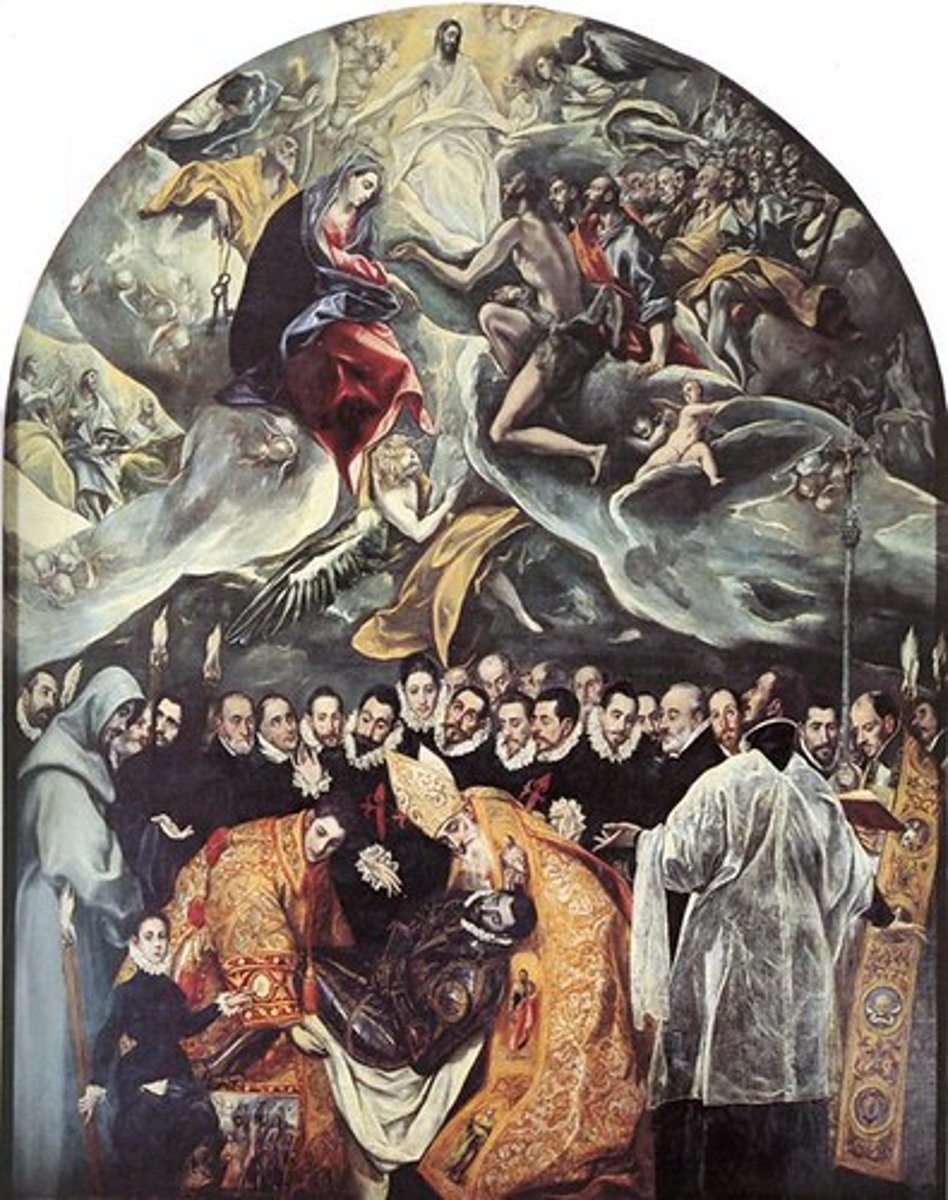
Bosch
Bosch was a Dutch painter who was a surrealist before there was surrealism. He had a liking for huge, detailed scenes focused on the macabre: hell, death, and torture.

Quinten Massys
scene of everyday life: financial transaction, detailed rendering of the figures, objects and setting, comments of netherlandish values, financial transactions distracted from religious values

Pieter Brugel
Flemish Painter who painted everyday lives of Peasants

Sofonisba Anguissola
first woman artist to gain an international reputation. Woman who was known for making portraits and paintings of her family/famous people.
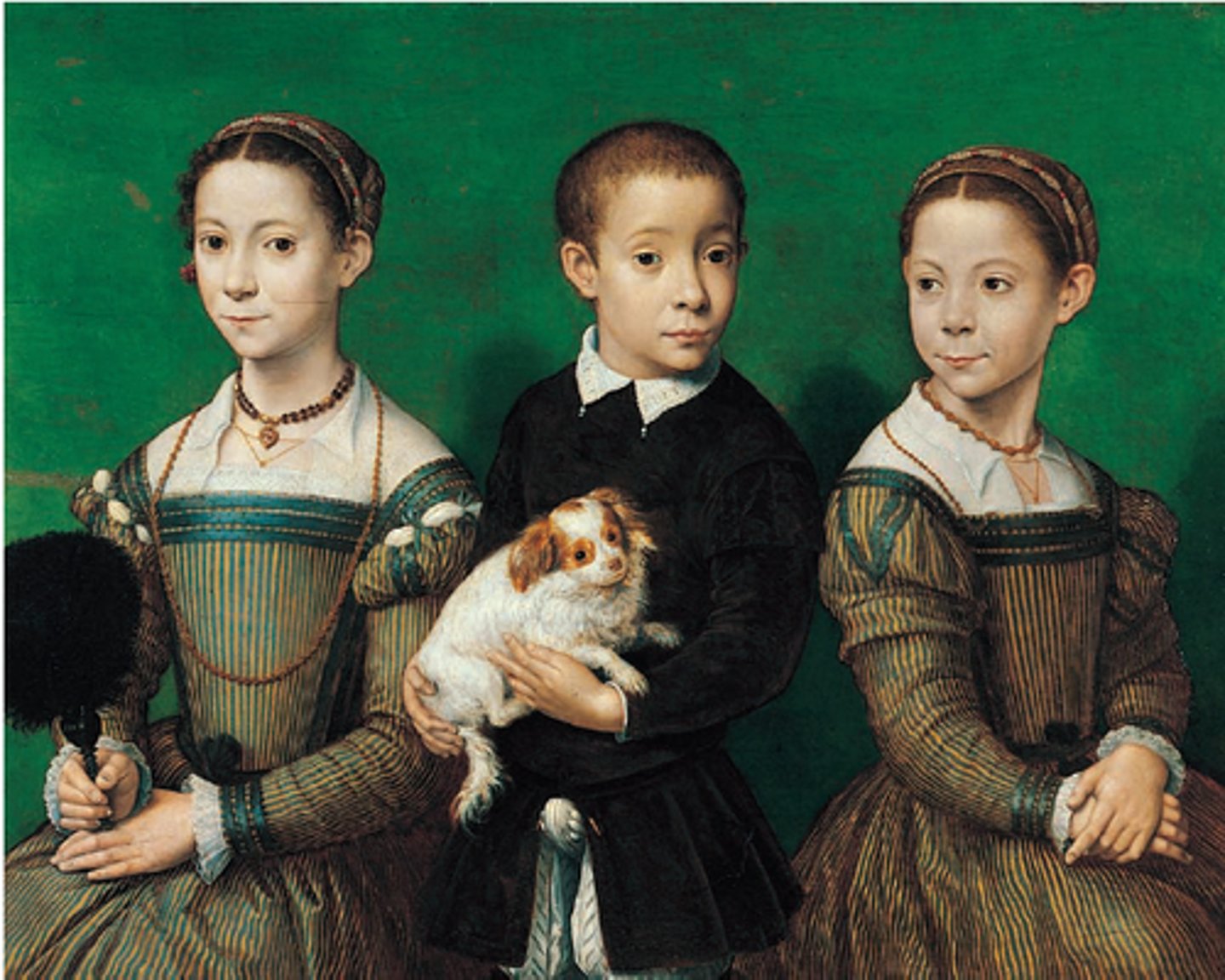
Byzantine Style
Used lots of gold leaf to evoke the heavenly realm, used hierarchy scale, lacked naturalism (2 dimensional)
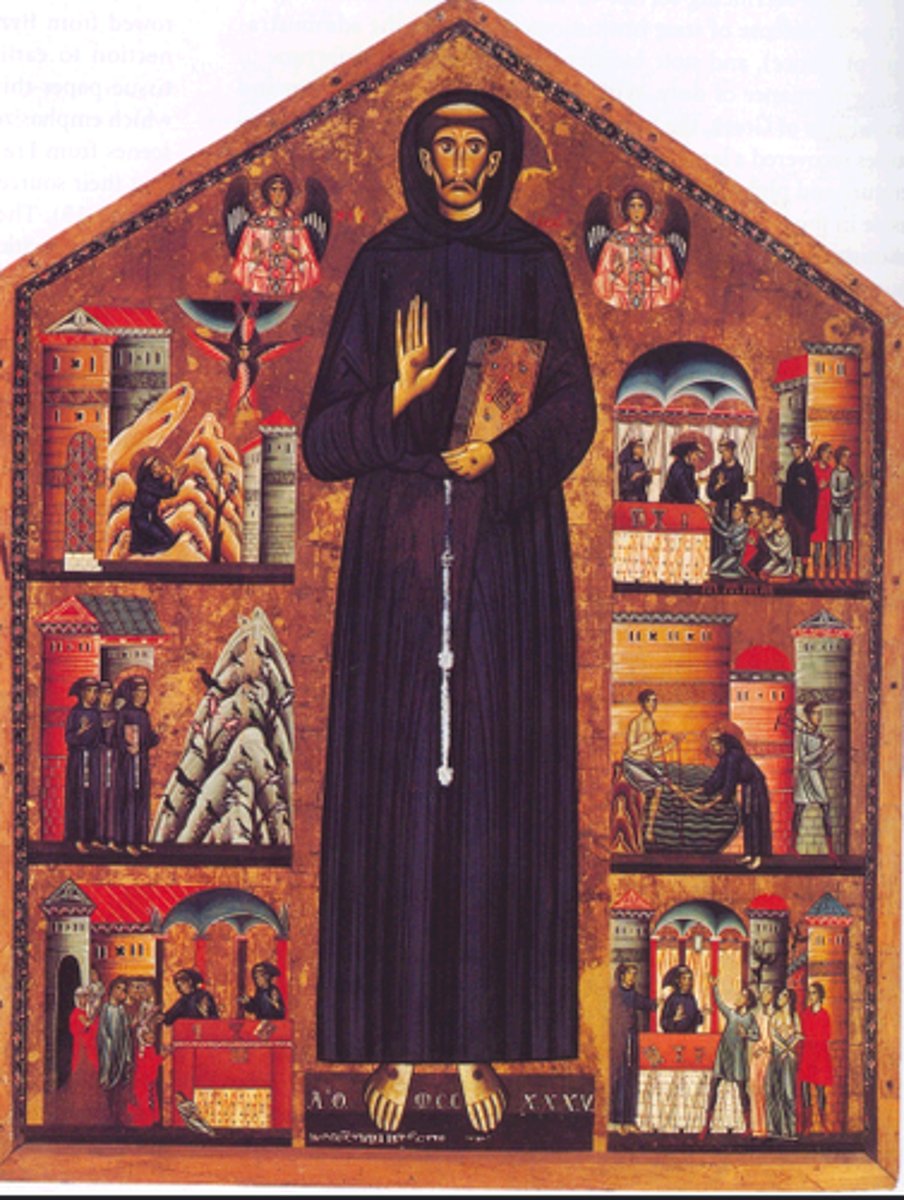
14th Century Florence
Start of the Renaissance, Byzantine style, started to become more naturalistic, lots of religious works
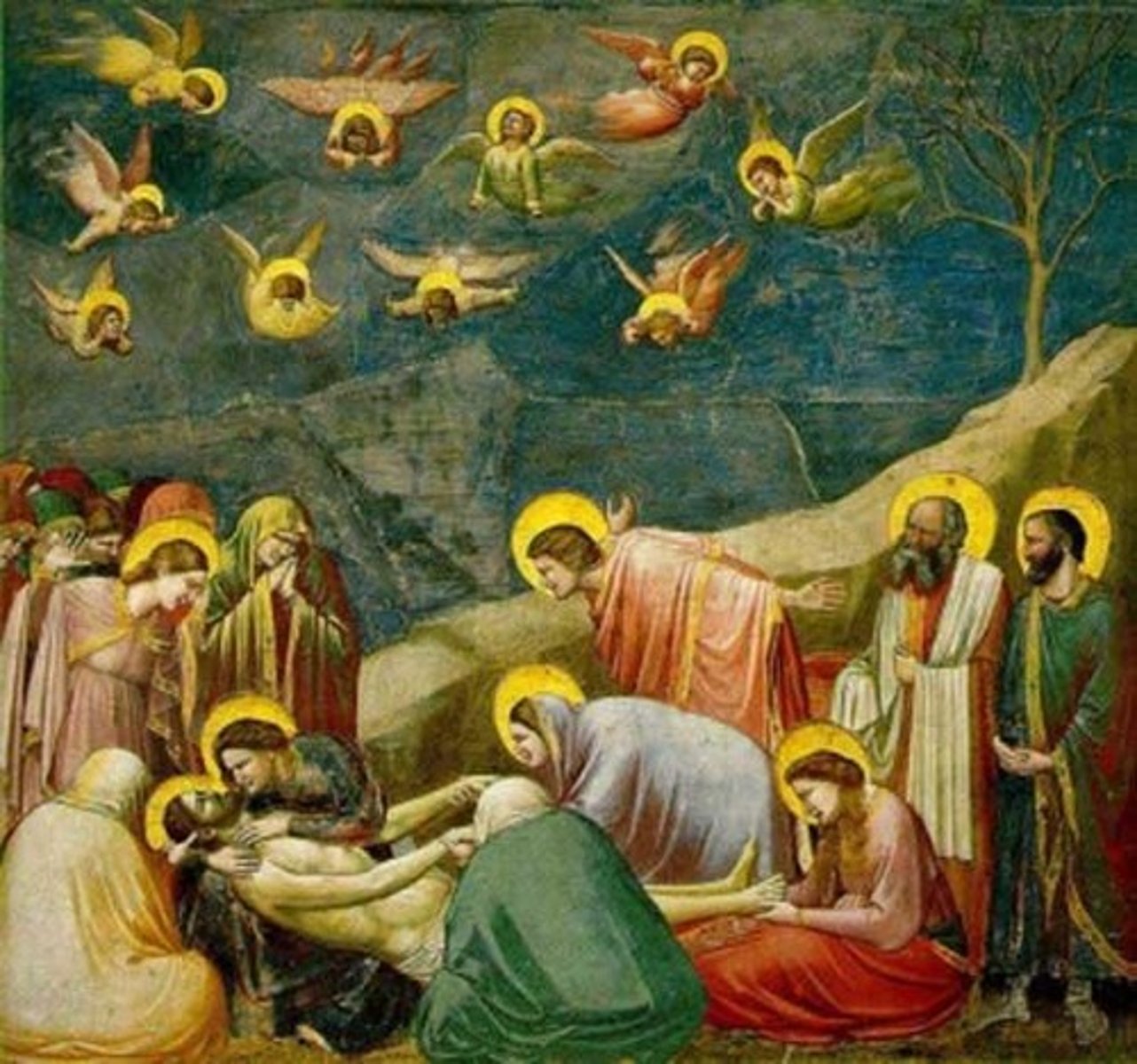
14th Century Siena
Used International Gothic Style, used less gold, more naturalism (Duccio/Simone Martini)

15th Century Northern Art in Eurpore
Religion and politics depicted; invention on oil, printing press, and used greater illusionism (tromp l'oiel." Used more naturalistic styles. (Jan Van Eyck)
Renaissance Art in 15th Century Italy
Greater use of humanism; used Greek mythology and religion as subject matter; started using foreshortening and styles of perspective; used realistic proportions, tromp l'oiel, scientific linear perspective, and nudity in figures. (Lorenzo Ghiberti)
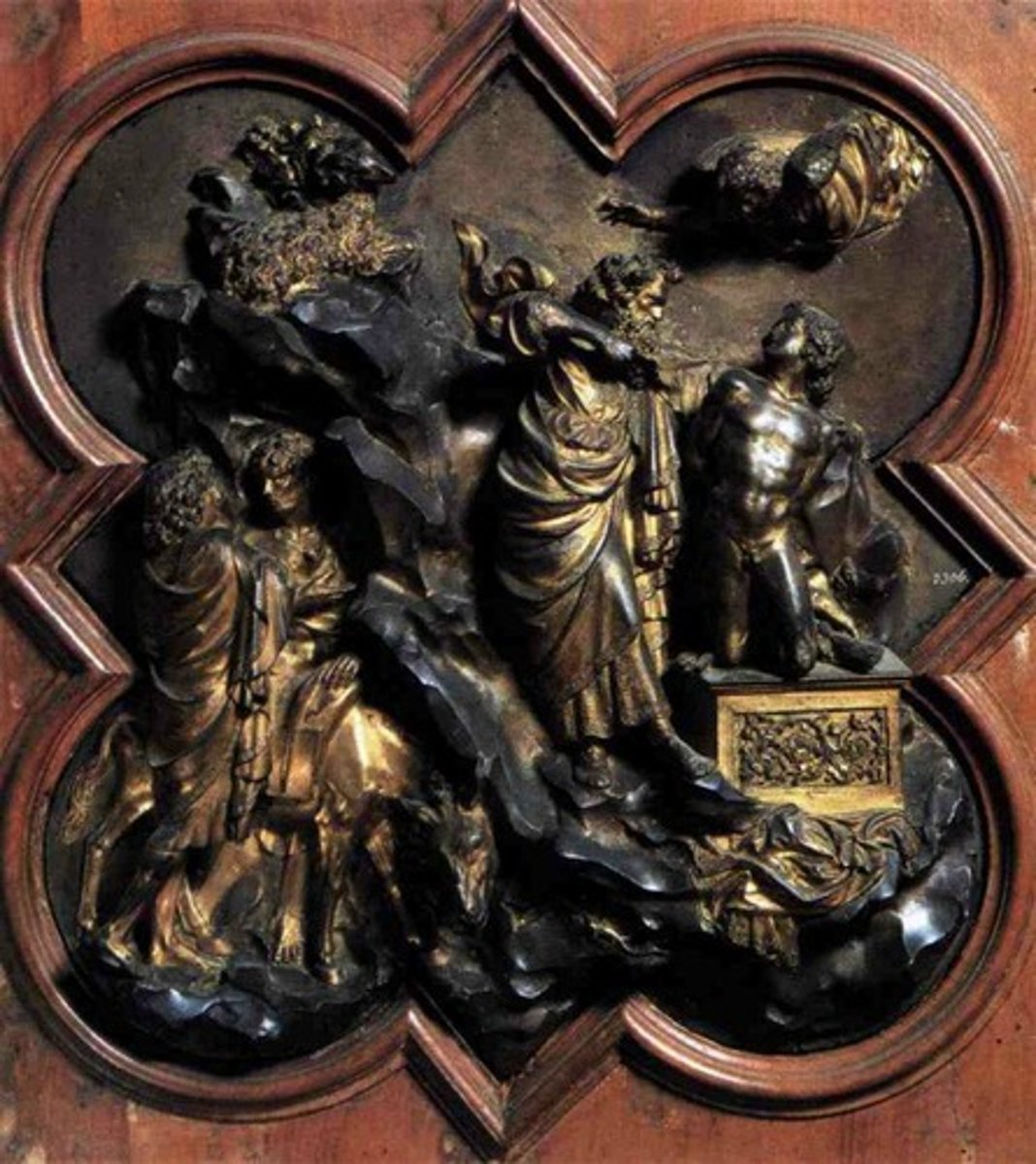
16th Century Art in Italy
Large focus on perfect body proportion (Leonardo), subject matter was Greek mythology or religion. Detailed facial expressions and focus on anatomy.
The Renaissance in Venice
Interested in sfumato, color and light; subject matter was poetry and pleasure of the sense (poesia); less religious and more concerned with mood; lots of sensual nude figures (Titian used a red oil base to create a luminous image (Venetian glow)); used lots of allegory
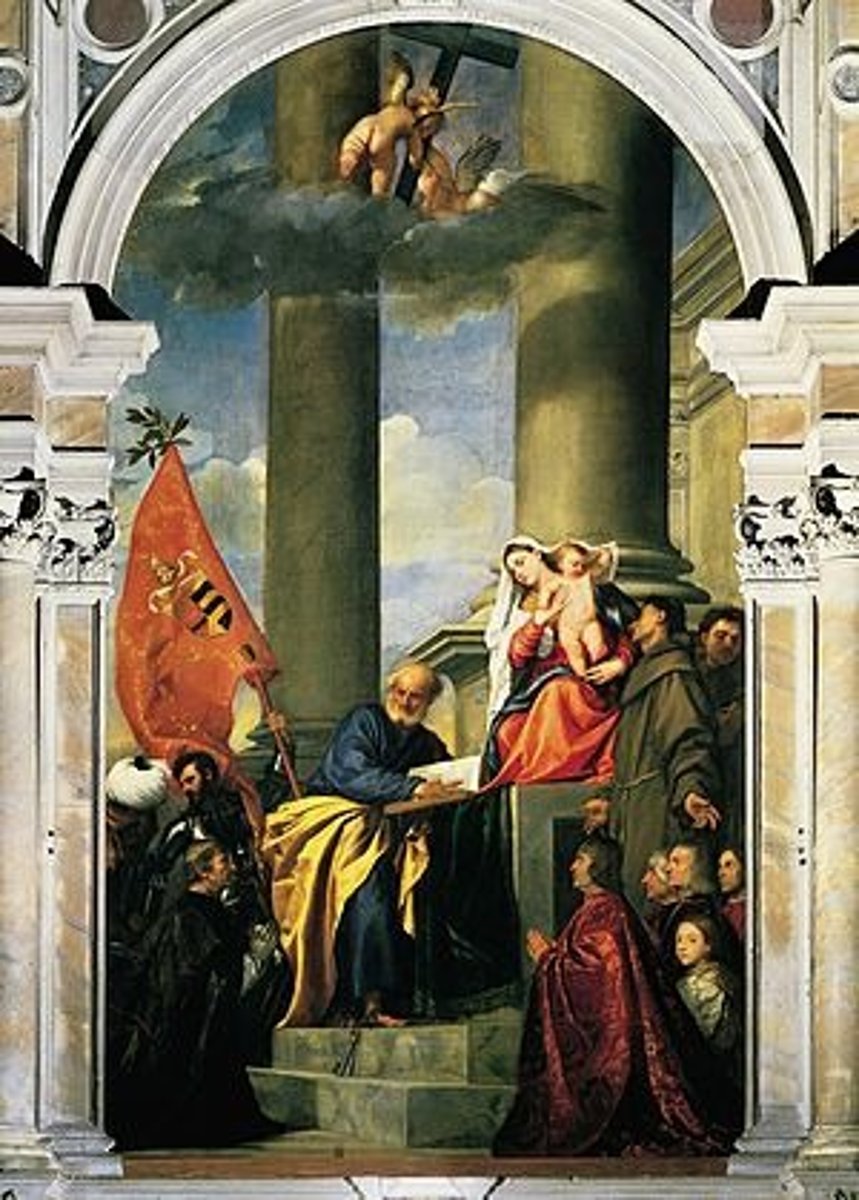
Later 16th Century Venice
Began the use of mannerism;
Mannerism
Artistic movement against the Renaissance ideals of symmetry, balance, and simplicity; went against the perfection the High Renaissance created in art. Used elongated proportions and compression of space. More expressive than realistic. Style that is associated with the death of Rafael. Influenced by Michelangelo.
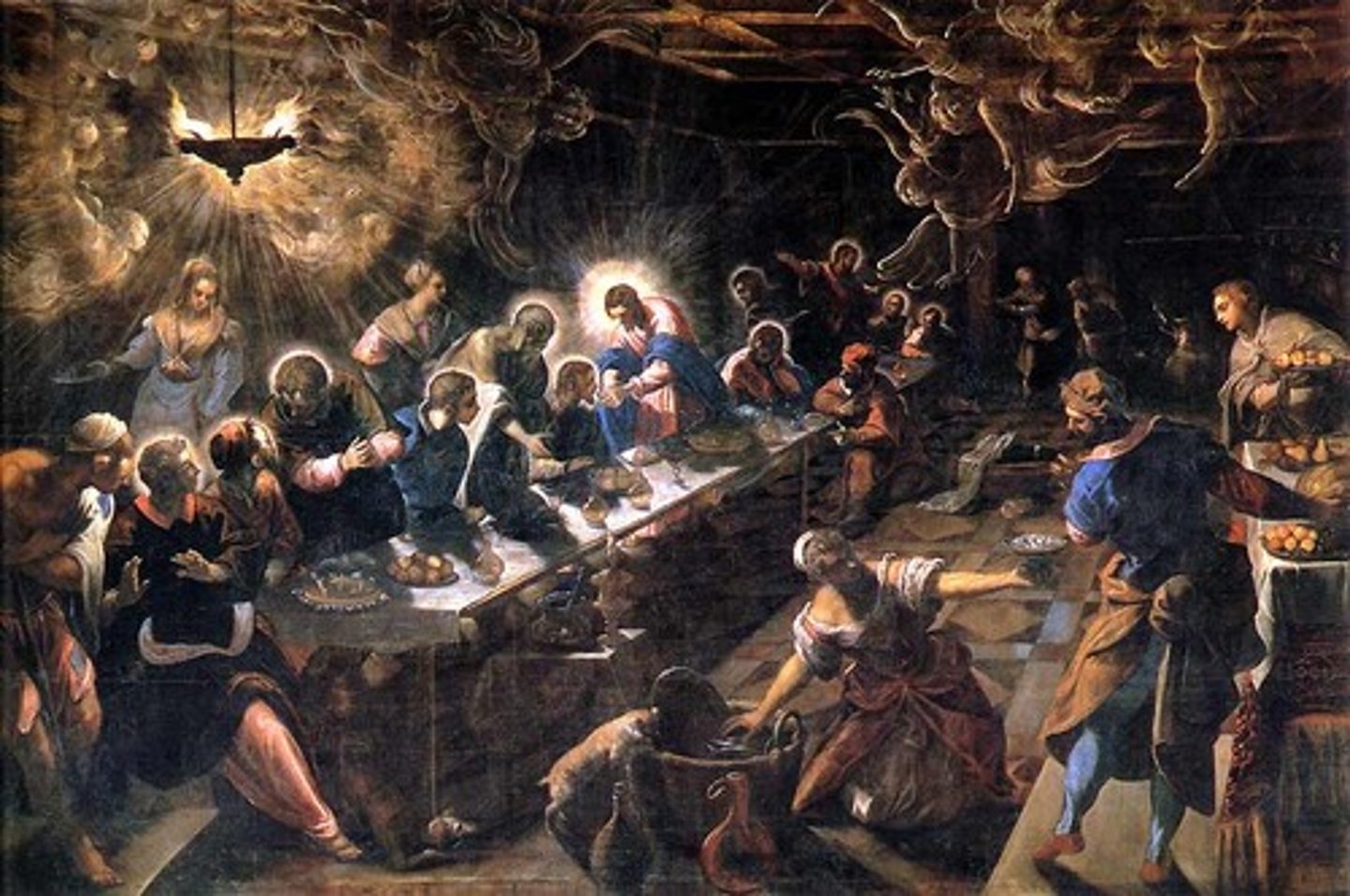
16th Century Art in Northern Europe and Iberian Peninsula
Protestants believed in idolatry (against worshipping images). Martin Luther posted 95 Thesis to reform the church. Humanism began from Italy and influenced by the Italian ideas of proportion. Also played with the ideas of mannerism, realism, and naturalism. (Albert Durer, El Greco, Bosch, Pierter Brugel)
